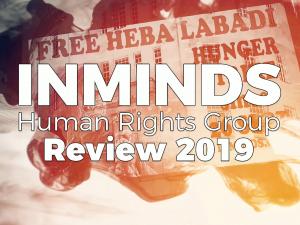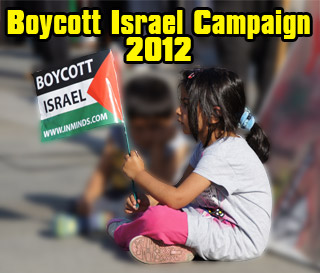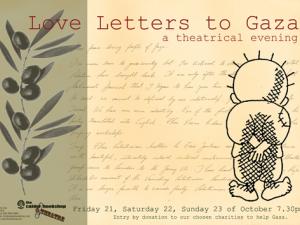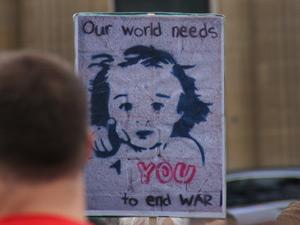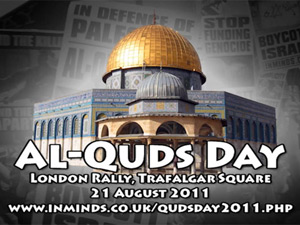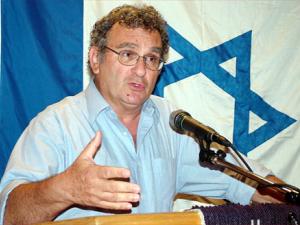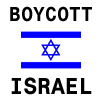
 Innovative Minds © 2014. All Rights Reserved. www.inminds.co.uk | ||||
|
[Other] Ziyarat - A Photo Bloginminds 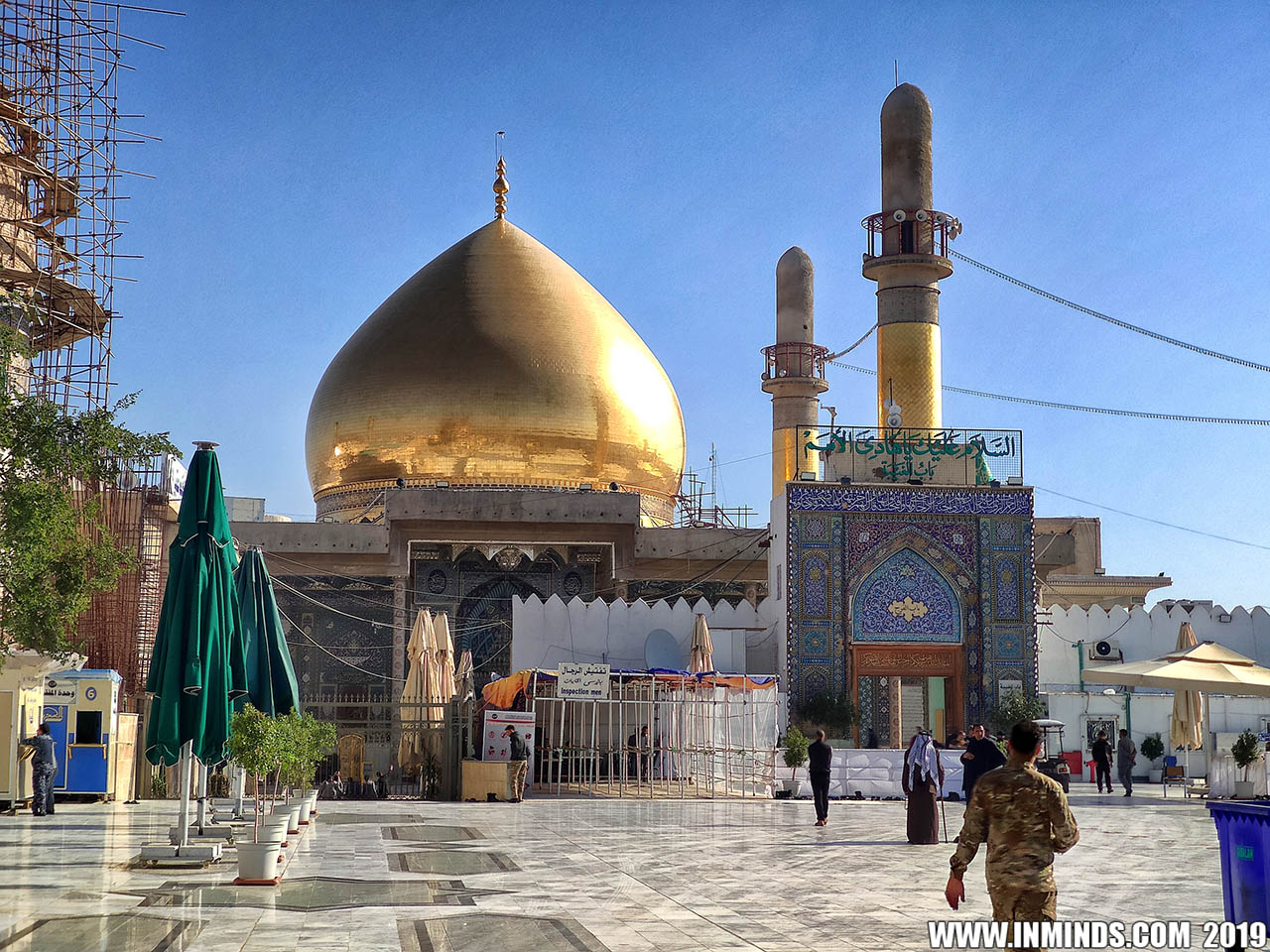 Al Askeri mosque in Samarra 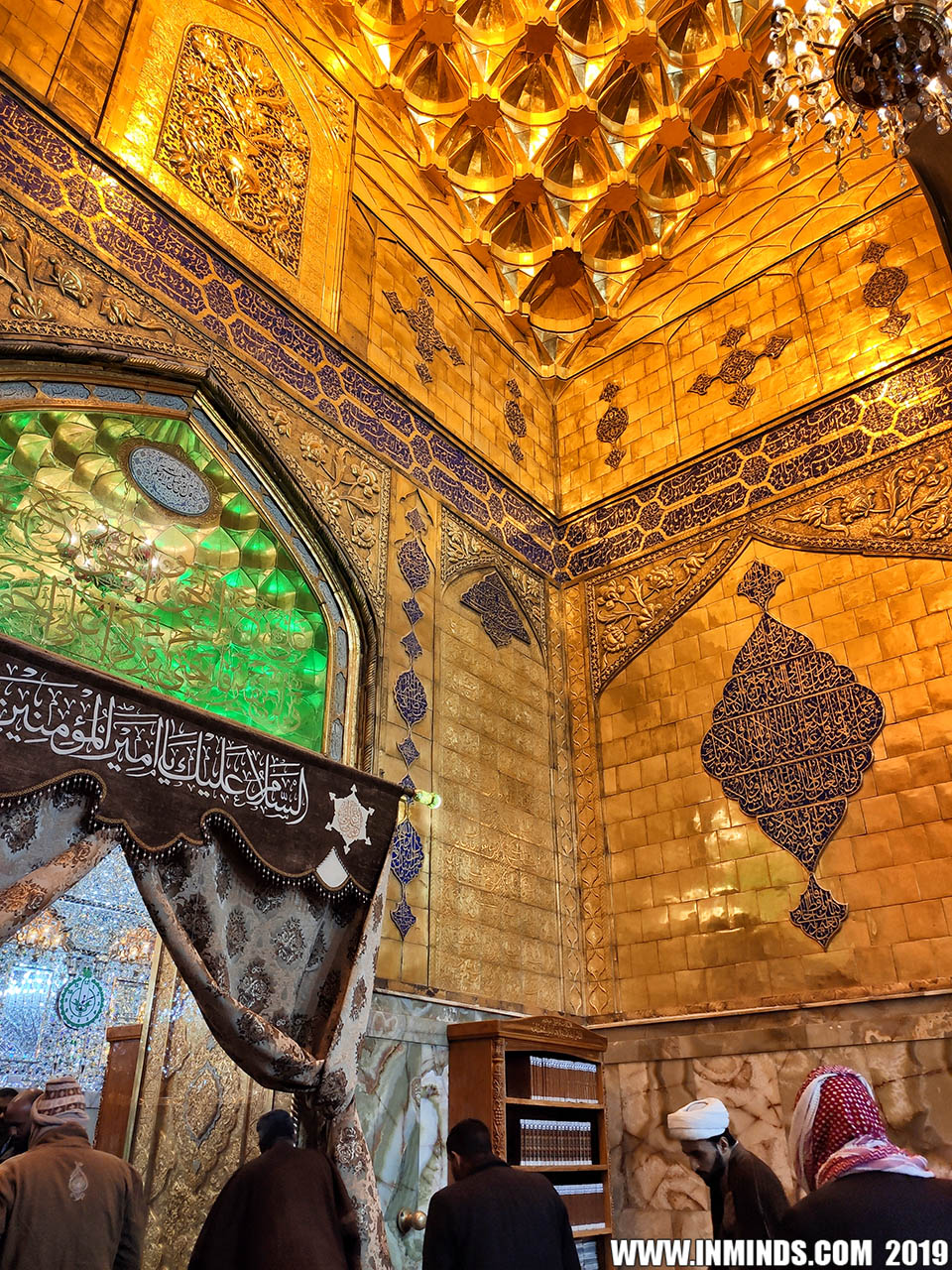 Details of the inner entrance of Imam Ali Mosque in Najaf The following are my personal observations and notes made during a Ziyarat to Iraq last year. Ziyarat is a form of pilgrimage to sites associated with the Prophet Muhammad (saw), his family members and descendants, his companions and other venerated figures in Islam. Many of these sights are in present day Iraq. My blog is not meant to be complete, and does not cover the whole of Ziyarat, but are occasional notes. Any criticisms, however gentle, are not aimed at the Ziyarat trip organisers but at us as a community. The trip organisers did everything, well beyond the call of duty, to make our stay comfortable and meaningful, in the most difficult of circumstances. I am not a scholar or even a student of Islamic History, so please, I would urge you to do your own research on the subjects raised. The Malcolm X adage applies.. âall of the credit is due to Allah. Only the mistakes have been mine.â Abu Zahra
The views expressed here are personal to the writer and do not necessarily reflect those of Inminds Human Rights Group. 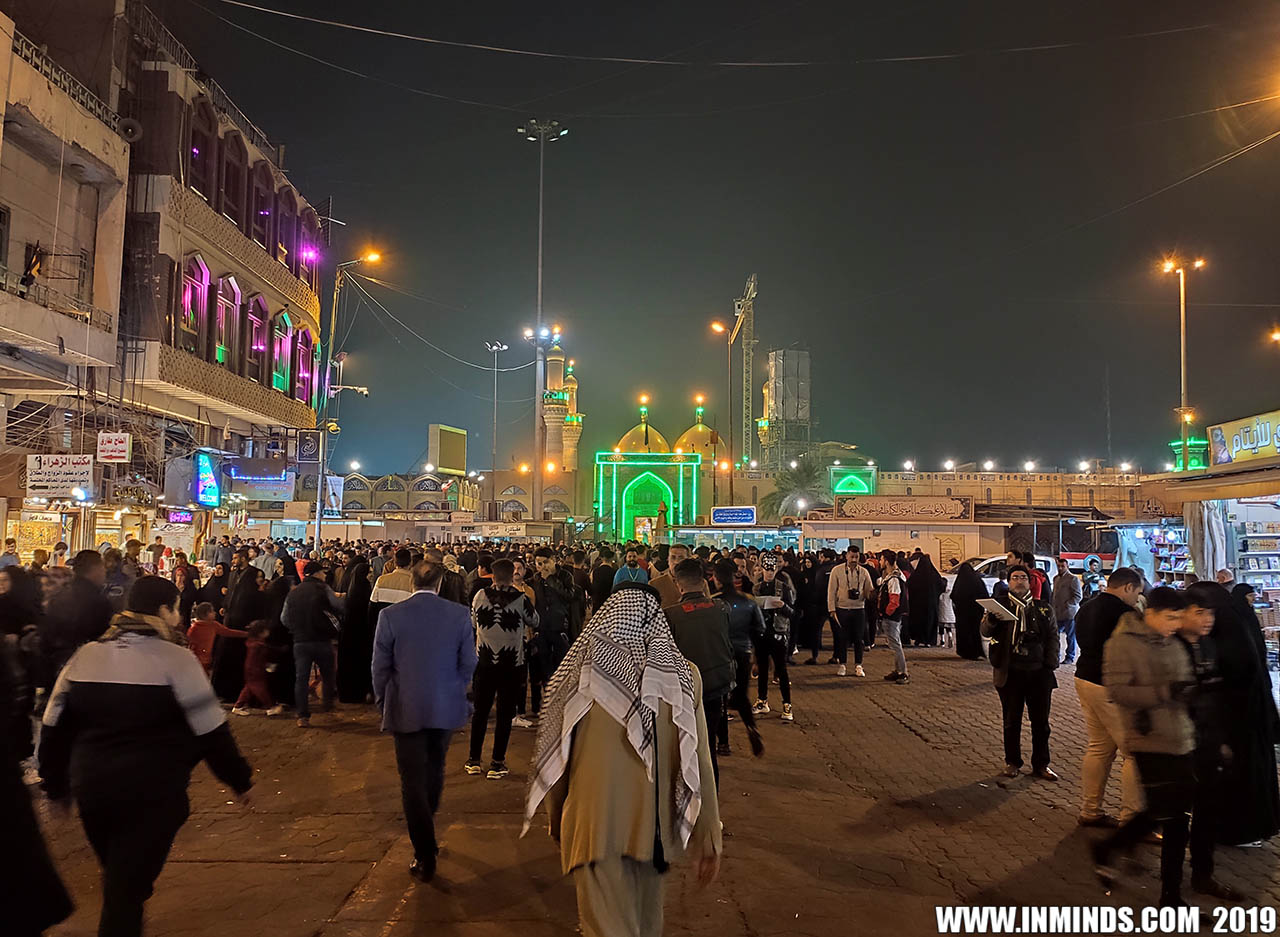 Kadhmain - the twin shrines 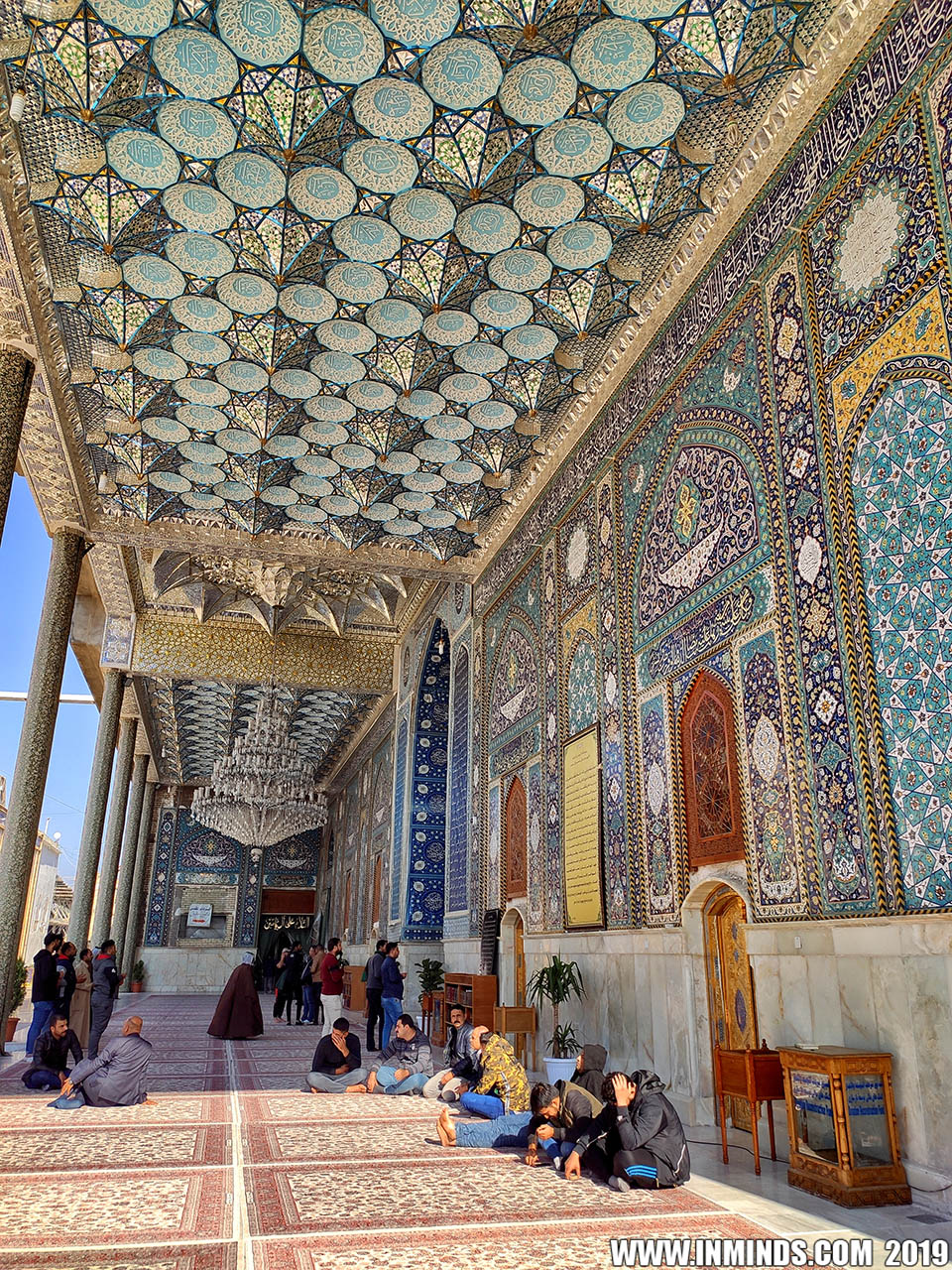 Al Askeri mosque in Samarra 1. An African Family?On the way to Kadhmain, in preparation for a visit to the twin shrines of the 7th and 9th Imams of the Prophetâs holy family, to Imam Musa al-Kazim (as) and Imam Muhammad al-Taqi (as), I read a bit about the backgrounds of these Imams. I guess itâs natural to portray our heroes to look like us, so as to attain closeness to them. So for example when we see painting of Imam Ali (as) in Iran, he will look Iranian, the depiction isnât meant to be accurate, but you get used to seeing the images of the Imams in a certain way. Yet when we look at the background of the Holy Family (as), we see some interesting traits. The 7th Imam, Imam Musa al-Kazim (as), was of African descent as his mother, Lady Hamida Khatun, was from north west Africa. His son the 8th Imam, Imam Ali ar-Rida (as) also married an African lady (from what is today Ethiopia) who gave birth to the 9th Imam, Imam Muhammad al-Taqi (as) who also chose an African wife who was the mother of the 10th Imam, Imam Ali al-Naqvi (as). Many narrations suggest the 11th Imam, Imam Hassan al-Askari (as), also chose an African wife, Lady Narjis, who gave birth to the 12th Imam, Imam Mahdi (as) (though some accounts suggest she might have been Turkish / Byzantium ). So out of 12 holy Imams, perhaps 6 were of direct African origin including the last awaited saviour of mankind! Whilst race and ethnicity has no relevance in Islam, where a personâs worth is measured by his or her Taqwa (piety) and not lineage, but I thinks itâs important for historical accuracy to point out the African heritage of our Holy Family (as). âO mankind! We created you from a single (pair) of a male and a female, and made you into nations and tribes, that ye may know each other (not that ye may despise (each other). Verily the most honoured of you in the sight of Allah is (he who is) the most righteous of you. And Allah has full knowledge and is well acquainted (with all things).â Holy Qurâan [49:13] âWhoever practices racial discrimination or it is practiced for him has removed the collar of belief from his neck.â ~ Prophet Muhammad (saw)  Kadhmain - the twin shrines in the distance 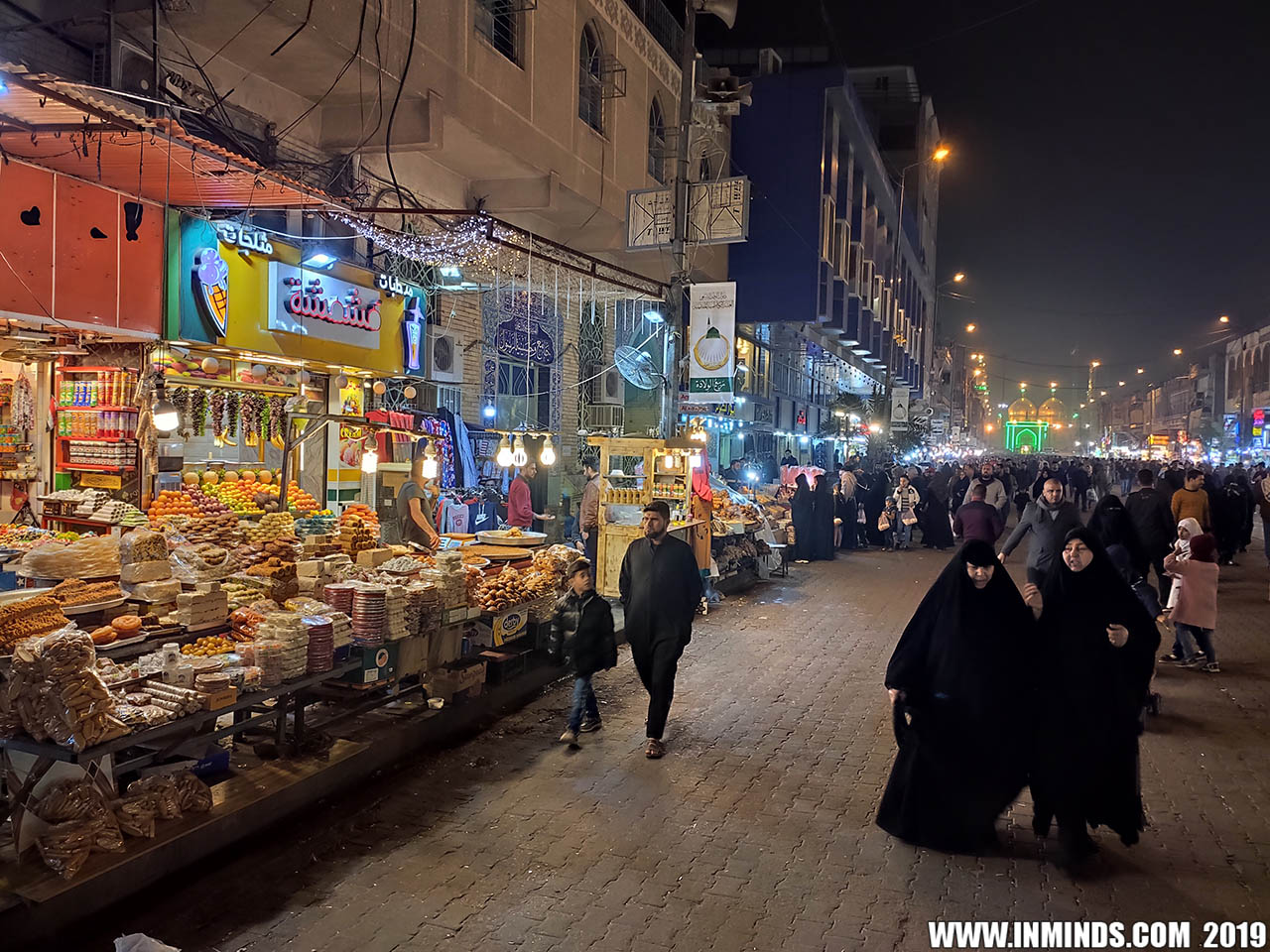 Kadhmain - the twin shrines in the distance  Al Askeri Mosque on right, location of 12th Imam's home on left (outer dome still under construction after ISIS destroyed both mosques) 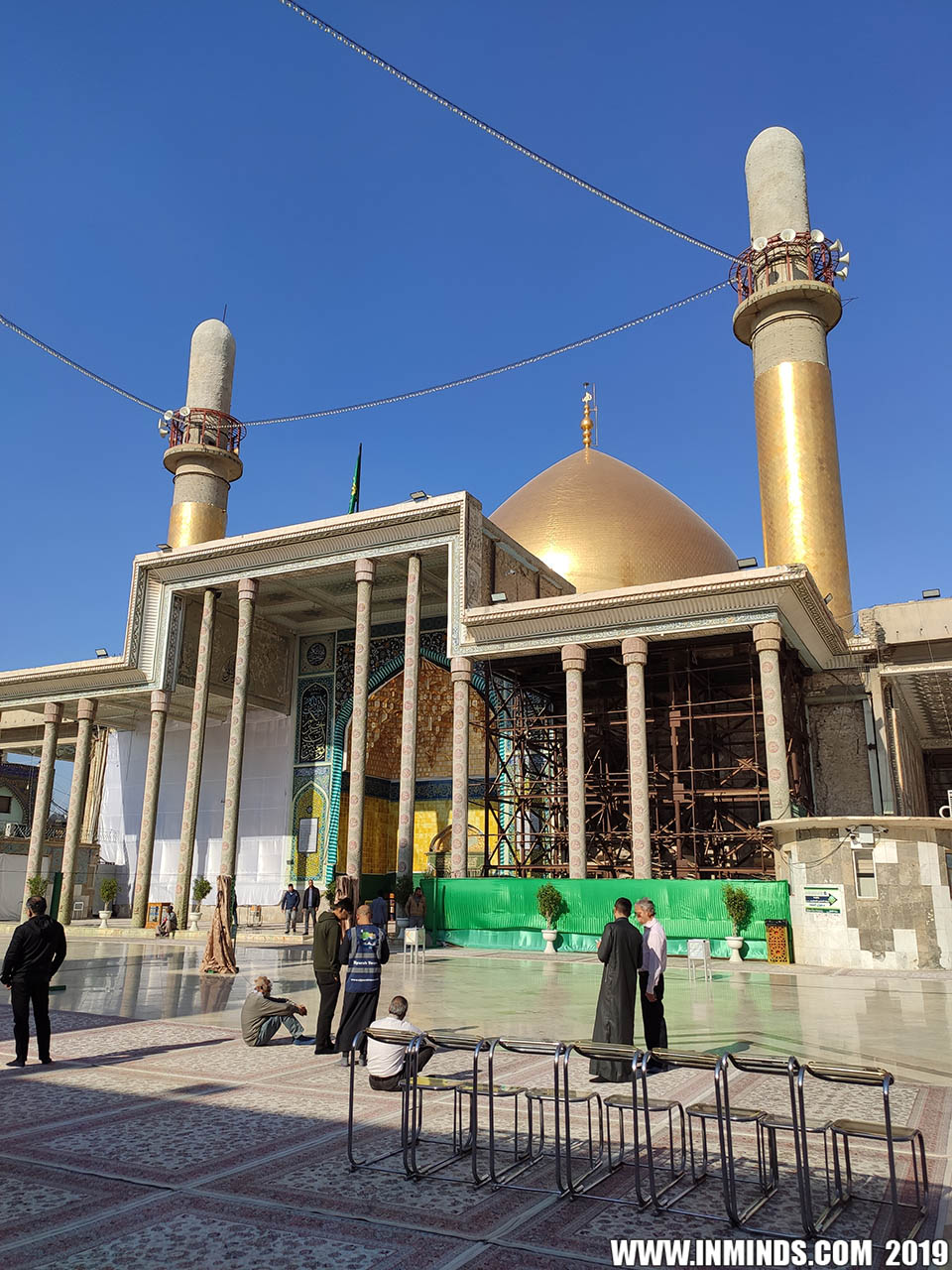 Askeri Mosque still under reconstruction after Isis attacks 2. Truth to power â Resisting till deathYesterday we visited the Al Askeri mosque in Samarra where both the 10th and 11th Imams - Imam Ali an-Naqi (as)and Imam Hassan Al Askeri (as)and the mother of the 12th Imam, Sayyida Narjis (by many accounts an African lady) are buried. Imam Ali an-Naqi (as) spent 12 years in the tyrants dungeon, and the rest of his life under house arrest, both in Samarra. Samarra was the tyrants fortress military capital (hence name Askeri = military in Arabic). Once he was dragged from his prison to the tyrants palace to be humiliated in front of the court. He was ordered to drink wine. When he refused, he was ordered to sing a song. When he refused again, he was allowed to receipt some poetry. Imam recited the following 'truth to power' verses.. The glories of our blood and state In prison the Imam dug a grave right next to his prayer mat. It was a silent protest against the tyrants who demanded his obedience.. a man who embraces death will never bend to a tyrant. The Imam died under house arrest. His funeral was only attended by his son Hassan who lived imprisoned with his father since the age of 11. The son led the funeral prayers and arranged the burial, laying him to rest in their own house prison. After his father's death Hassan took up the mantle of lmamate - Imam Hassan Al Askeri (as). 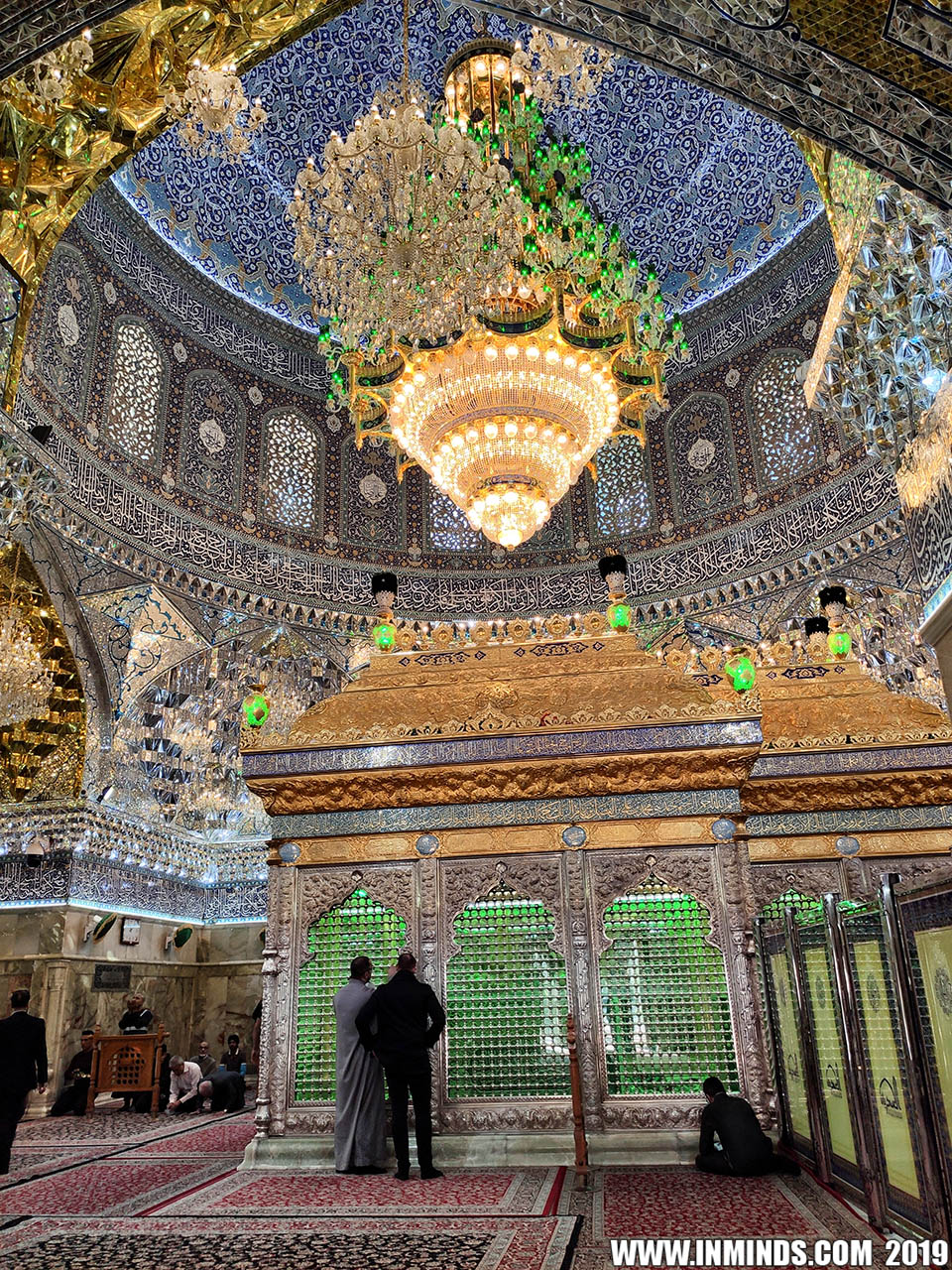 Inside Al Askeri Mosque 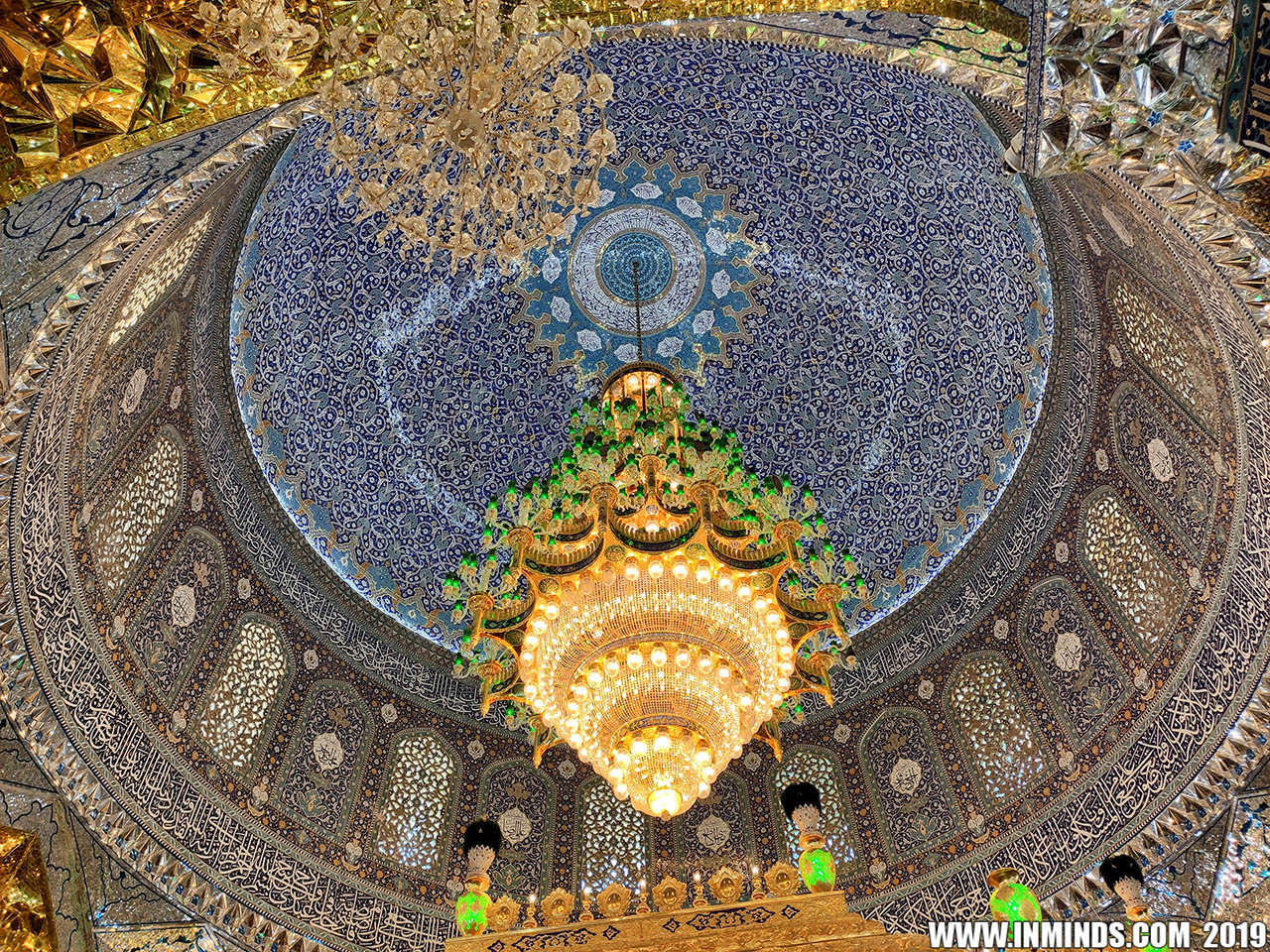 The dome of the Al Askeri Mosque 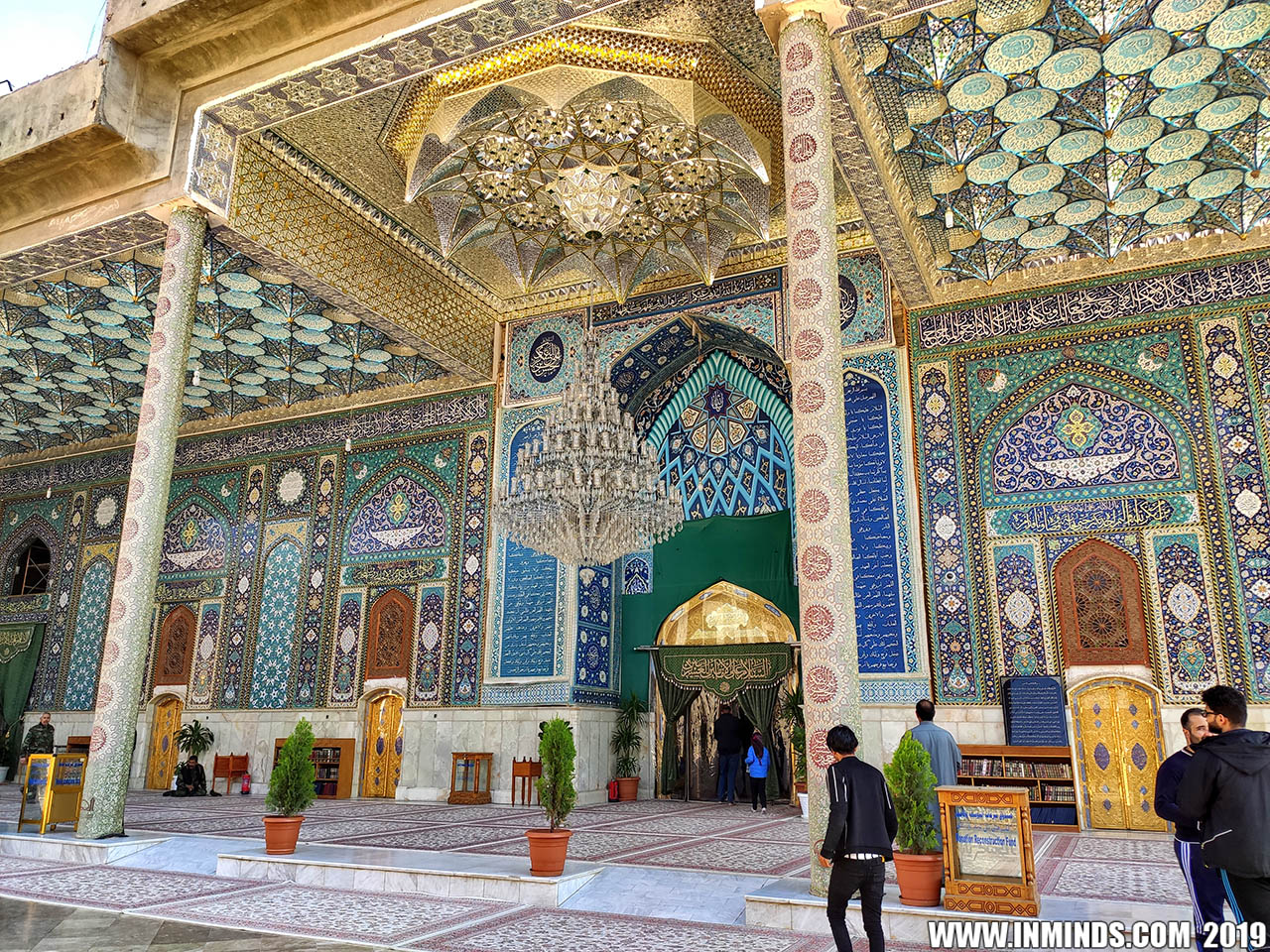 Al Askeri mosque in Samarra 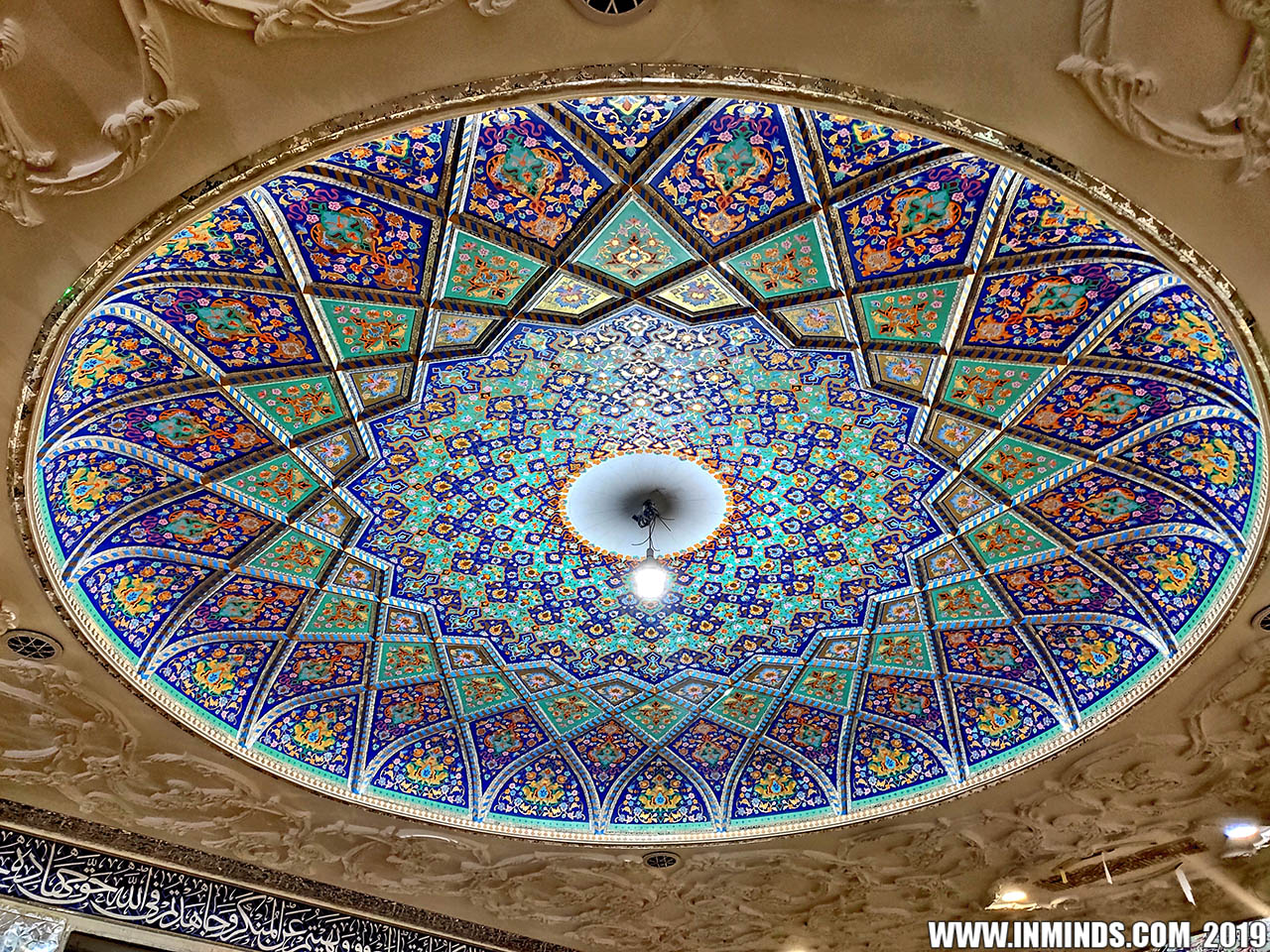 Al Askeri mosque in Samarra 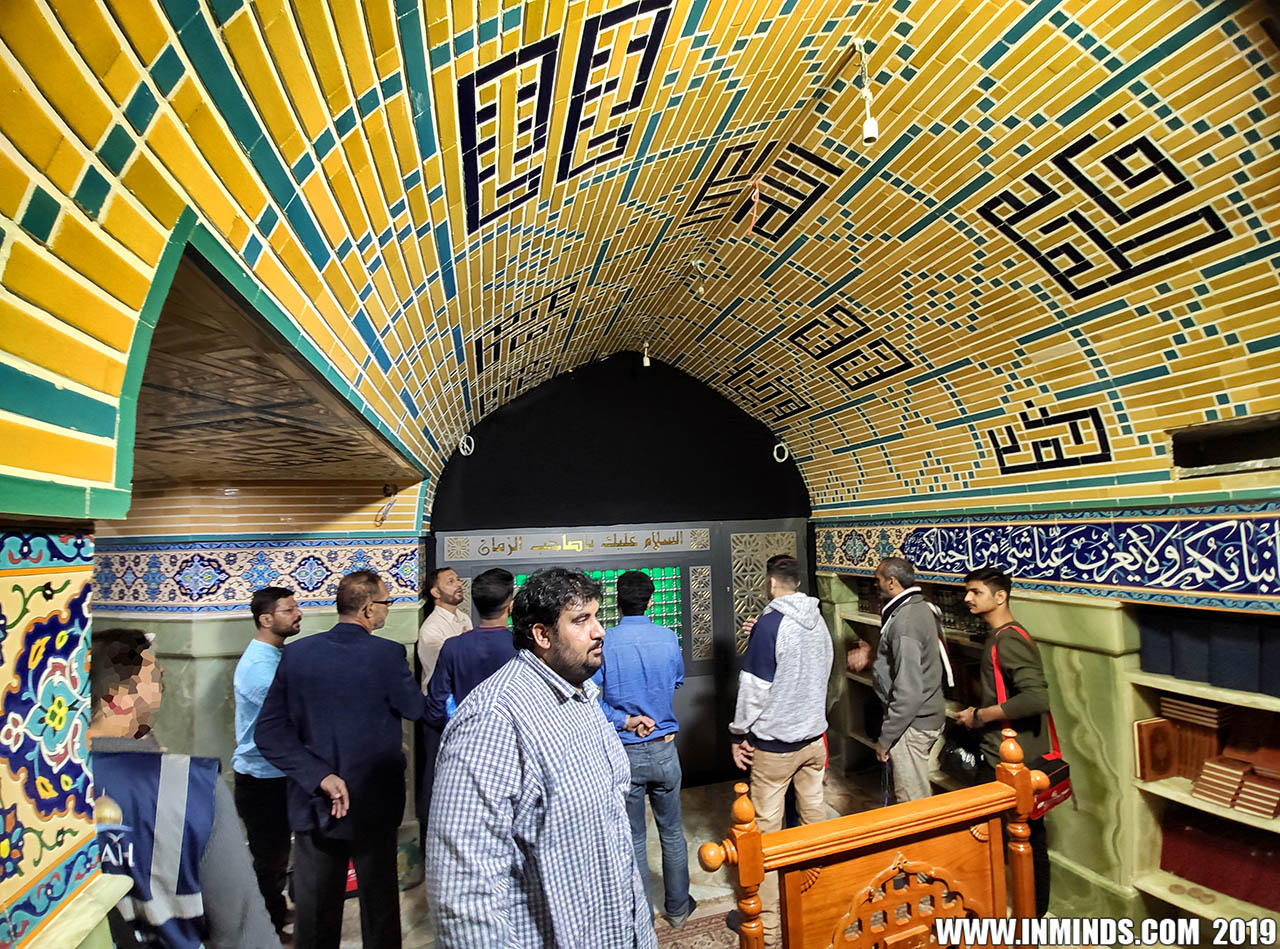 The Sardab, basement of the house the 12th Imam lived in. Notice the grill on the back wall. 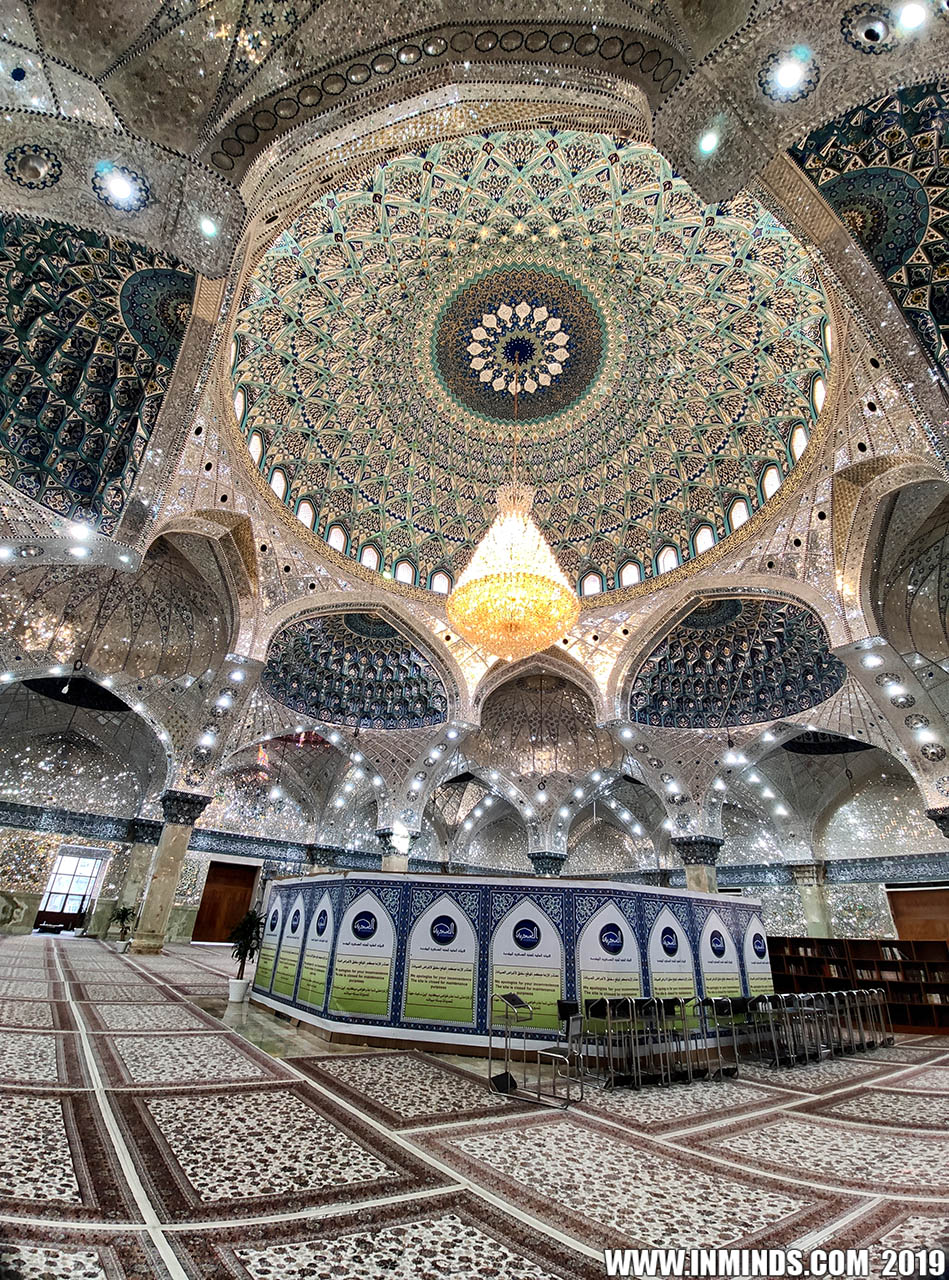 Above the Sardab is this beautiful mosque.  One of the entrances to Al Askeri mosque in Samarra 3. The Awaited SaviourWe visited the Sardab, which is the basement of the house the 12th Imam grew up in, in Samarra. It's the only part of the house that still exists, there is a mosque above it now. It has special significance as it is said that the 12th Imam went into occultation from here, to reappear in the future at an appointed time as the saviour of mankind. After two catastrophic bombings of the Al Askeri mosque by Isis which destroyed the dome and minarets, much of the area has had to be renovated. One of the walls in the basement has a silver grill with something green behind it , just like a Roza - tomb. Pilgrims compete to reach it, clinging to it to say their duas to Allah, and tie strings to it as signs of commitment and love for the awaited Imam. One Ziyarat guide was not happy, he explained that the grill is new, it was not there last time he came. It was added as part of the renovation to give focus. He explained that there is nothing special about it. It doesn't mark the spot from where the 12th Imam went into occultation. He said we don't know the exact spot, it could be anywhere in the basement we are in, that âthe whole basement is the most holiest ground in the world as the 12th Imam went into occultation from hereâ. As we were leaving, going up the corridor out of the basement we came across another guide, he was explaining to pilgrims that the whole basement is new in that it didn't exist during the time the 12th Imam lived here! It was dug up years later to give focus as the location where the 12th Imam might have gone into occultation. The exact location in the house was not known. I asked him, do we know if the location was even here? Both him and the first guide quickly responded yes of course it was here. I asked, here in this house or here in Samarra? After a short pause the guide admitted Samarra. The tyrants were aware that one of the Holy Prophetâs traditions stated that the Prophet would be succeeded by twelve princes, the last of whom would be the Mahdi, that âThis world will not come to its end unless there rises a Qaâim from my offspring who will fill it with equity and justice after its being filled with injustice and oppression.â They understood that these Imams were the mentioned successors and feared the coming of the 12th Imam. With Imam Hassan al-Askari (as) being the eleventh of this series, his son would surely be the twelfth, the last. They, therefore, first imprisoned the 11th Imam to prevent him from siring a son. It was only during power struggles and transitions between one tyrant and the next that these Imams would see a modicum of freedom. When the 12th Imam was born it was kept a secret. The first time the people saw Imam Mahdi (as) was at the age of 5 when his father was poisoned to death by the tyrant. His fatherâs coffin was ready for the funeral prayers. The ranks had been formed. Imam Hassan al-Askariâs brother Ja'far stepped forward to lead the prayers and was at the point of reciting the Takbir when suddenly a boy came out from behind the curtains, passed the ranks quickly and took hold of Ja'farâs robe and said, âGet back, Uncle; I am more than you worthy of leading the funeral prayers for my father.â Ja'far at once withdrew and the boy led the prayers. Having performed this duty, the boy went back. It was not possible that the tyrant could remain ignorant of the fact. The search for him was carried out more seriously than ever before in order to arrest and slay the boy. I think itâs more important for us to focus on the mission of the 12th Imam, which is to fight injustice and support the oppressed, and specifically how we can be part of that mission starting today, rather than quibble on the exact location of the occultation.  The religeous leader of the whole country lives down that tiny alleyway- that gap between the two CCTV poles 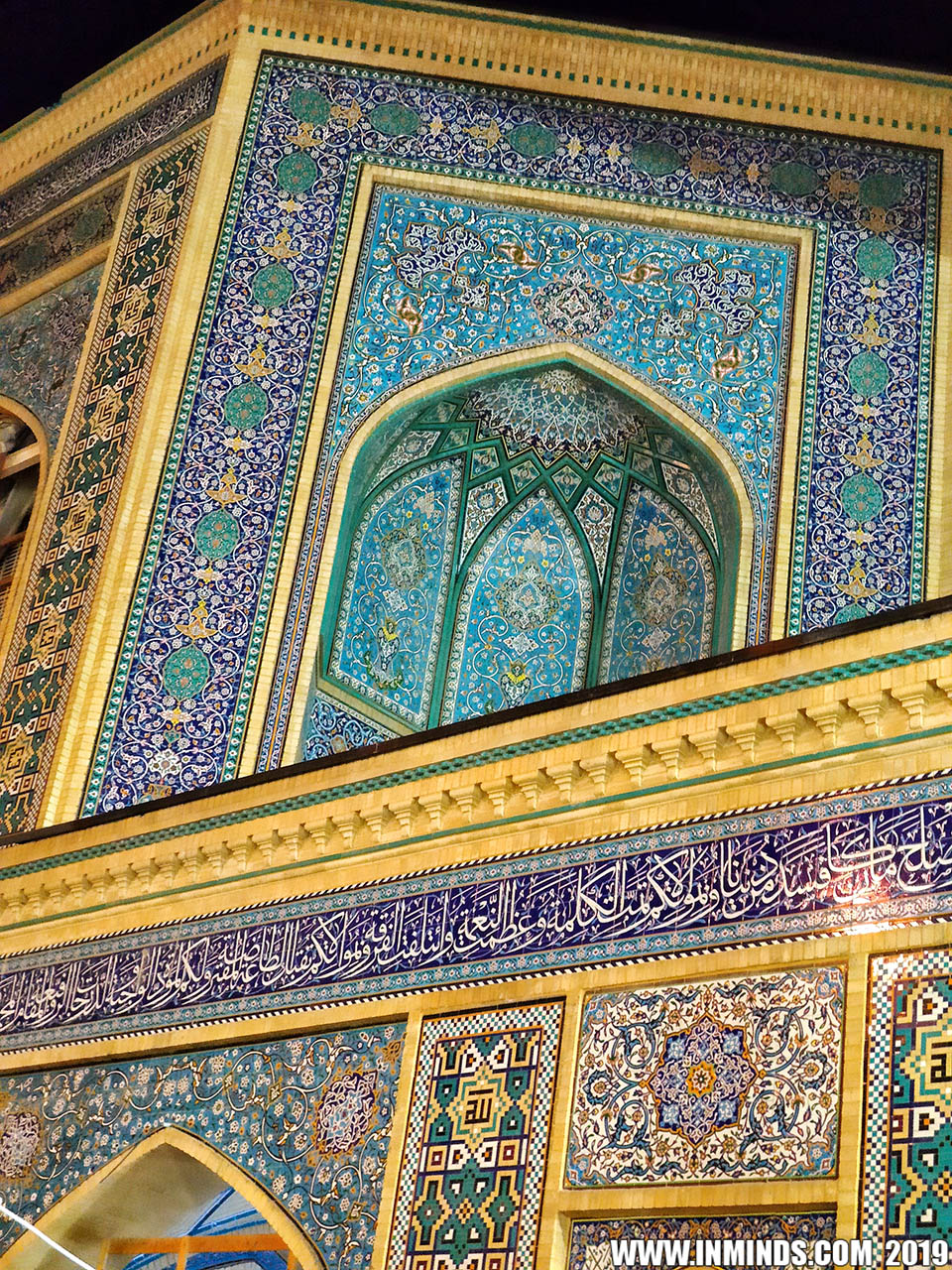 Details from outer walls of Imam Ali Mosque in Najaf 4. A Simple Man â In the tradition of the ProphetSqueezed between two ordinary shops in a bustling market street in Najaf is the thin rundown alleyway that houses the grand marja of the Shias of Iraq and elsewhere. The only tell tell signs are the security cameras above the entrance of the alleyway. This morning we were treated by a visit to the simple home of Ayatullah Al Sayyid Sistani. After many, many security checks including two metal detectors, we entered a room where the marja, wearing plain attire, was sitting in one corner with chairs for the guests all around him, including touching his chair on both sides. The room was void of any decorative features, even the electric wiring for the room was simply nailed to the walls rather than concealed under plasterboard or plastic ducting. There were chairs for about 50 people, he individually shook every person's hand before speaking for a few minutes and answering a question in detail that was put to him on the reformation of the maraja institution. In total the meeting lasted 30 minutes not including the security checks. It's quiet profound when one considers that this simple man is all that stands between a chance of peace in Iraq and total chaos, possibly civil war with 100s of thousands if not millions dead. In a recent interview, when asked about Imam Khomeini, Sayyid Sistani stood up and said: First of all, I must stand in respect of the deceased Ayatollah Khomeini (may his secret be sanctified). Sayyid Sistani continued: Do you not know of the great work Imam Khomeini has done? We who were trapped here in Saddamâs clutches understood, and still understand, the value of his work. I used to listen to all the speeches of Imam Khomeini at night. I had a small radio, and I used to go to my library on the top floor and wait until after the eight oâclock news, for that was when the sermons of the Imam were broadcasted. Imam Khamenei says, "Know the value of Sayed al- Sistani and listen to his advice. In short, he is a symbol that will guide you, an imama (turban) that will protect you and before all of the above, he does not belong to one people, sect or society - he is the ammunition of the Ummah."  Street poster showing Iraqi forces following Sayyis Sistani's edict, mobilising to save Iraqis from ISIS 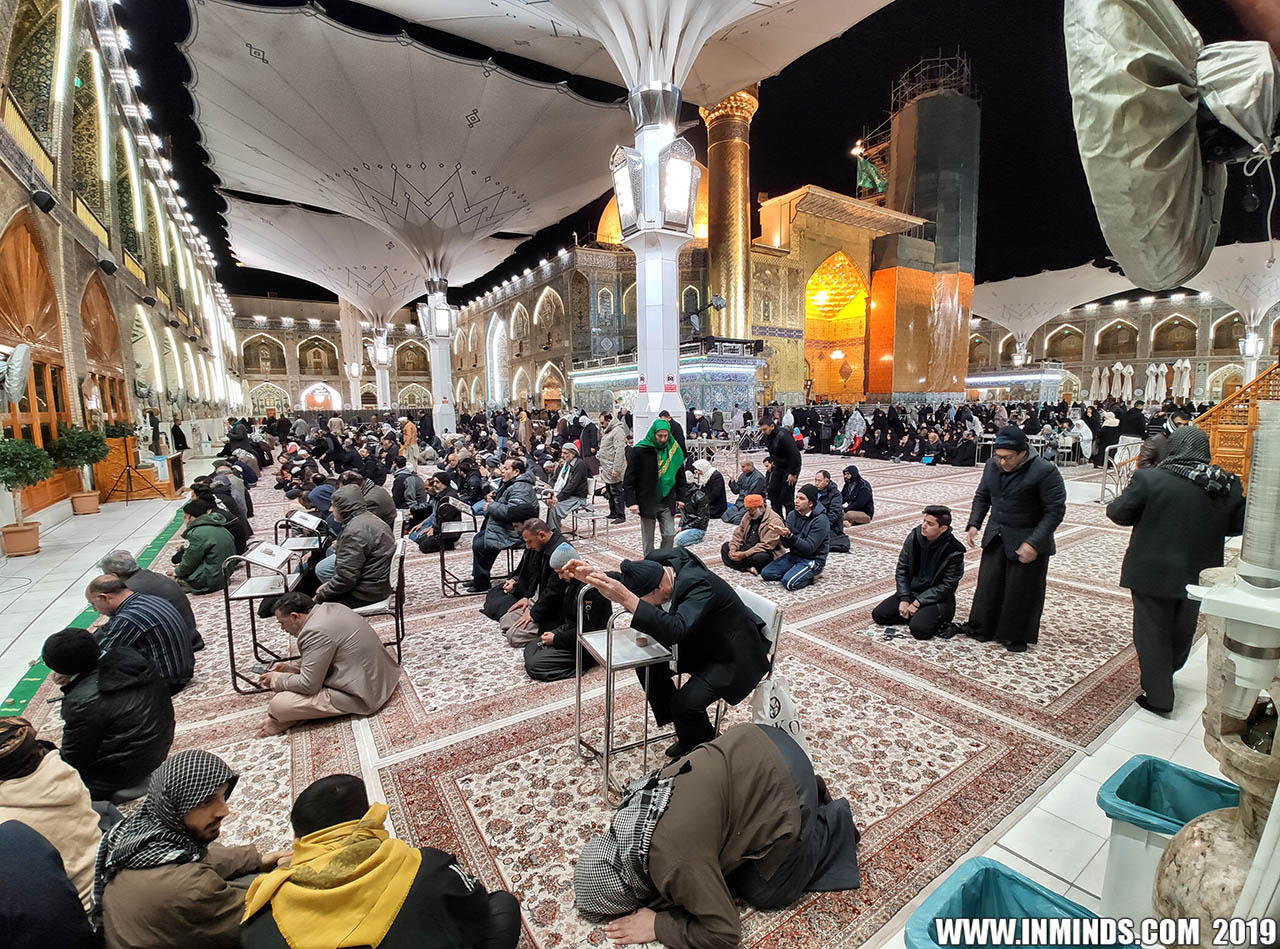 Imam Ali mosque at fajr prayers 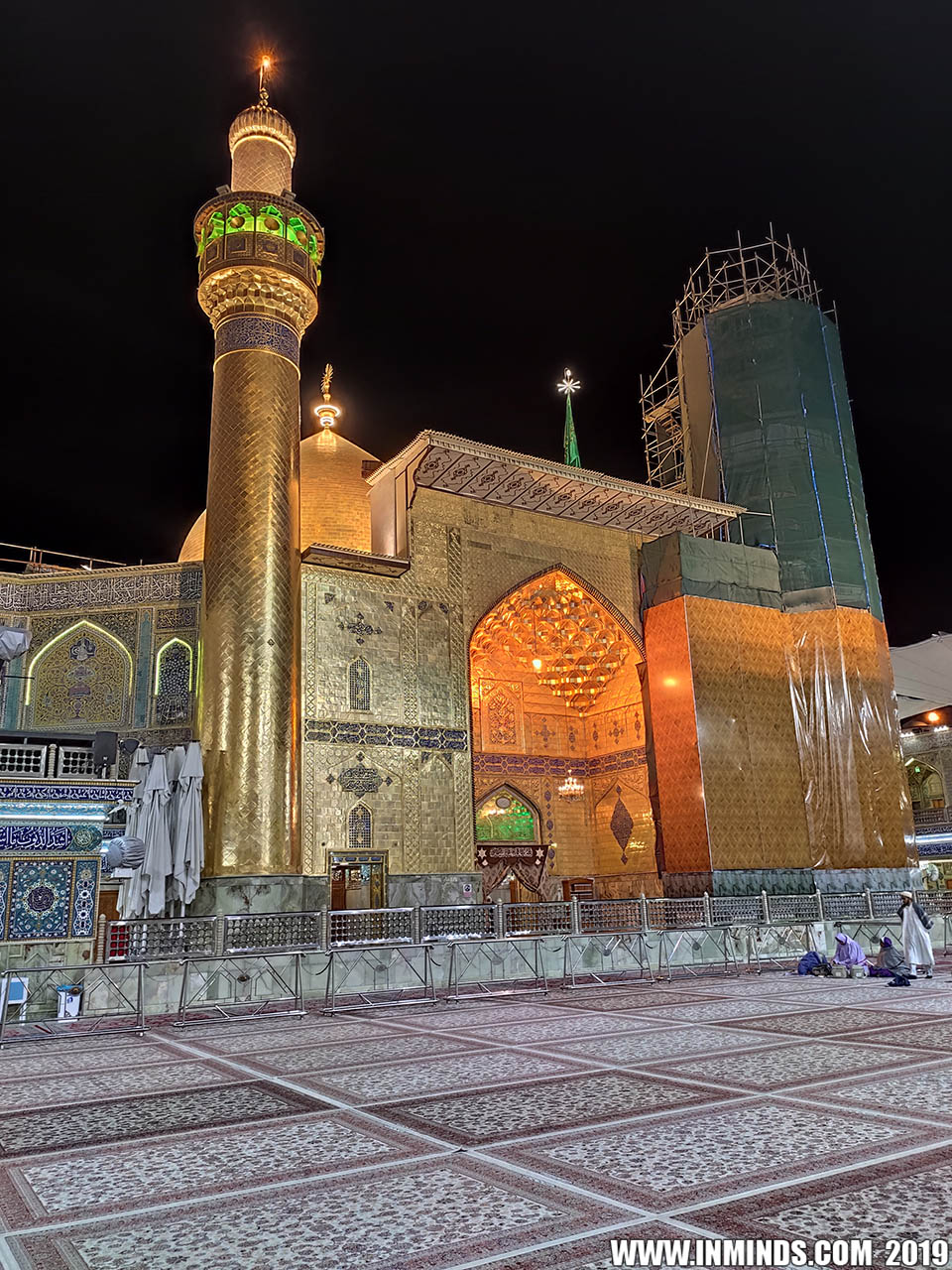 Imam Ali Mosque in Najaf 5. Fajr â A time for contemplationThis morning we went for fajr prayers at Imam Ali mosque in Najaf. It was a great atmosphere of unity. The brothers were praying in the front, and after a gap the sisters, in much greater numbers, started. Praying besides me was a Sunni brother. It was wonderful to see from his mannerism that he felt he belonged there as much as anyone else. This is the way it should be at every mosque. It's the house of God, every worshiper of God should feel a sense of belonging there. If he doesn't feel that welcome then there is something wrong with that mosque. Fajr is also a great time for reflection. Imam Ali mosque has so many side chambers and halls that one can easily find a quiet spot to sit and ponder, to reflect on things we usually don't give the time for back home when we get back into our hamster wheel to join the rat race. A few saying of Imam Ali to reflect on.. 👉 âDo not sell your conscience for anything but heaven.â 👉 âOf all the follies the greatest is to love the World.â 👉 âHe who sells his next life for his present life in this world, looses both of them.â 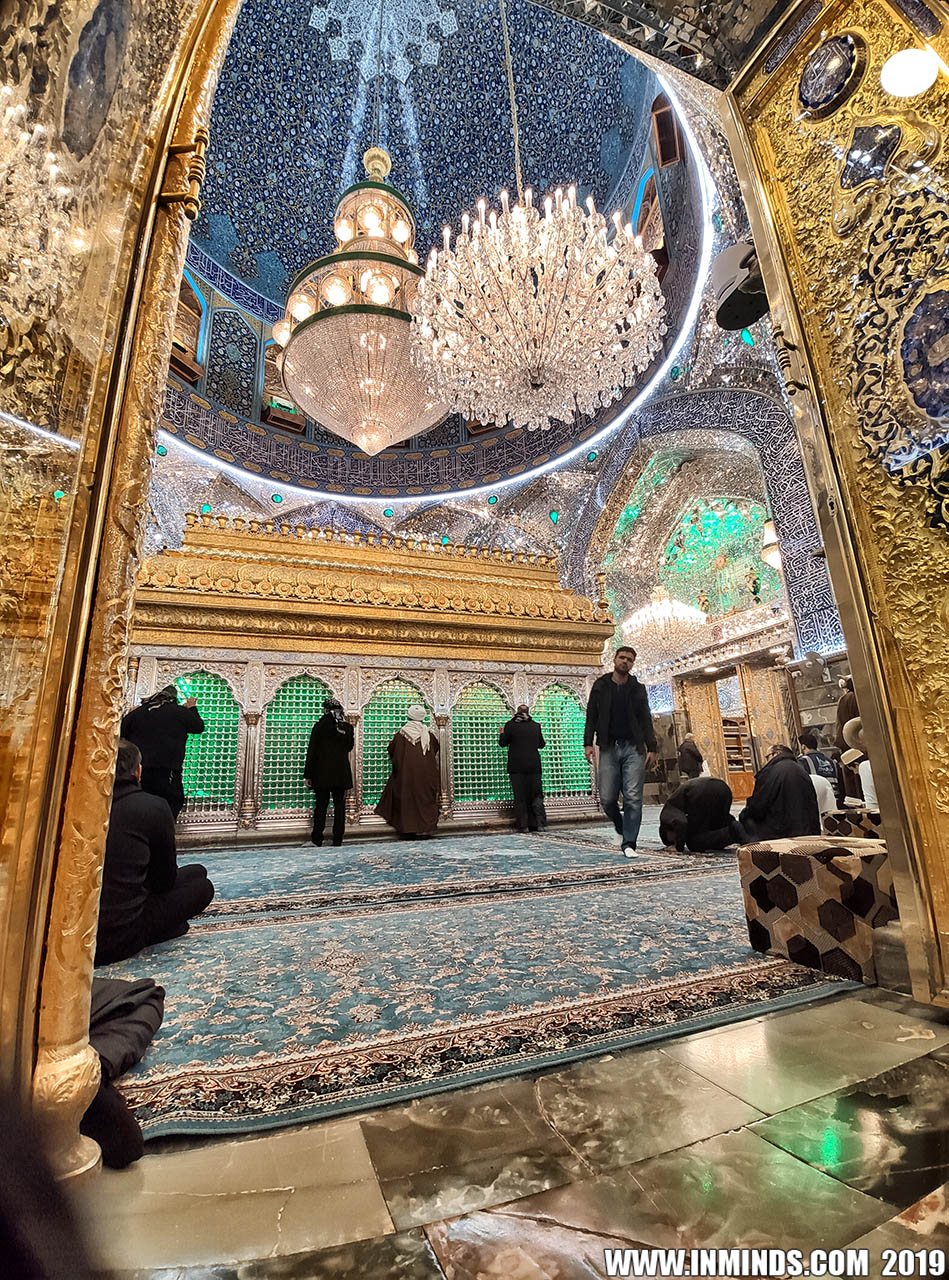 The tomb of Imam Ali (as) inside the Imam Ali Mosque in Najaf (it is siad the tomb also contains the graves of Prophet Adam(as) and Prophet Nuh(as) 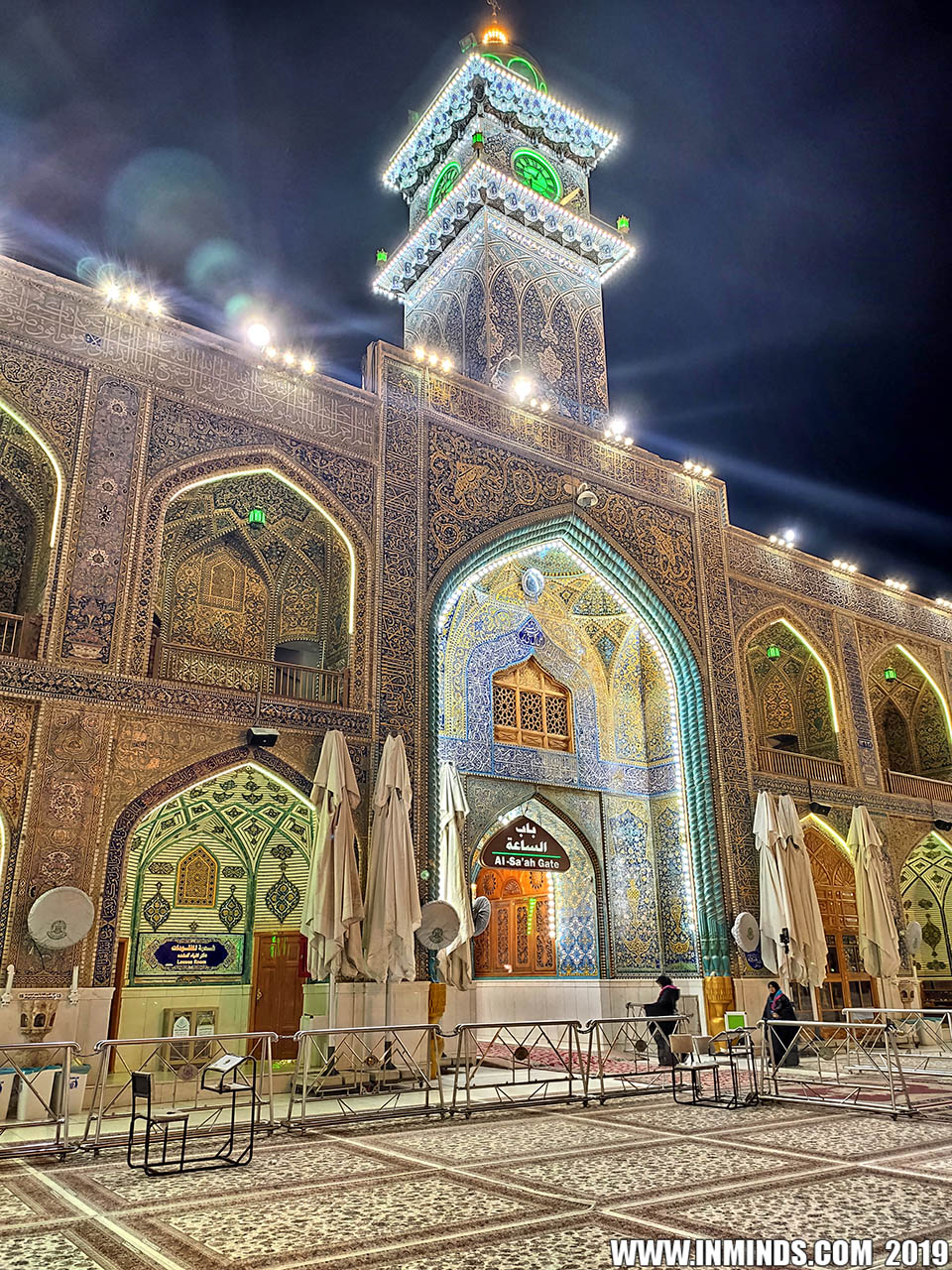 One of the entrances to Imam Ali Mosque in Najaf 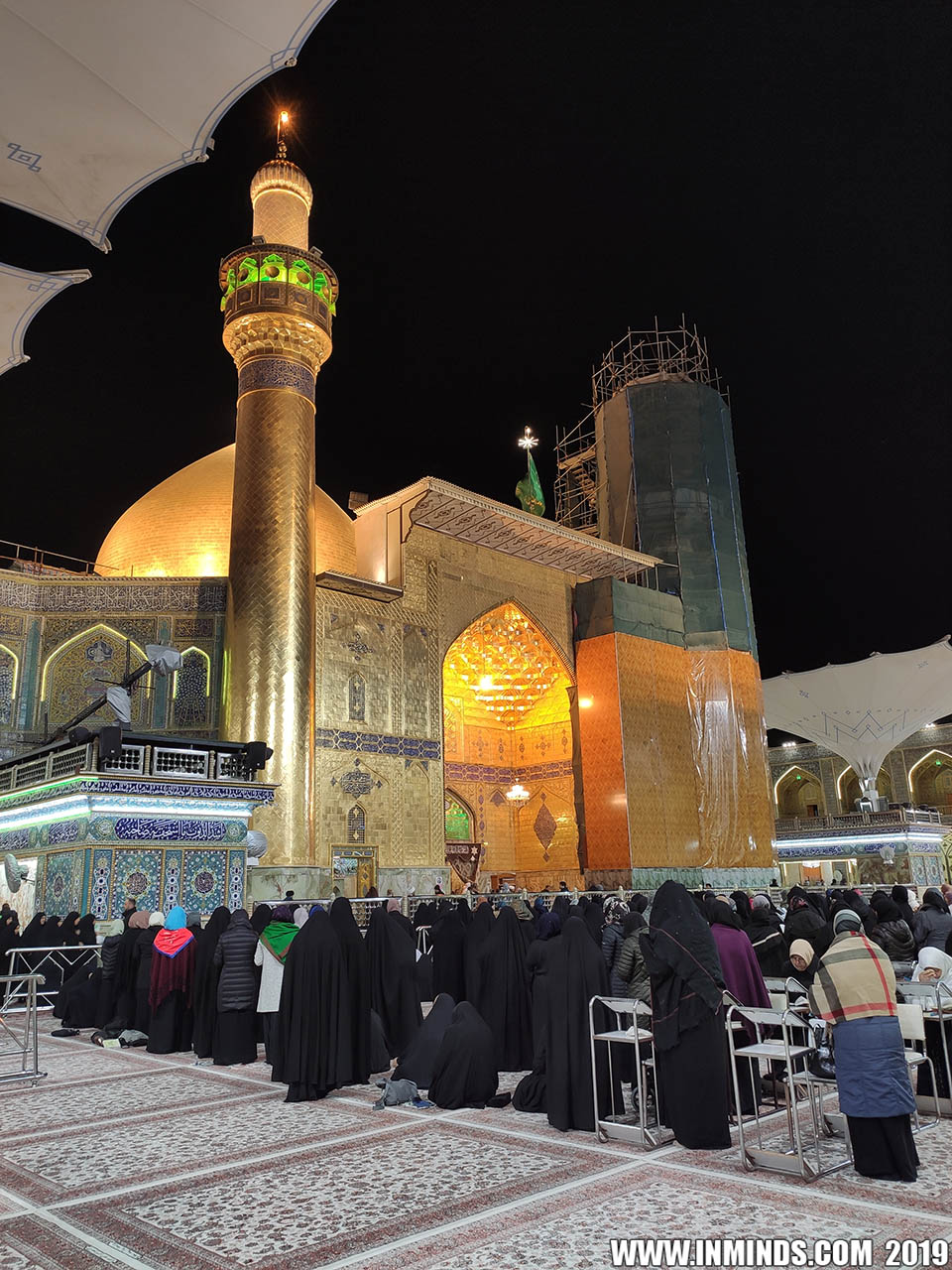 Fajr at Imam Ali Mosque in Najaf 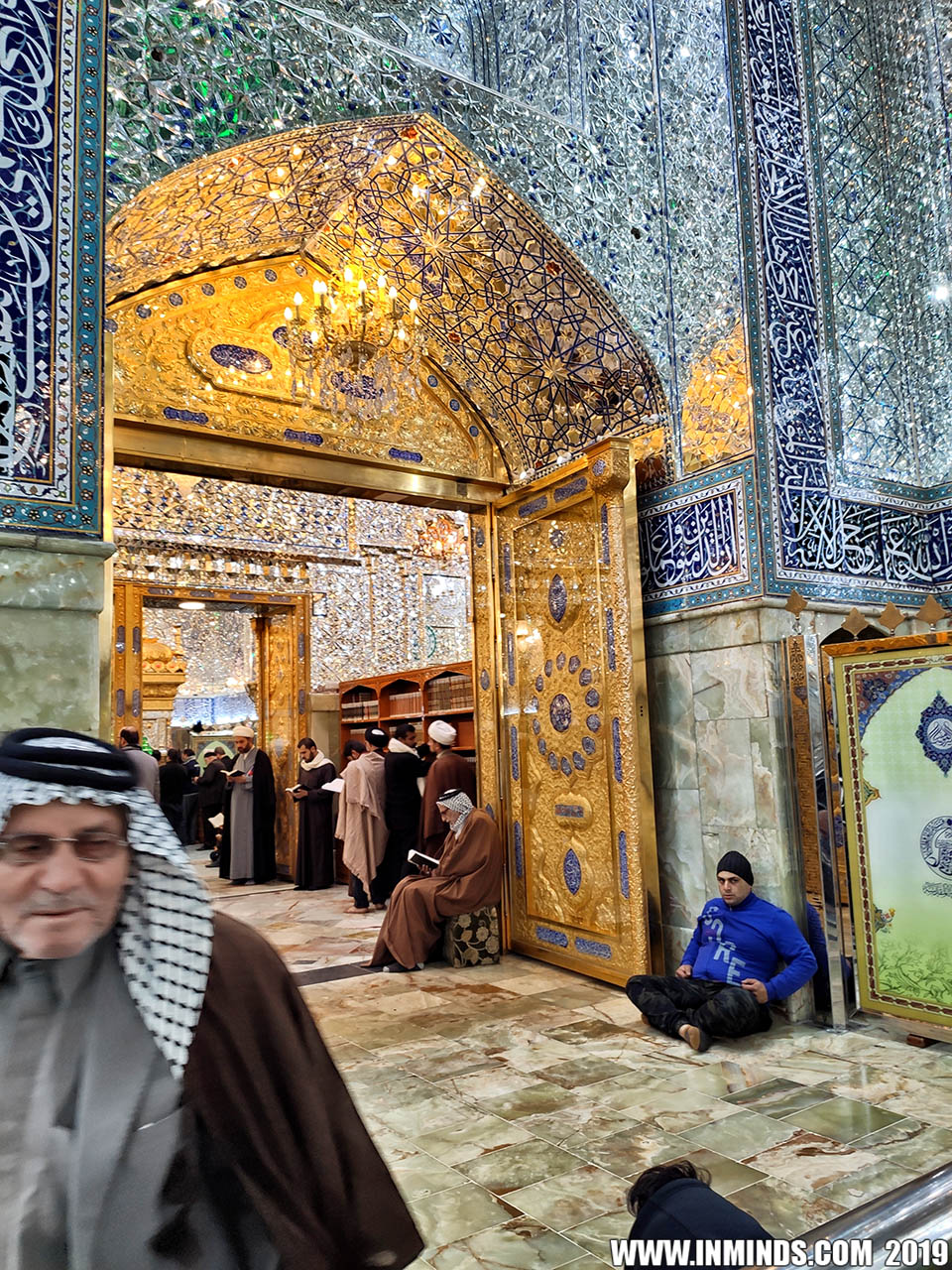 Inside Imam Ali Mosque in Najaf 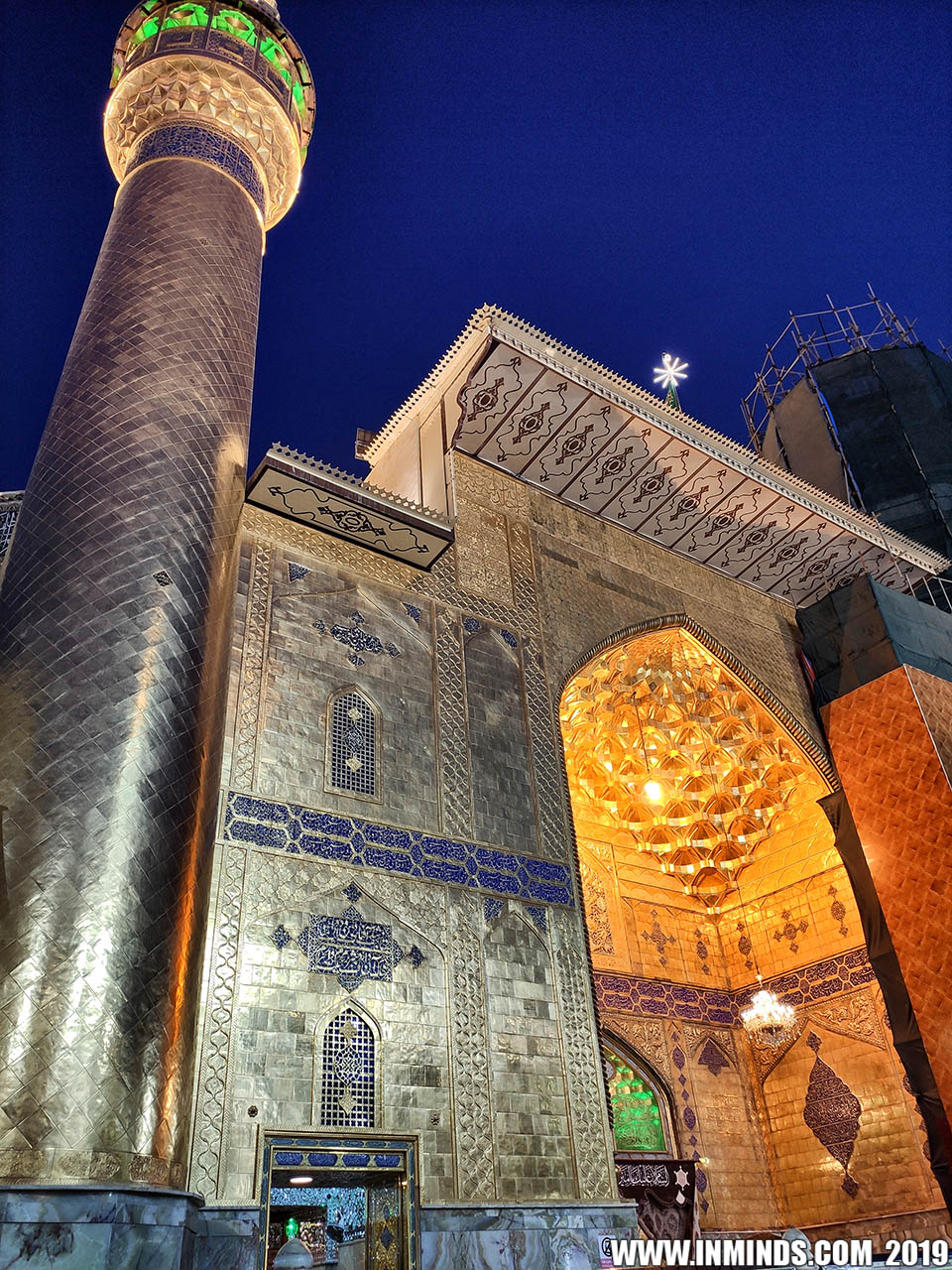 Imam Ali Mosque in Najaf 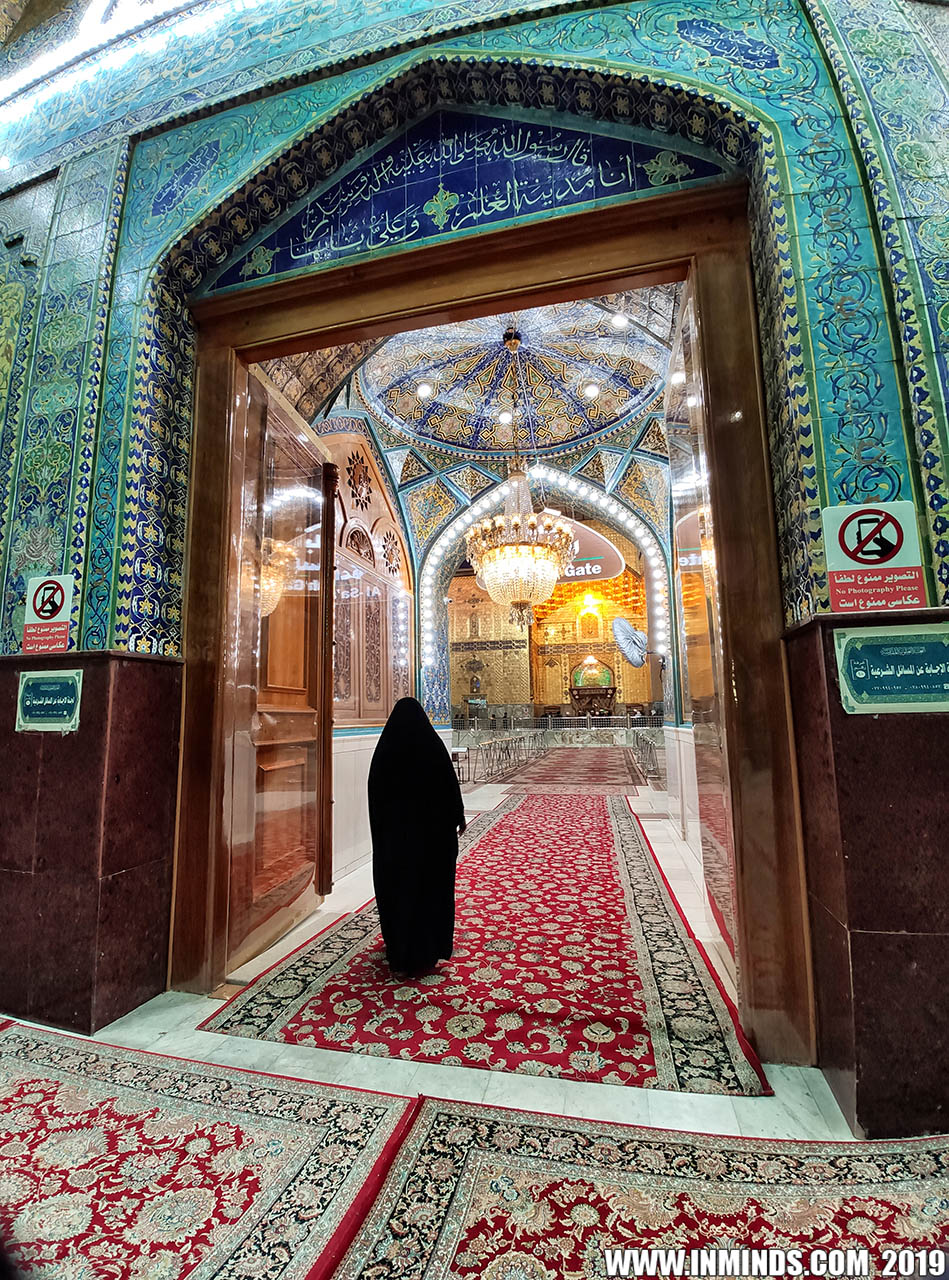 Imam Ali Mosque in Najaf 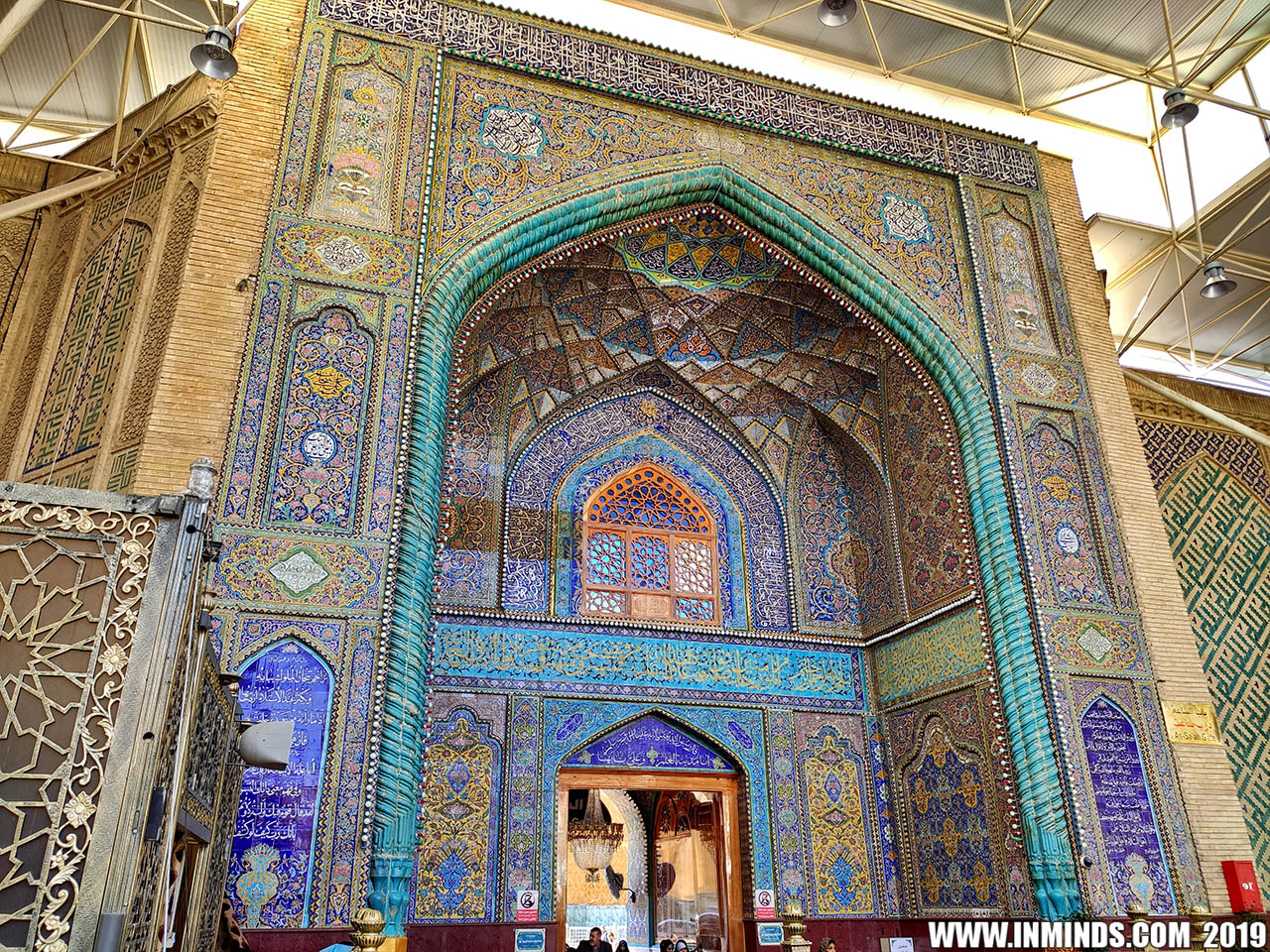 Outer entrance to Imam Ali Mosque in Najaf
 Shaheed Mohammed Baqir Al Sadr 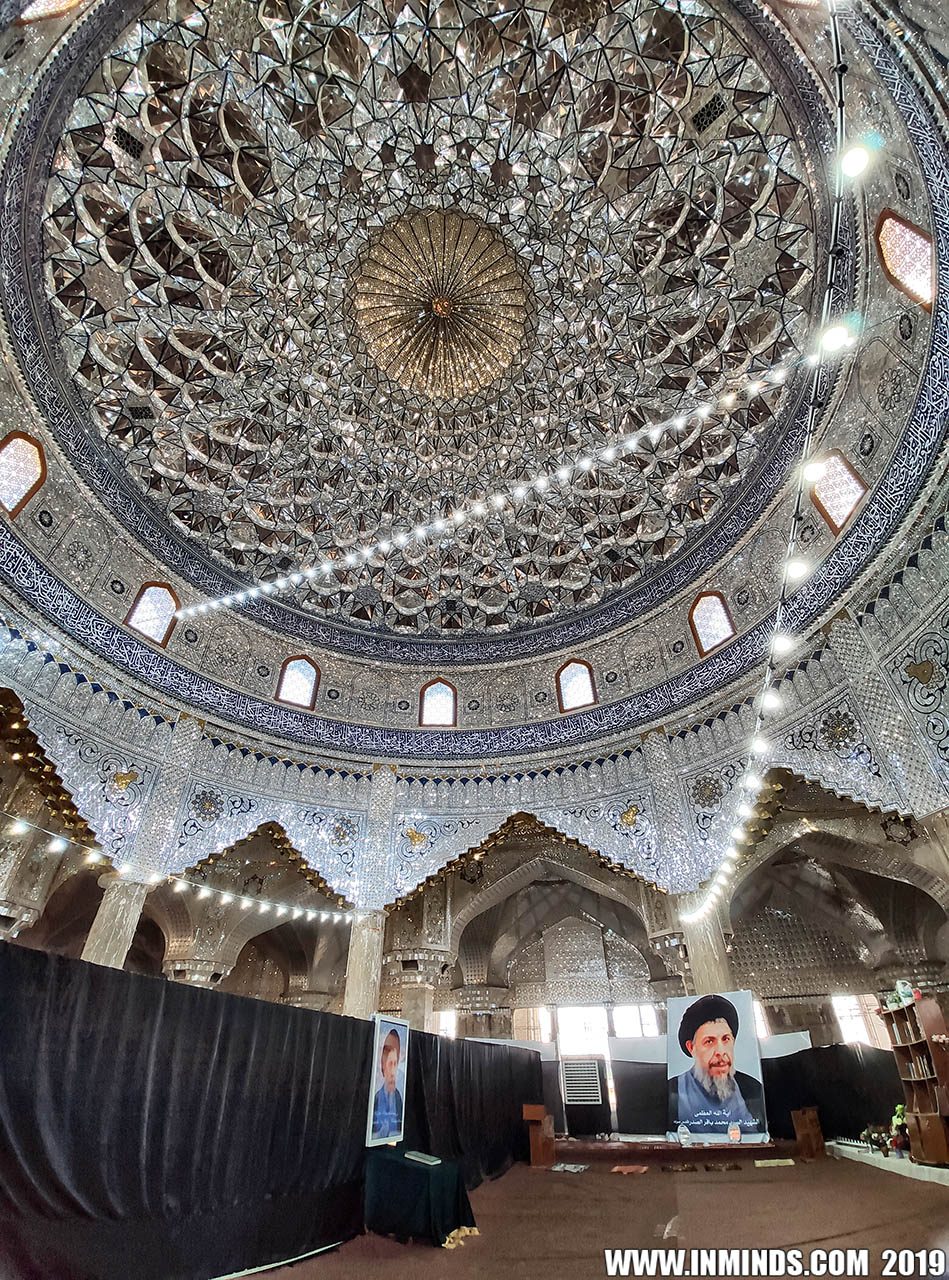 Inside the mosque of Shaheed Muhammad Baqir Al-Sadr 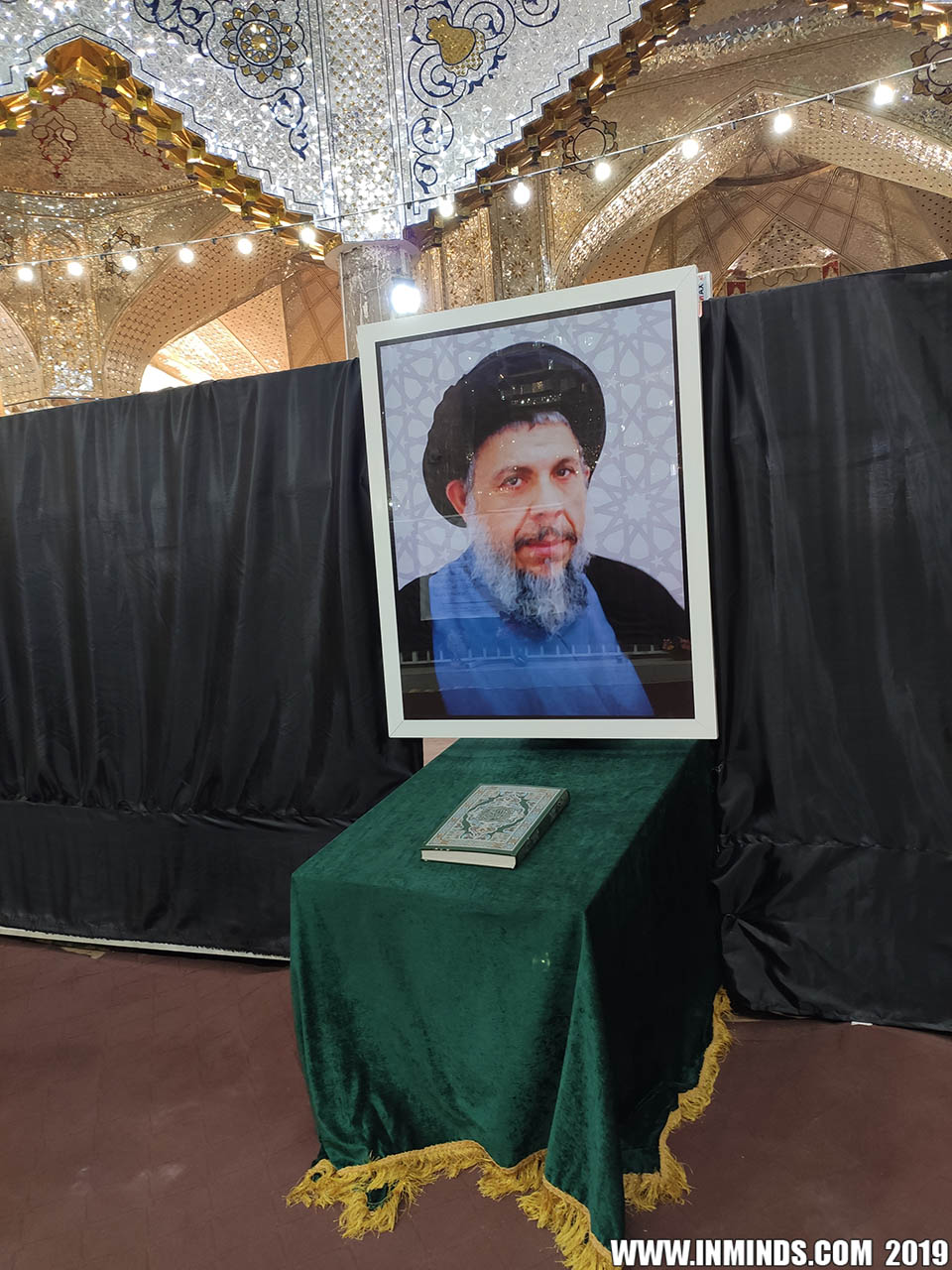 Grave of Shaheed Muhammad Baqir Al-Sadr (one half is on otherside of black cloth) 6. In Search Of The MartyrHaving been given the morning off, I thought rather than spend it shopping I would go on a personal mission to find the grave of Ayatullah Mohammed Baqir Al Sadr and his sister Amina Bint Al Huda which I had heard was somewhere in Wadi Al Salaam, the biggest graveyard in the world. Mohammed Baqir Al Sadr was an Islamic scholar, a philosopher and a revolutionary leader. He was a child prodigy who at the age of 10 started lecturing on Islamic history. His seminal works 'Our Philosophy' and 'Our Economics' challenged both the prevailing systems of capitalism and socialism. He fully supported Imam Khomeini from the very start when Imam laid the ideological foundations of Islamic Government decades before the victory of the Islamic Revolution when he was exiled in Najaf. Al-Sadr's famous slogan about Imam Khomeini was "devote yourselves to Khomeini as he has devoted himself to Islam". Ayatullah Mohammed Baqir Al Sadr's sister Amina Bint Al Huda was also an Islamic scholar and revolutionary activist. She published many Islamic books and ran several Islamic girls schools which were later closed down by Saddam's baathist regime. When the Baathists arrested Ayatullah Al-Sadr in 1977, his sister Amina Bint al-Huda in the tradition of Sayeda Zainab (as) made a passionate speech in the Imam Ali mosque in Najaf rallying the people to demonstrate for their leader. Many demonstrations were held, forcing the Baathists to release Al-Sadr who was then placed under house arrest. Al-Sadr was a courageous leader, in prison he would not hesitate to challenge and resist his jailers. When other prisoners would caution him, his reply was always the same âDont be afraid, death only comes once.â Al-Sadr issued a fatwa making it haraam to join the baath party and after the victory of the Islamic Revolution, Saddam fearing a similar Revolution in Iraq arrested Al-Sadr. This time he would not make the mistake of leaving behind a Zainab, so he also arrested Bint Al Huda. Saddam demanded Al-Sadr renounce Imam Khomeini's Islamic Revolution and he would be set freed. In the tradition of Imam Hussain, Al-Sadr replied "I am ready for martyrdom, I will never accept your anti-Islamic requests; my path is what I have chosenâ¦". Both Al-Sadr and his sister Bint Al Huda suffered 3 days of extreme torture before they were killed, it is said Saddam personally took part in the killing. An iron nail was hammered into Al-Sadr's head and then he was set on fire. Accounts say they raped Bint Al Huda in front of her brother, and they scalped her. These are the great heroes of Islam that I wanted to pay my respects to, but I didn't know where their resting place was. Wadi Al Salaam, the largest cemetery in the world runs for miles in every direction. I asked at the information desk at Imam Ali mosque if they had a map of Wadi Al Salaam indicating where key figures are buried, unfortunately they didn't. When I mentioned Al-Sadr, I was told he was located at the edge of Wadi Al Salaam, near the Najaf Stadium and showed me on Google maps on my mobile, they said I couldn't miss it. They suggested I take a taxi, but I preferred to walk. The walk would cut right across the cemetery to reach the other end. It was a moving experience walking through Wadi Al Salaam passing tightly packed graves and holes leading to several layers of underground chambers. So many of the graves feature photos of young and old men in military fatigues who had given their lives in saving the land of Hussain from ISIS, which at one time controlled one third of Iraq, and the US occupation that had precipitated it. I walked for about 40 minutes before reaching the other side and seeing a beautiful green domed mosque under construction, I knew this must be it. The security guard didn't understand English but when I mentioned Baqir Al-Sadr he nodded and pointed to the makeshift entrance. The place was still very much under construction, with most parts cordoned off. Apart from some posters of Al-Sadr, the small space contained a glass case housing Al-Sadr's black imama (turban), a bookshelf of Quran's, a few prayer rugs laid out for praying and what seemed like a small table covered in green cloth with a Quran and photo of Al-Sadr on it. Where was the roza or gravestones? I peeked over the closed section to see it it was there, all I could see was mounds of cement. A little bit disappointed, I prayed a couple of rakats and read Fathia at the glass case and was leaving when I met a couple of people. They didn't understand English but when I mentioned Baqir Al-Sadr, Bint Al Huda and kabr they understood. They said, no kabr.. Saddam.. and pointed their open hands to the sky 'only Allah knows'. At this point I had an emotional episode. Trying to hold the tears back I thanked them and rushed to the exit before the tears started. There I met another two Iraqis, one of them spoke English. I thought I would double check as I remember reading Al-Sadr's body had been recovered and the signs of torture visible all over it, and something about it miraculously not having aged after exhuming it 17 years later. The Iraqi brother confirmed that yes the grave was here, it was Bint Al Huda whose body was never recovered with accounts that Saddam had disposed of it in vat of acid. He took me inside again and pointed to the simple table.. that's his grave! Two third of the simple grave was on the other side of the black cloth.. Iâm guessing the ladies section. They asked if I wanted a photo next to it. The tears were unstoppable. They asked if I was originally Iraqi, how did I know of him. I explained I was born in Tanzania, have never been to Iraq before, but that he is my leader and my teacher. Nearly 40 years ago his books taught me that the world wasn't just divided into capitalist and communist, that Islam is the best choice if you want to fight oppression in this world. On the long walk back to the hotel I thought about Shaheed Muhammad Baqir Al-Sadr and his sister Shaheeda Amina Bint Al Huda, how they LIVED their lives like Imam Hussain (as) and Sayyida Zainab (as), whilst the rest of us are content by just remembering, NOT LIVING.. I also questioned why no Ziyarat programme to my knowledge includes a visit to the Mosque of Shaheed Muhammad Baqie Al-Sadr, clearly an exemplary example of what it means to follow Imam Hussain (as). If people are not shown examples of the continuation of the mission of Imam Hussain (as) in the present age then they will abandon Imam Hussain in the past , thereby perverting his ever lasting message of standing against oppression.  Under construction - Mosque of Shaheed Muhammad Baqir Al-Sadr  Imama (turban) of Shaheed Muhammad Baqir Al-Sadr 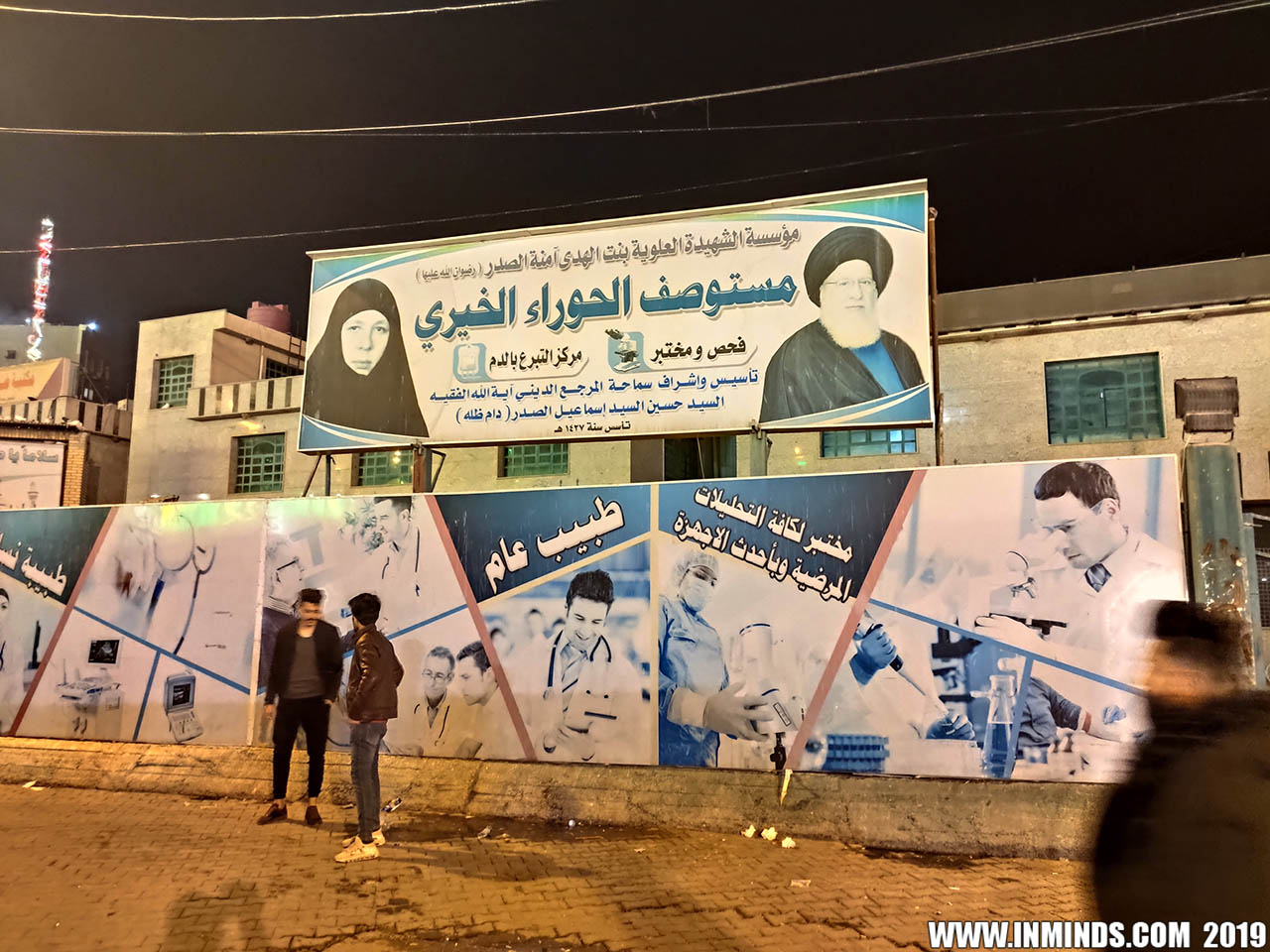 A billboard for Shaheeda Bint Al Huda charitable schools and medical facilities in Kazmain, Baghdad. 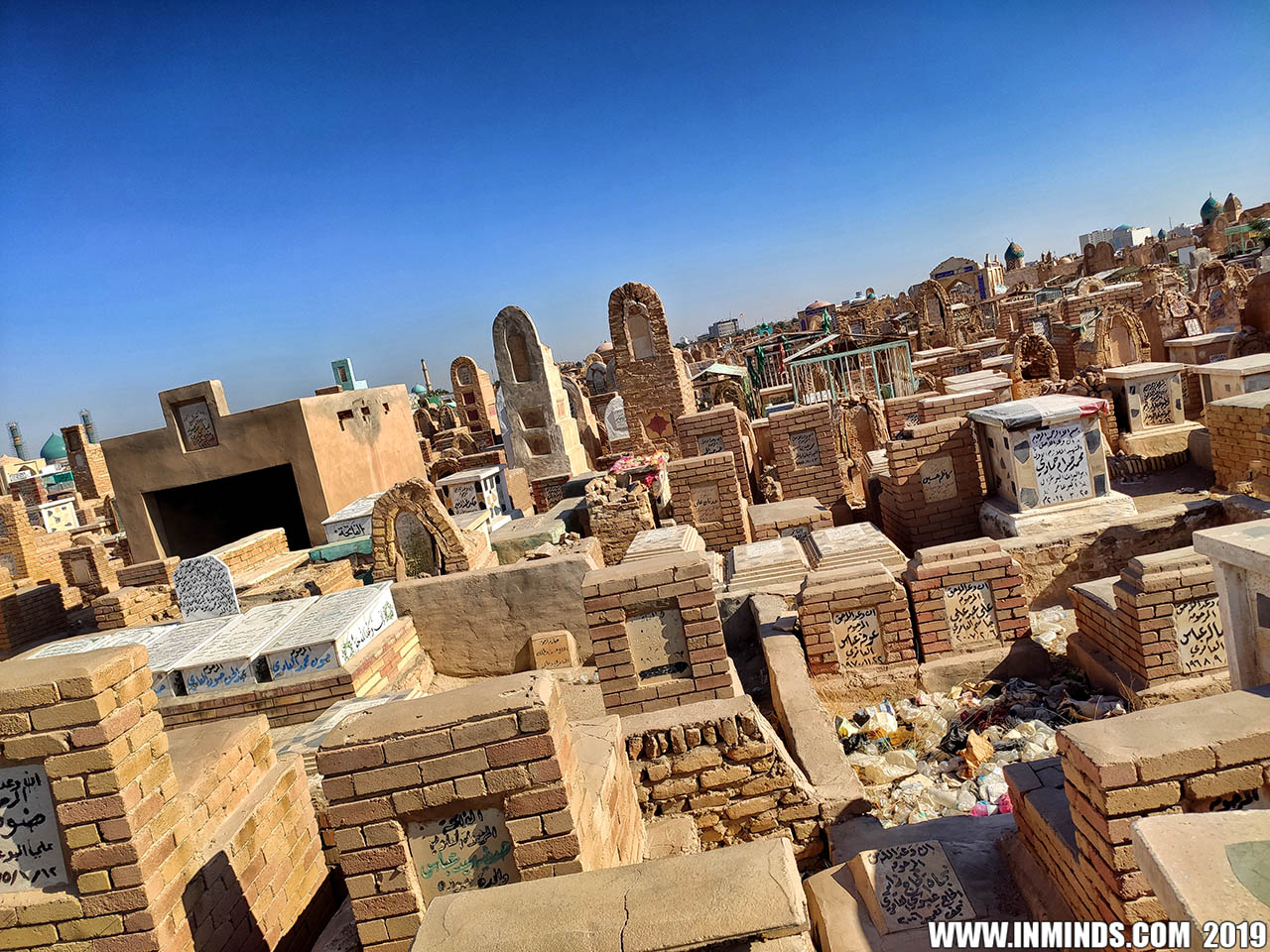 Wadi Al Salaam, mosque of Shaheed Muhammad Baqir Al-Sadr is visible far left 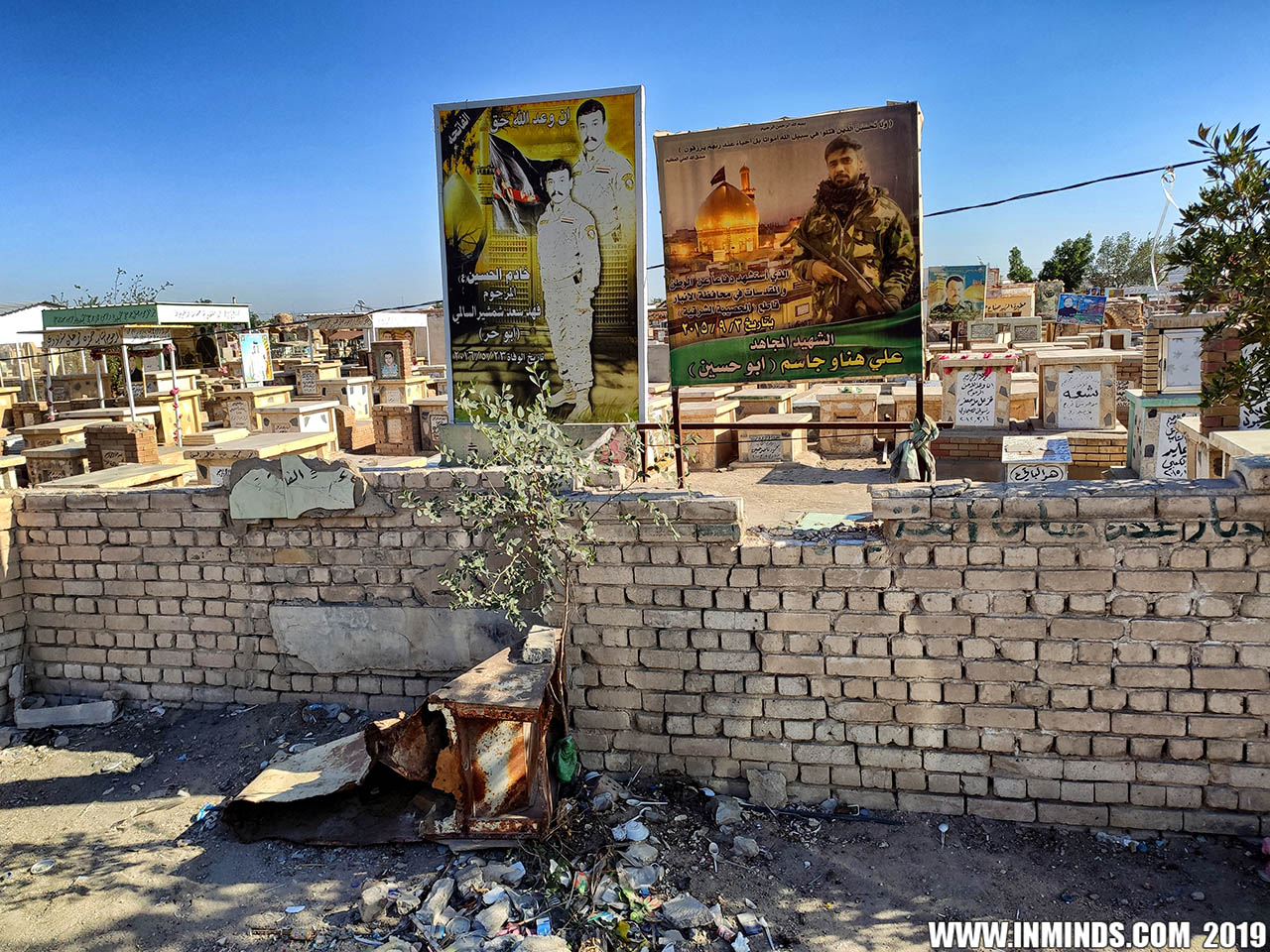 Wadi Al Salaam 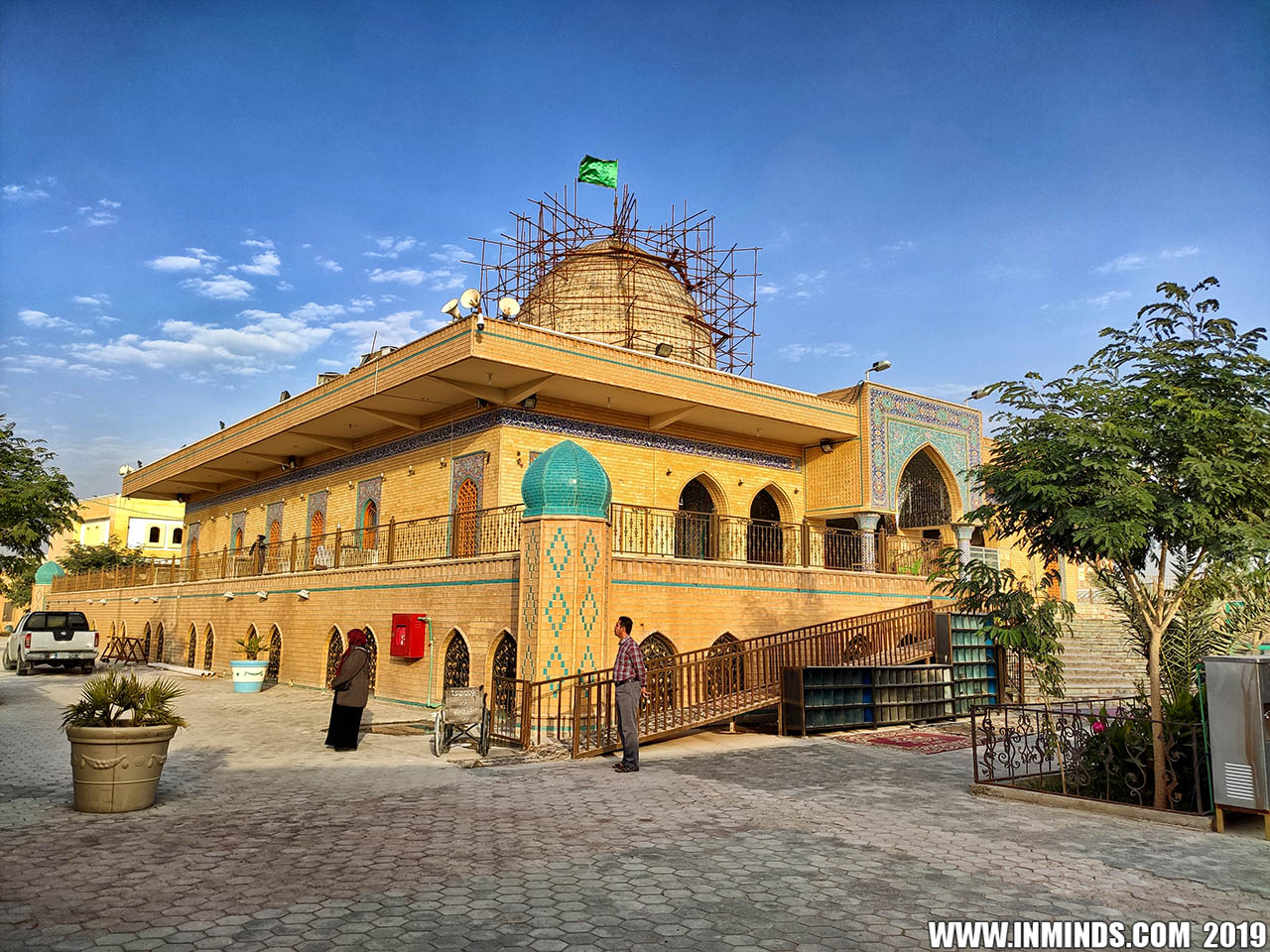 The Mosque of Kumail, Najaf 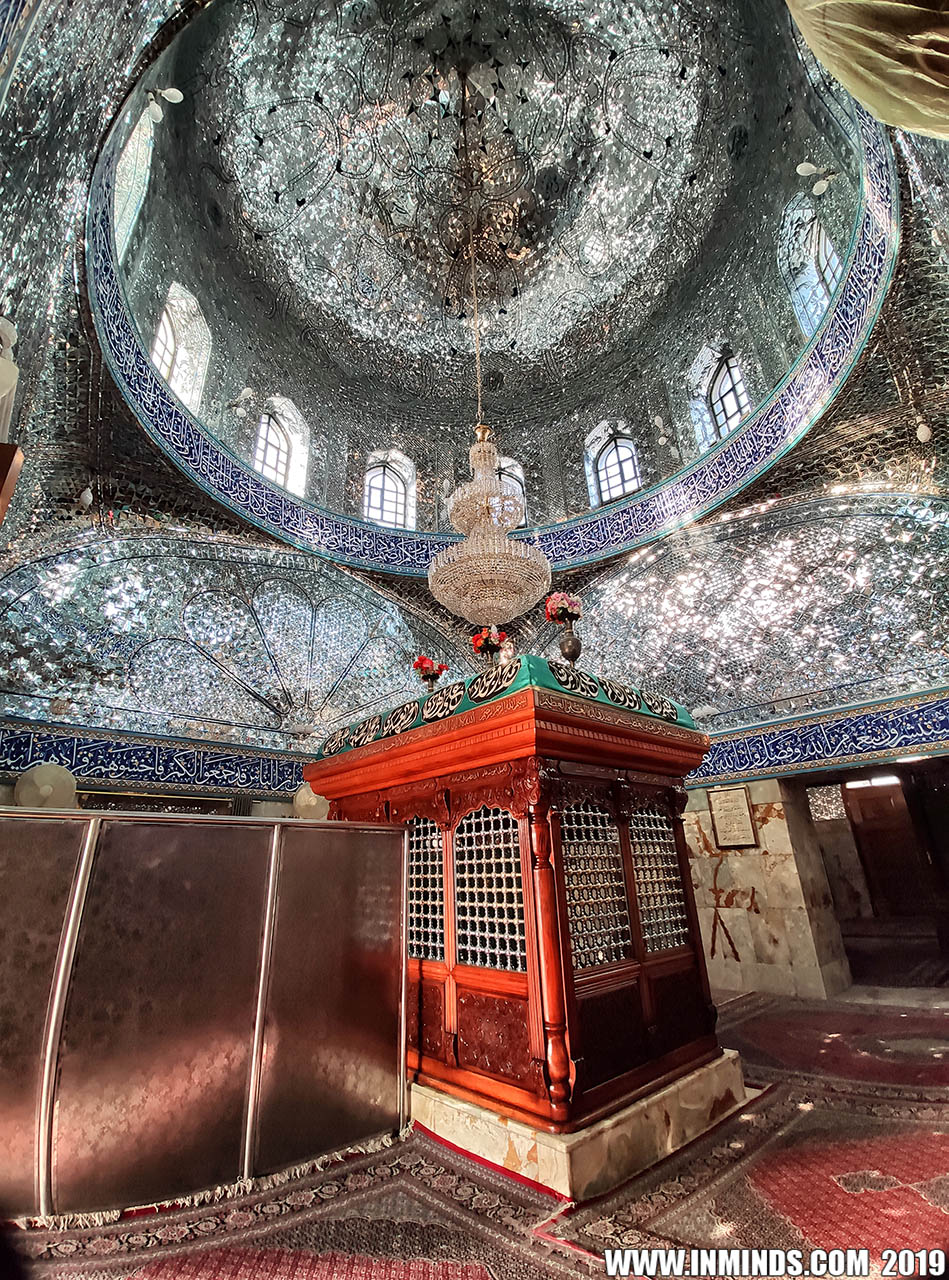 Inside the Mosque of Kumail, in Najaf 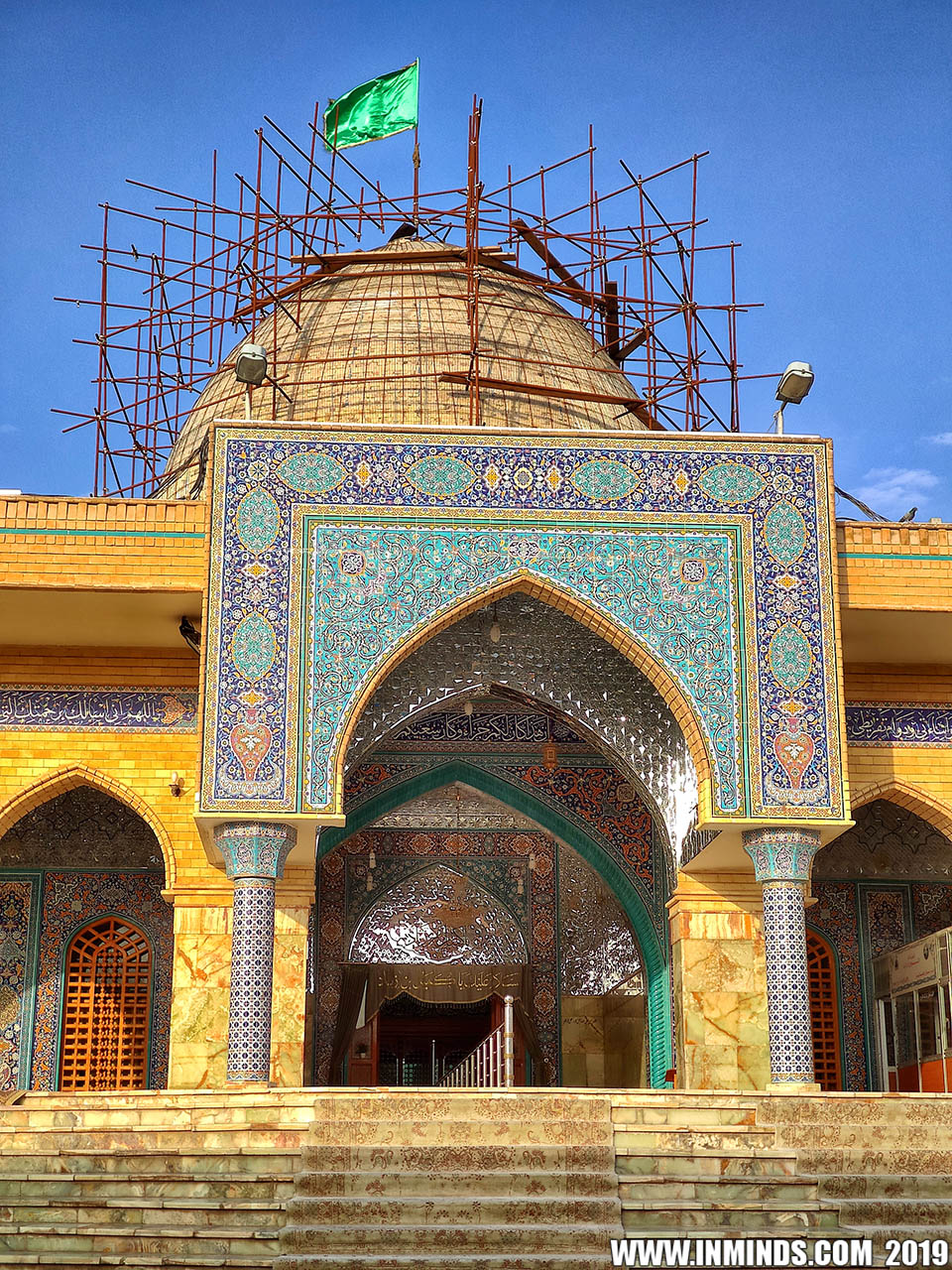 Entrance to the Mosque of Kumail, Najaf 7. The Yemeni RevolutionaryAfter the liberation of Mecca, the Prophet sent emissaries to all the neighbouring lands to explain what Islam was and to invite them to Islam. He sent Khalid bin Waleed to Yemen. When after 6 months not one Yemeni had accepted Islam, the Prophet sent Imam Ali to relieve Khalid bin Waleed of his post and take over. Though initially the Yemeni tribes were very hostile to any mention of Islam, Imam Ali very quickly won them over and all of Yemen embraced Islam at the hands of Imam Ali. I don't know if this historic fact has something to do with the love of Alhul Bait we see in Yemen today, but in any case one of those Yemenis who embraced Islam was Kumayl ibn Ziyad. Kumayl was among the most loyal companions of Imam Ali and during Imam Ali's caliphate we was made a governor in Iraq. Later during Umayyad rule the governor of Kufa, Hajjaj, was particularly unjust and ruthless. He discriminated against non-Arabs and detested followers of Imam Ali. His dungeons caged over 50,000 men and 30,000 women, mainly followers of Imam Ali. The people revolted against Hajjaj. Kumayl, though 83 years old now, saw his duty to fight this oppression and didn't hesitate to join the revolt. The Quran reciters / teachers were the first to join the revolt, they formed their own battalion and Kumayl lead this battalion. Unfortunately the rebellion was defeated and Hajjaj placed bounties on the heads of all the commanders including Kumayl. When he couldn't capture Kumayl, Hajjaj tortured Kumayl's family and tribe. To end their suffering, Kumayl turned himself in. Hajjaj told him "Dissociate from Abu Turab (Imam Ali) and I will let you go." Kumayl replied "Show me a way better than Abu Turab's way. I will follow it!" Kumayl was beheaded at the age of 84. He is buried on a hill in Wadi Al Salaam in Najaf. We visited his shrine. He is renowned for preserving many of the teaching of Imam Ali. Many of Imam Ali's saying on knowledge are from Kumayl.. 👉 O Kumayl, knowledge is better than wealth, for knowledge guards you, while you must guard wealth; and wealth diminishes as it is spent, while knowledge increases as it is disbursed; and the results of wealth disappears with the disappearance of wealth. Perhaps he is best known for the dua of Prophet Khidr which Imam Ali entrusted to him and is now known as Dua Kumayl. Our guide at the shrine focused on one of the lines from Dua Kumayl.. 👉 O Allah forgive me those sins which prevent my duas from reaching You. It's interesting, when we peek into Dua Kumayl, what else our sins can prevent.. 👉 O Allah! Forgive me those sins that change blessings into curses. 😳 and 👉 O Allah! Forgive me those sins that suppress hope. 😳
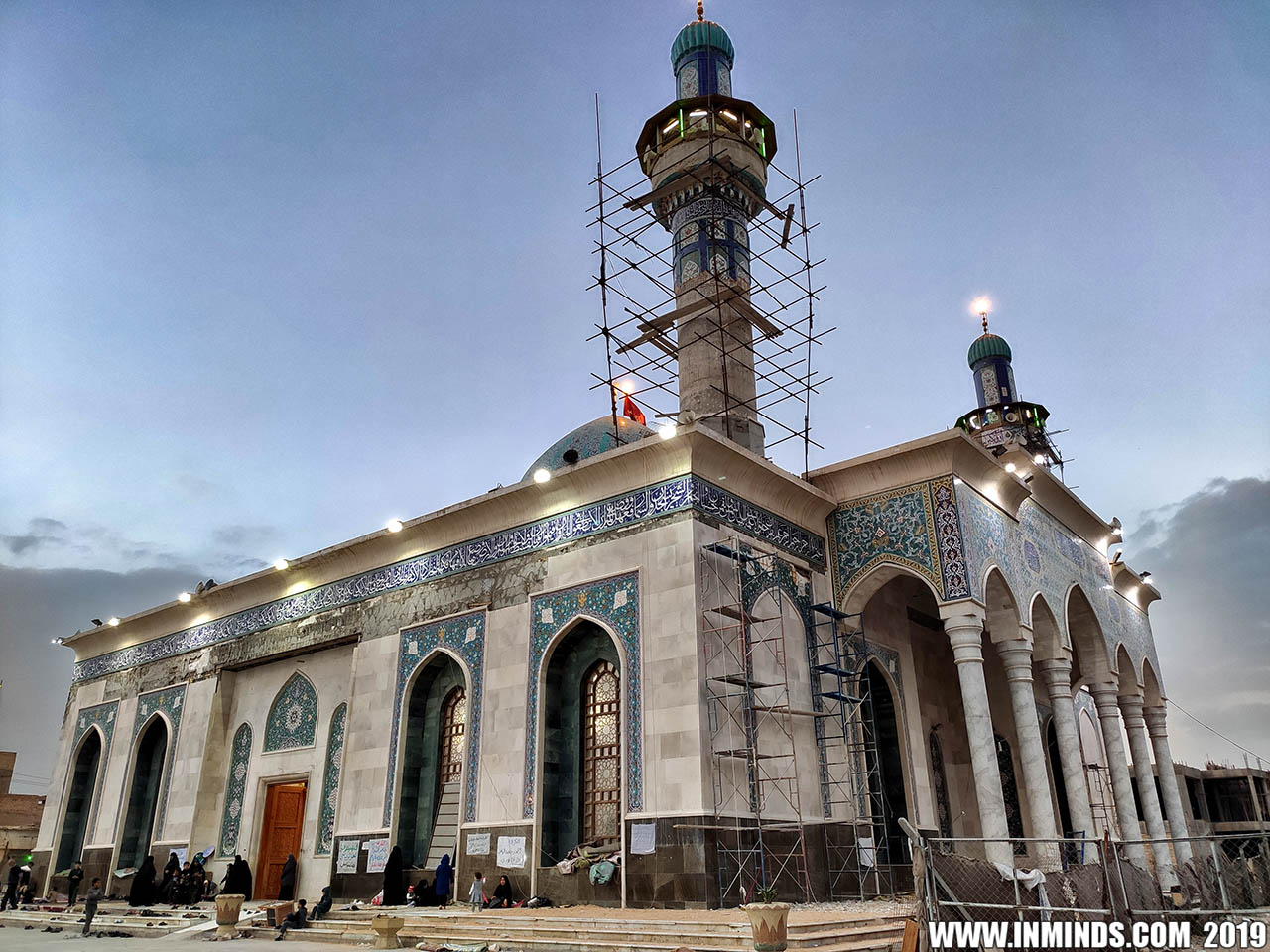 The Mosque of Hurr 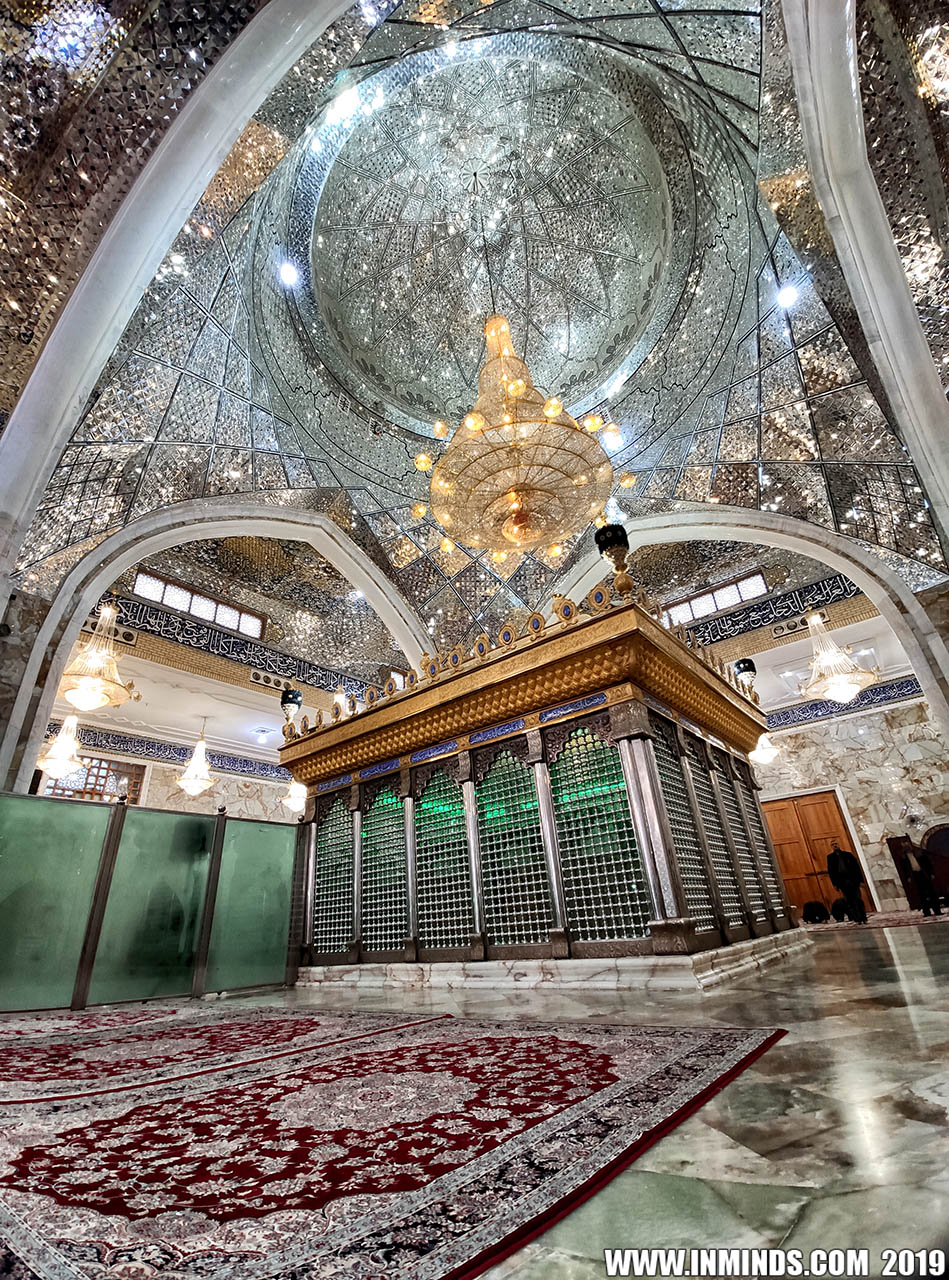 The grave of Hurr 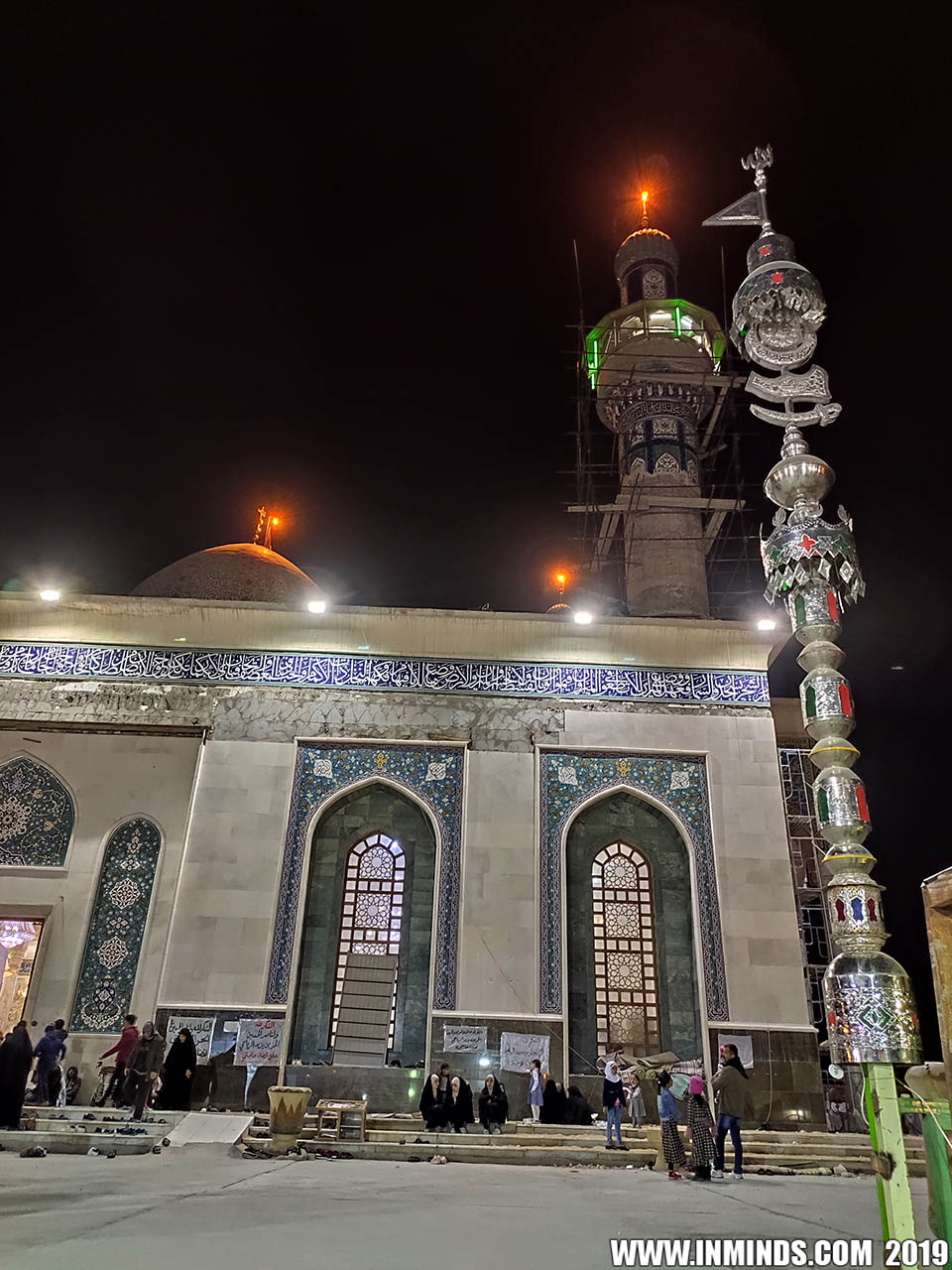 The Mosque of Hurr 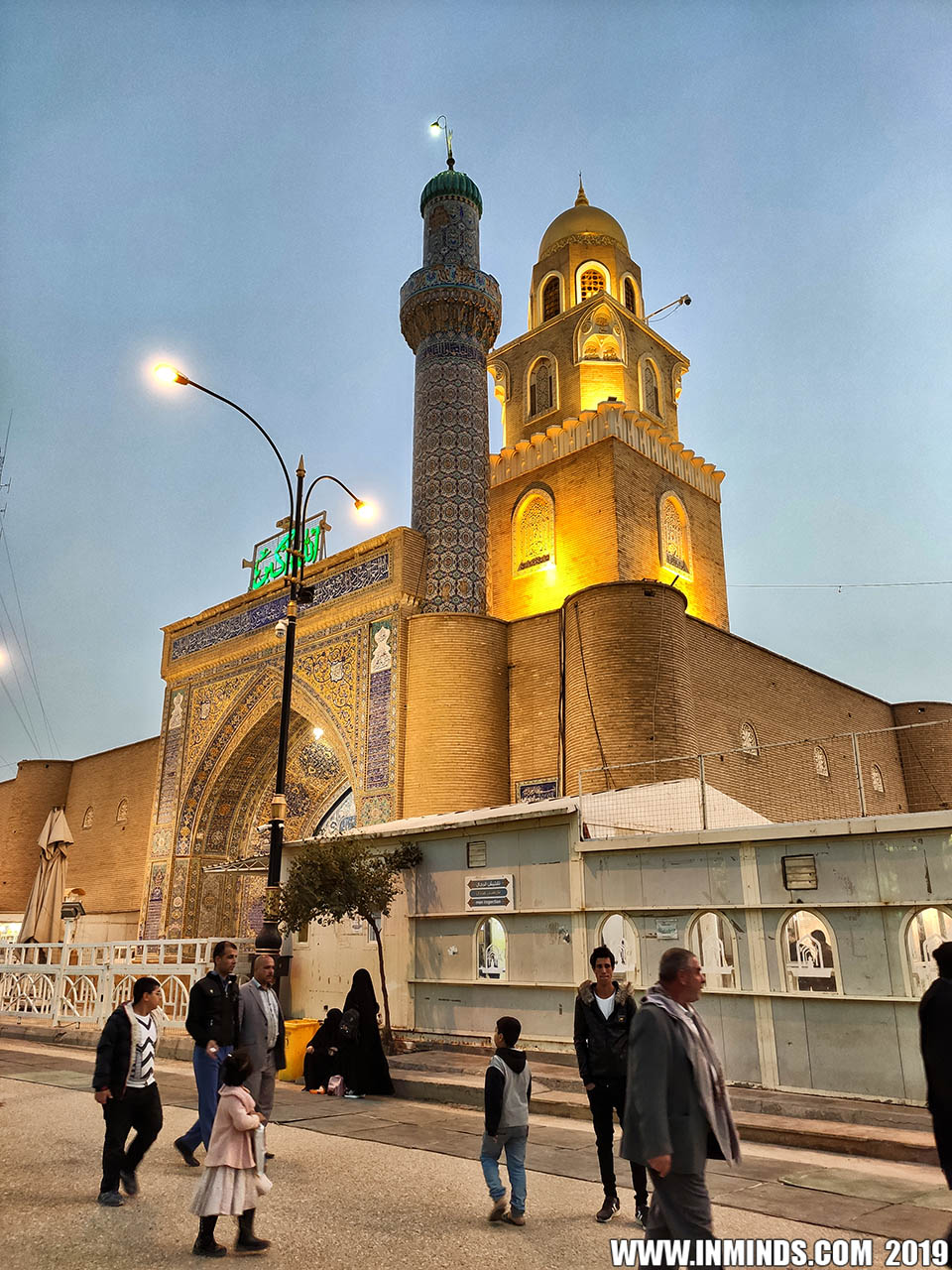 The Mosque of Kufa 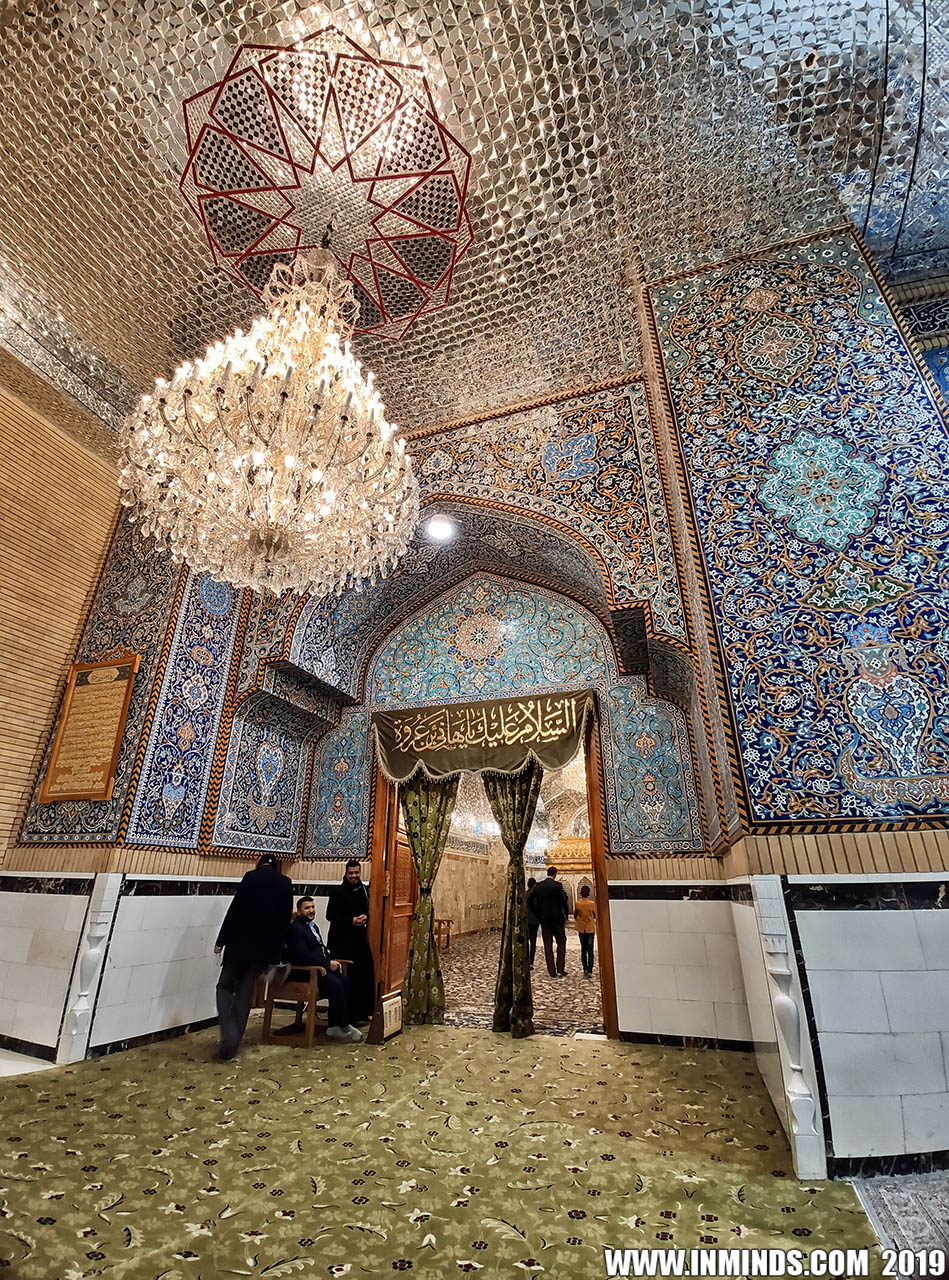 Inside the Mosque of Kufa 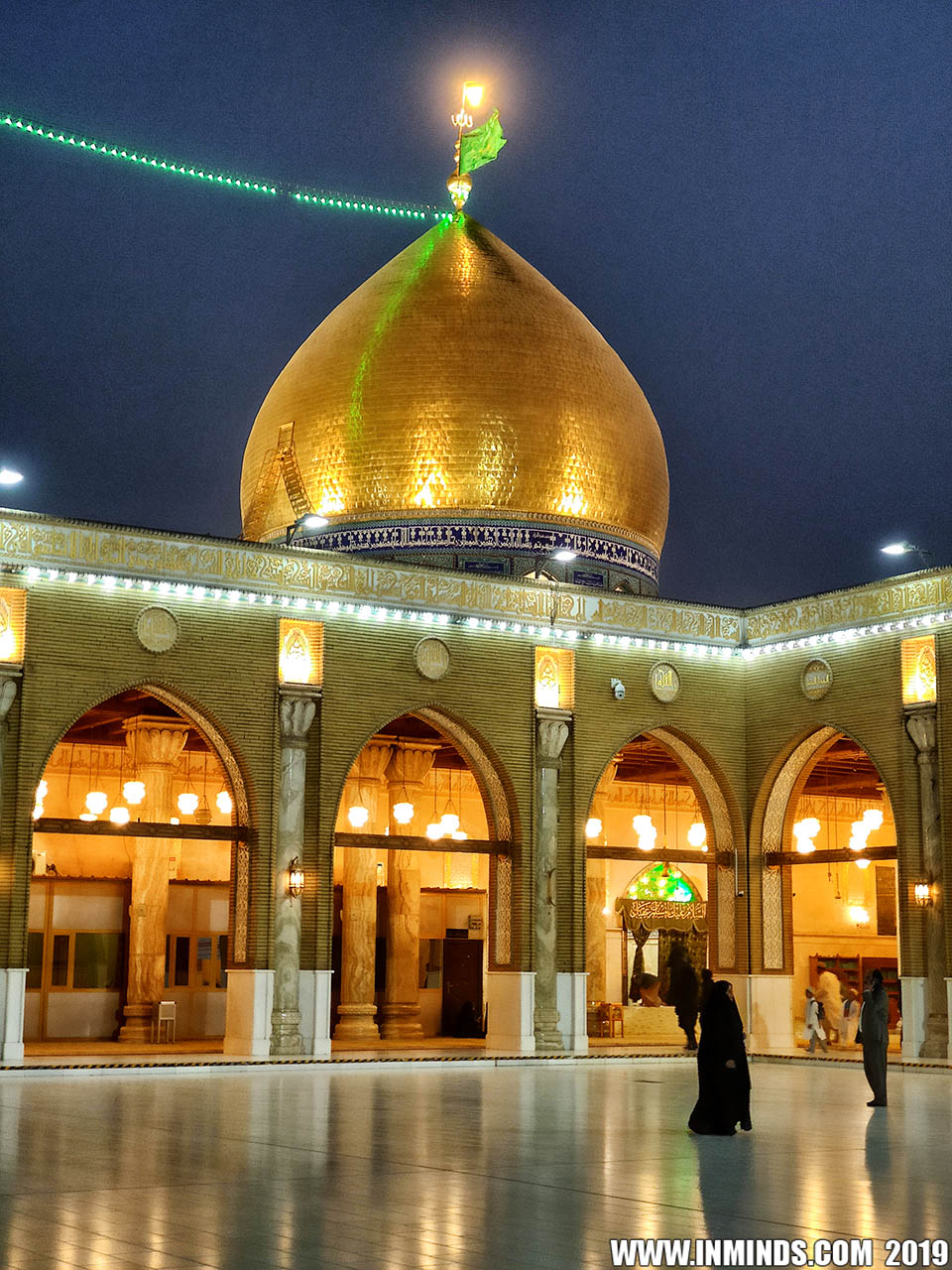 The Mosque of Kufa 8. The cost of FreedomAt a very young age I had teeth problems that required me to attend Guys Hospital every month. It gave me the chance to explore central London whilst the other kids were at school. I would make a bee-line to Charing Cross Street which was the book capital of the UK with dozens of book shops, both new and second hand. My favourite was Al Hoda, an Islamic bookshop. From the money I saved from my paper round I would buy books every month. Al Hoda introduced me to the works of Ali Shariati. Most of his books are actually transcripts of talks he had given in the Hussainia, so they are very easy reading.. As if you were attending a passionate talk rather than reading a dry theology book. Although his views differed, in many ways he prepared the ordinary Iranian masses to be receptive to Imam Khomeini's message. He showed them that at a time when religion was scorned and dumped as inconsequential to the problems of modern society, that in fact Islam was not only relevant, but the best ideology in fighting for justice in today's world. He was arrested by the Shah many times and was exiled to the UK where he mysteriously died just 3 weeks after arriving in the UK, in June 1977 - less than two years before the victory of the Islamic Revolution. Many suspect he was assassinated by the Shah's secret police SAVAK. He is buried next to Sayyidah Zainabs mosque in Damascus. Shariati was not limited to Iran, he continues to inspire revolutionaries around the world. When the Israeli occupiers gunned down Palestinian intellectual revolutionary Shaheed Basel Al-Araj they found his apartment full of the works of Ali Shariati, he was a student of Shariati. One of the books by Ali Shariati I got from Al Hoda bookshop was "Hurr". For me the story of Hurr has always been special. It is a story of redemption - that it's still possible to get on the right path when you have been on the wrong path all your life; and it's about the importance of making the right choice at the right time. It shows us that if we are sure of what is right and what is wrong, then we have to make that decision to side with what is right without overthinking the consequences.. siding with right always has a heavy costs..(it cost Hurr his life), if you start thinking of that cost, it will paralyse you from making the right decision and may cost you your Akhirah - the afterlife. Today we visited Hurr's mosque. He is not buried with the other martyr's of Karbala as his family claimed his body, he is buried it a few miles from Karbala. I want to end with Ali Shariati's passionate account of Hurr.. a must read!
Hur was the name of one of the high-ranking commanders of the army of Omar-ibn-e-Saad who faced the grandson of the Prophet of Islam Imam Hussain ibn-e-Abi Talib(a.s.), with orders from Yazeed-ibn-Muawiah(l.a.) to either get Hussain(a.s.)'s allegiance for his corrupt Khalifat, or kill Hussain(a.s.) and all his friends. It was Hur and his army who first faced Imam Hussain(a.s.), and then kept them under siege, preventing them from getting water. On the day of Ashoura, Hur made a huge decision. Right before the battle started, he left his position and the army he was commanding, and joined Imam Hussain(a.s.), and was the first to be killed in the way of Allah(swt), by the army he used to be a commander of just a few hours earlier. The name "Hur" means free, freeborn, noble, freeman. The fate, sometimes, plays a game. The factory of creation, constantly producing uncountable things, stones, trees, rivers, animals, insects, human beings, sometimes shows a scene of humor, creates an innovation or an exception: it writes a poem, paints a work of art, does something unique...In one word, it can be said that these items have a "character". From among the houses, Kaabah, from all the walls, the China Wall, from the planets orbiting the sun, earth, and....from all the martyrs: Hur. The artistic hands of destination have composed this scene with utmost precision, and as if to emphasize the importance of the story, have selected all the characters of the play from the "absolutes", to make the story most effective. The story is about a "choice", the most important manifestation of the meaning of human being. But what kind of choice? We are all faced with several choices in our everyday life: career, friend, wife, house, major.. But in this story, the choice is much more difficult: the good and the evil. And even so, not from a philosophical, scientific, or theological perspective. Instead, the choice here is between the truthful and the deceiving religion, between the just and unjust politics, with life being the price to pay. To further emphasize the sensitivity of the situation, the author has not put the hero of this story in the middle, equally between the right and the evil. Instead, the hero is the head of the army of the evil. On the other hand, the director of this play has to find symbols for his story to make them most effective. Should he have Promete on one side and some demons on the other side? But this makes the story too mythical...Spartacos and Crasios? no...this makes the story nationalistic and gives it a class dependent nature. How about Ebrahim and Namrood? Moses and Feroh? Jesus and Judas? no... again, for most of the people these are metaphysical and heavenly characters different from common ordinary people. Having them as heros reduces the effect of the story, and causes people to admire them, but never think about following their examples in their everyday life. However, the main purpose of this story is to teach, to show the ability of the man to change, to show how it is possible for a common and even sinful man to reject all his social, family, and class ties and show a god-like change. The history of Islam is full of contradicting features. The two lines starting from Habil and Ghabil, existing throughout the history side by side though in different faces, have also continued in Islam. Now, both these streams are dressed in Islam, but in opposite directions. Ironically, our hero is faced to choose between the most extreme ends in each of these parties: Yazid(l.a.) and Hussain(a.s.). Indeed, had this story been created by an author, he should have been recognized for his genuine and art... What is the name of this hero? For a historic figure, what is important is the role he plays, and not his name, since his name is something chosen for him by his family, according to his parent's taste.. On the other hand, if the story is created by an ingenious writer, he would choose a name which is relevant to the role of his hero. In this story however, our hero has been named by his mother, "Hur", as if she has been able to foresee the sensitive role his son is going to play. And thus, when the Imam of freedom attends his bloody body, just before his death, tells him: "O Hur! God bless you! You are free both in this world and in the world to come, just like what your mother called you!" Although Hur has played a unique role in the history, the essence of his role is not just confined to himself. The meaning of his action, in fact, includes all human-beings, and indeed defines "humanity". It is what distinguishes the human-beings from other creatures, underlining the responsibility of man with respect to God, people, and himself. And Hur has not played this with words and concepts, but with love and blood. If one grasps the depth of this saying from Imam Sadegh(AS) that "All days are Ashoura, and all places are Karbala, and all months are Moharam" one readily feels the extension: "and all human-beings are Hur!" Our history, starting from Habil and Ghabil, is the manifestation of the eternal conflict between the two poles of God and Satan, though in each period of time these two poles have disguised differently. Therefore, in each period of time, every human-being finds himself just in the same position as Hur did: alone, in the middle, hesitating, between the same two armies. On the one side, the commander of the army of evil shouts on his soldiers: " O Army of God! attack!" and on the other side, an Imam, with a voice echoing throughout the history asks -and not commands- "Is there anybody who wishes to assist me?" and you, the man, should choose. It is by this choice that you become human. Before this choice you are nothing, you are just an existence without essence, you are standing in the middle. Thus, the man who has found "existence" through birth, finds "essence" through choice. It is by this choice, that the creation of man completes, and this is exactly when the man feels this heavy burden on his shoulders and finds himself alone, as God and the nature have left him on his own on this dangerous decision. Now we can evaluate our hero, we can feel what a long journey he has gone through in what a short time, to change him from a Yazidian Hur, to a Hussain(a.s.)ian Hur. If he stays with the army of Yazid, his world is guaranteed, and if he joins the small army of Hussain, his death is eminent. It is the morning of the day of Ashoura, and although the battle has not yet started in the fields, Hur realizes that the opportunity would not last. Time goes by fast, and the moments count. The storm has already started within him. From the beginning, Hur was hoping that the events would not lead to war, but now war seems to be unavoidable. Human-beings have limited capability in tolerating shame and scorn, except for those who are genius in this respect and can tolerate disgrace unlimitedly. Hur never had thought that being an "employee" of the government of Yazid would mean collaborating in Yazid's criminal acts. For him his job was just a source of income without having anything to do with politics or his religion. Hur now realizes that adding his position with his religion is impossible. Thus, hopelessly and as a last resort he talks with the commander of the Army (Omar-ebn-Sa'd) who like himself is reluctant to get in a war and has accepted the mission to become the governor of the province of Ray and Gorgan. What would then be better than coming up with some sort of a solution without getting involved in the blood of the grandson of the Prophet and his family. Hur and Omar-ebn-Sa'd both have come all the way from the palace of Yazid to Karbala together and they share the same status and social class. Hur asks Omar: "Can't you find a peaceful solution for this situation? " "You know that if it had been up to me I would have done as what you propose, but your master Obeid-Allah-Ziyad did not accept a peaceful resolution!" "So are you going to fight with this man (Hussain(a.s.))?" "Yes, by God, I will fight a battle the least consequence of which will be separated heads and broken arms!" Now, it is evident that no longer can he play games with his religion. Now, the two separate their paths. For Hur, Yazid's army of tens of thousand is now nothing more than a bunch of faces, without meaning. A crowd of men without selves, a group of people without hearts, those who shout but don't know why, fight but don't know for whom. Now the Jesus of love and conscience cures a blind and resurrects a dead, creating a martyr from a murderer. In a journey it is not enough to ask for the destination, but one should also ask from the origin. Thus, the length of Hur's journey becomes evident when one realizes from where he started, and to where he ended, all in half-a day's time. In his emigration from Satan to Allah , Hur did not study philosophy or theology, nor did he attend any lectures or schools. He just changed his direction, and it is in fact this "direction" which gives meaning to everything: art, science, literature, religion, prayers, hajj, Mohammad, Ali... Having started his journey, and riding his horse, he slowly leaves his Army toward Hussain. Muhajer-ebn-Ous, who sees him agitated and worried asks: "Whats wrong with you Hur? I am puzzled by your case, by God if I were asked about the bravest man in our army I wouldnt hesitate to mention your name, and now you are so disturbed and worried?" "I find myself between the Hell and the Heaven, and I have to select between them, and by God I will not choose but Heaven, even if I were cut to pieces or burnt to ashes!" The creation of Hur was completed and the fire of doubt has led him to the verity of certitude. He slowly approaches the camp of Hussain, and as he gets closer he hangs his boots from his neck, and keeps his armor down (as a sign of remorse) "I am the one who closed your path O Hussain(a.s.)" He didnt accept Hussain(a.s.)'s invitation to rest for a while.. "Is there a repentance for me?" He can't wait any longer, he returns to the front and attacks the army of Omar with the most severe and bitter words, letting his ex-army and ex-commander know that he is no longer a slave, he is free, he is "Hur". Omar-ebn-Sa'd, his ex-commander, responds by throwing an arrow and yelling "Be witness and let Amir-ol-momenin know that I was the one to throw the first arrow at the army of Hussain! And this was how the battle of Karbala started......... 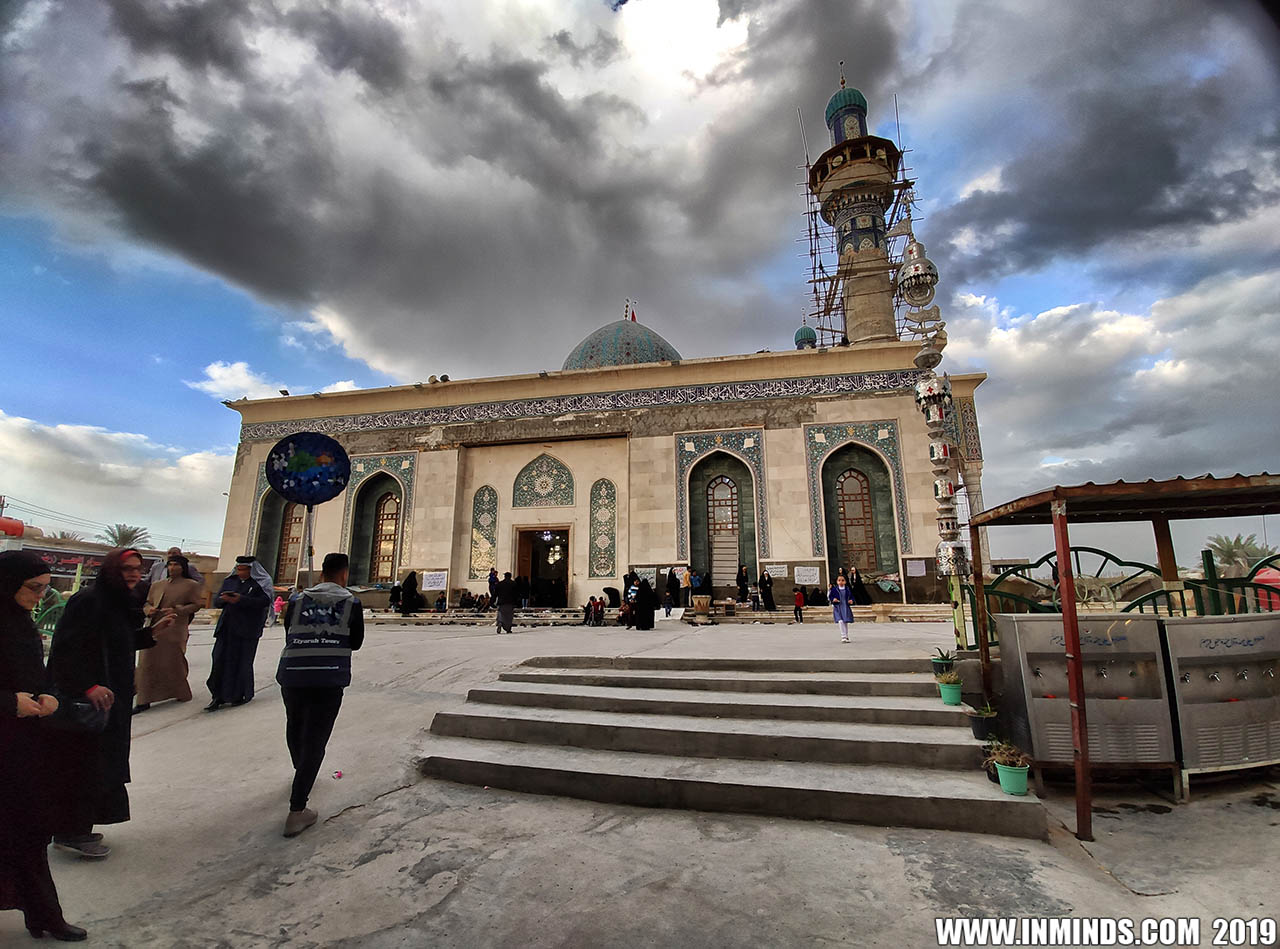 The Mosque of Hurr 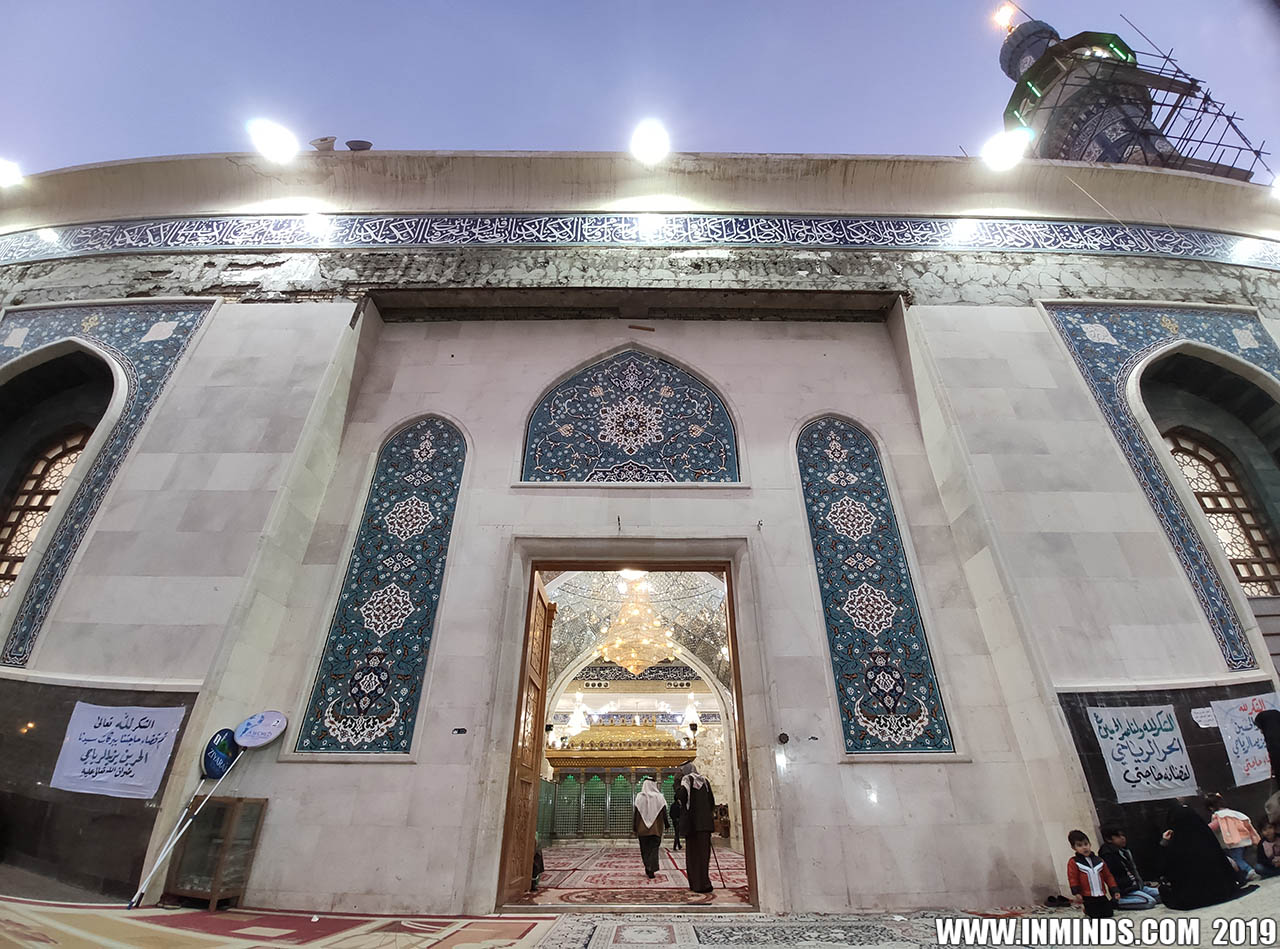 Entrance to the Mosque of Hurr 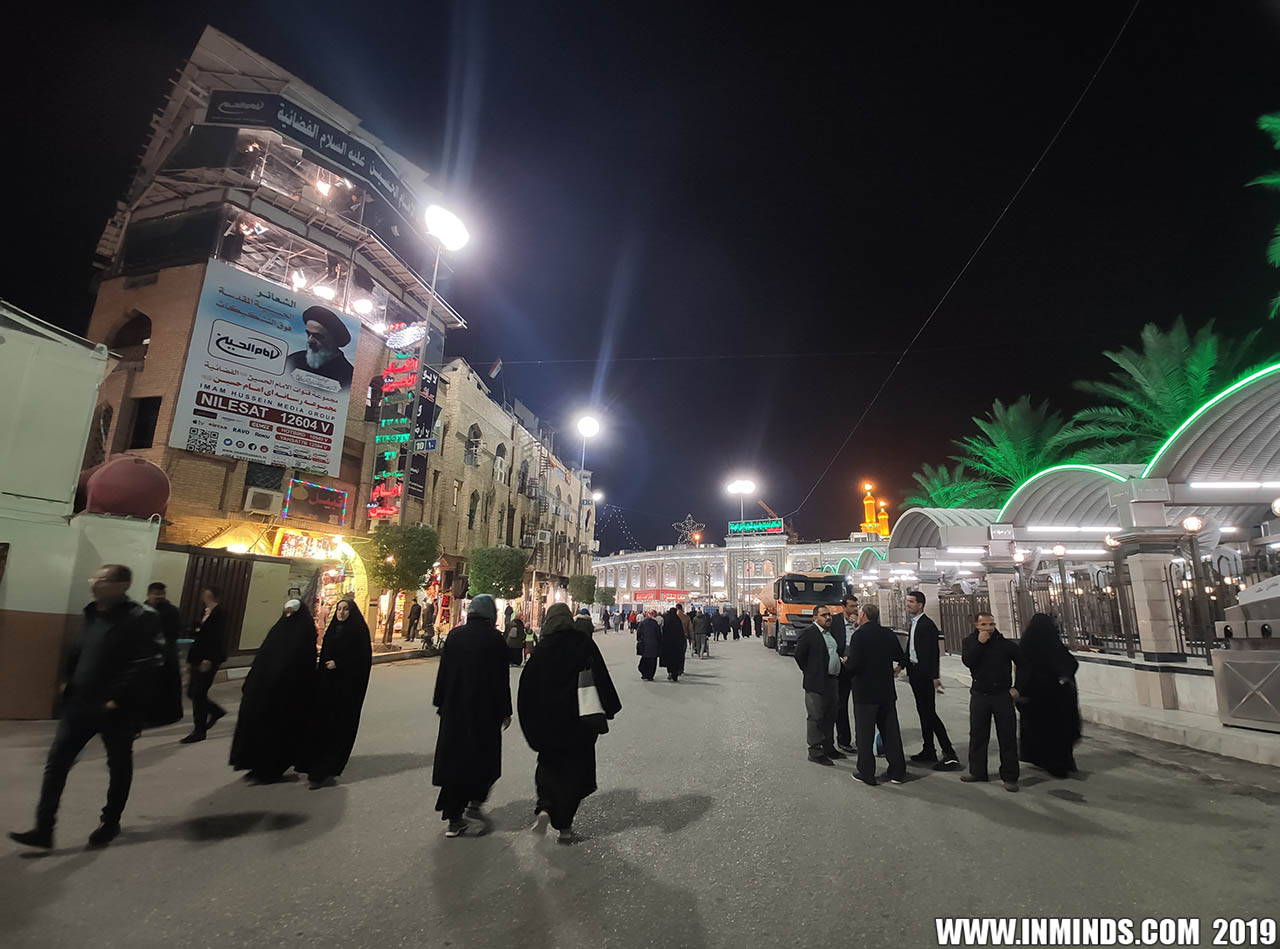 Imam Hussein TV studio building on left with Imam Hussain's Shrine visible on right 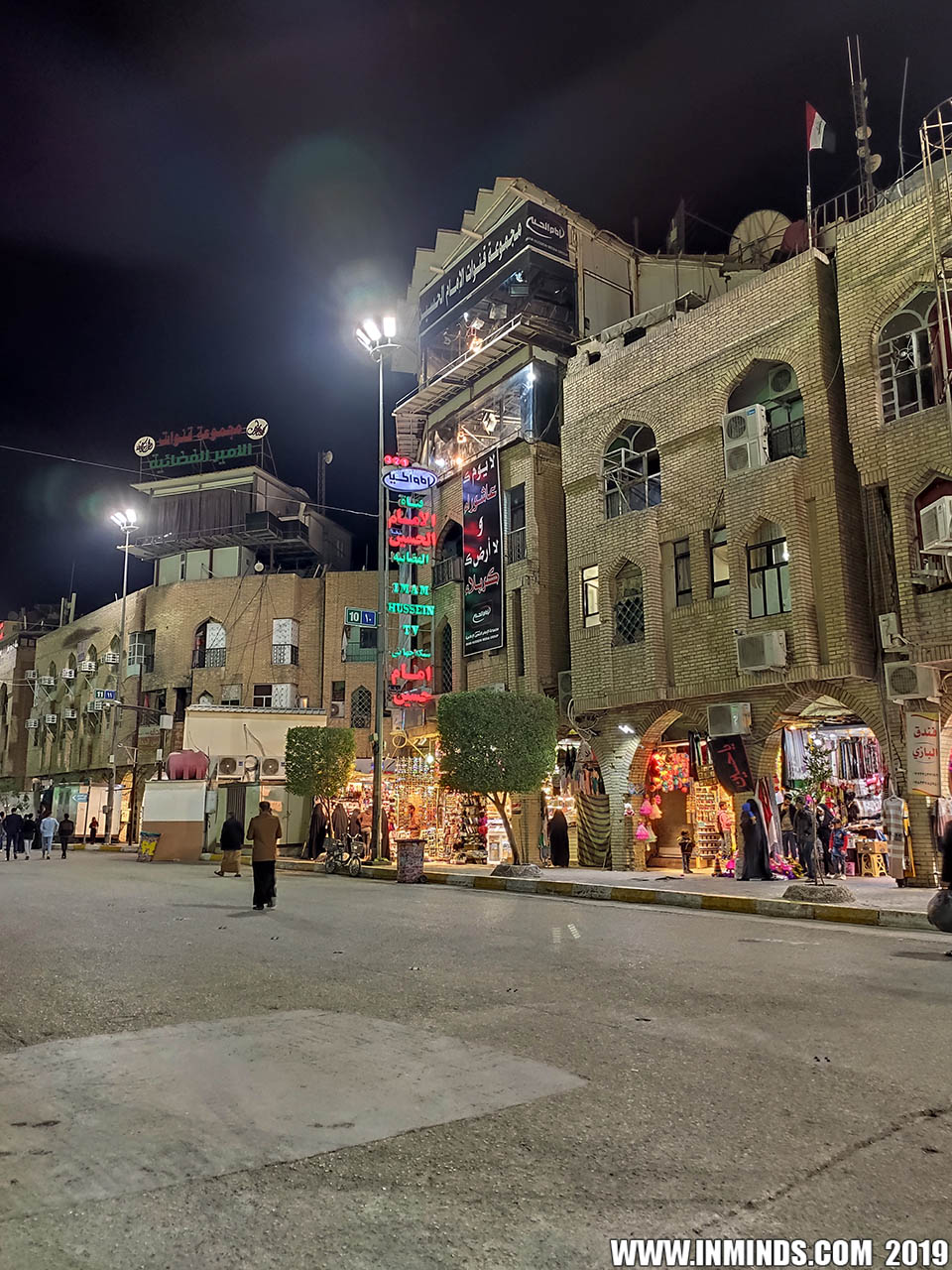 Imam Hussein TV studio building (see studios on top two floors) 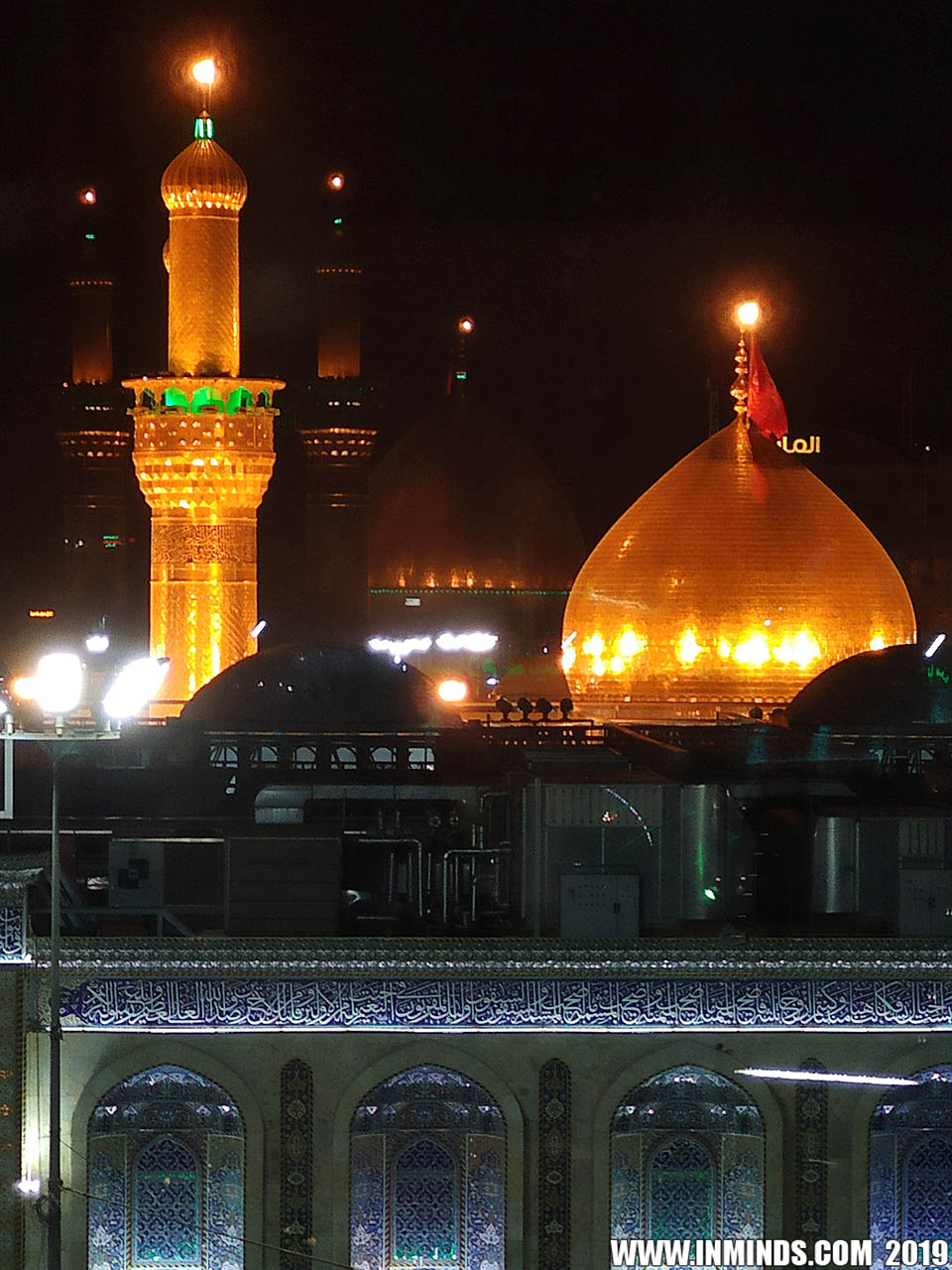 View of Imam Hussain's Shrine 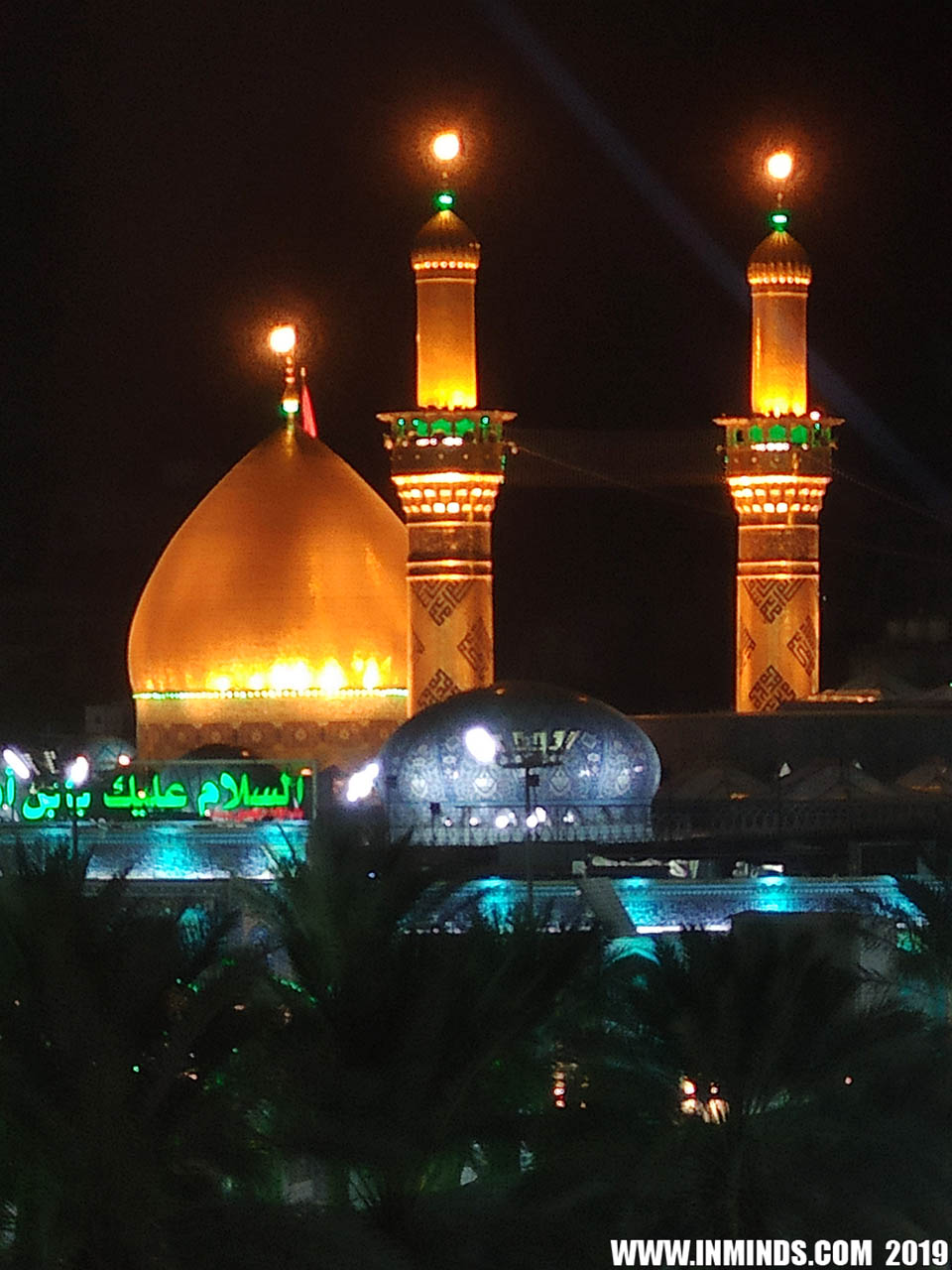 View of Hazrat Abbas's Shrine 9. A Corrupted MessageLast night we were invited to visit Imam Hussein TV studio (imamhussein.tv), apparently they have the best views in Karbala. They are situated between the two Shrines of Imam Hussain (as) and Hazrat Abbas (as) so you can see the domes of both from the studio which is situated on the top floor. I had never heard of Imam Hussein Media Group so was interested in visiting. Upon entering the building alarm bells started ringing inside my head straight away as I saw the walls were littered with photos of Sayid Sadiq Husseini Shirazi ( not to be confused with the renowned revolutionary Islamic scholar Ayatullah Nasser Makarem Shirazi). General consensus is that the (Sayid Sadiq) Shirazis, whilst very well funded and connected, represent a very backward reactionary trend which is often willingly co-opted by imperialist powers to do their biding, especially when it comes dividing Muslims.
The studio windows were blacked out by large curtains. Before unveiling the view, the anchor, a perfect showman, explained that we were about to see the best view in the world, it was normal to get emotional, he encouraged it. With the cameras rolling, he greeted the two Shrines with tears running down his face, prompting others to follow suit. It was certainly a beautiful view of the shrines. He showed us a large red flag with Ya Hussein written on it in Arabic and lots of names scribbled on it in marker pen. He claimed that their media empire was funded solely by viewers of Imam Hussein TV which he dubbed Husseinis. He told us that the flag is sacred as it's been kept in the shrine of Imam Hussein for several weeks and has been rubbed on the zari ( tomb grating) of Imam Hussein. Only Husseinis who sponsor the channel get the privilege of having their name on the flag, but in our case as guests of the channel they will place our names on the flag even if we decide not to donate to the channel. If we don't donate then that was between us and Imam Hussein to settle. He then, holding the marker pen, went round, starting with me, asking peoples names to write down. I politely declined to give my name saying I'd rather not have my name on the flag. He insisted saying that afterwards the flag with my name on it will be taken back to Imam Hussein's shrine, a great blessing. I again declined. The others did not decline and were given standing order donation forms displaying the title confirming "I Am Husseini" on a bright yellow plaque. I asked that with so many photos of Sayed Sadiq Shirazi, was he sure they weren't receiving any funds from him? He categorically denied it. But later admitted that the channel has been granted special authority to collect Khums money on behalf of Sayed Sadiq Shirazi to bankroll the channel. That explained the prime location, equipment and resources to broadcast in so many languages. I asked if their channel covered the oppression of Muslims around the world.. I mentioned Nigeria and Sheikh Zakzaky.. he looked confused, when I mentioned Palestine he looked offended. I asked do they only represented the views of one âmarjaâ or if they covered other viewpoints? He said they only covered "independent marja, not political marja". He said he wasn't saying that "Khomeini and Khamenei were going to hell", but they had differences with them. The channel had began in Iran but the Iranian government had shut it down, prompting them to relocate to Kerbala. They also have plush studios in Edgware in London. The Shirazis specialise in igniting sectarian conflict by insulting and abusing historic Sunni religious personalities in the most depraved ways, something that all leading Shia Marja have totally condemned. This has lead to their channels bring closed down in Iran and arrests made - for hate speech against fellow Muslims which only benefits those who want to destroy the Ummah, by stoking sectarian violence to the benefit of imperialist powers who sit back and reap the rewards. Syed Hassan Nasrallah has referred to this trend as "agents used and employed by British Intelligenceâ and Ayatullah Khamenei has called it "British Shia" and compared it to "American Sunni" and DAESH, all nothing to do with real Islam. He said : "And some people fuel the fire of such discord. English Shia and American Sunni are the same. All of them are the same. They are the two edges of one pair of scissors. They are trying to pit Muslims against one another." Shirazi leading lights in the west include Yasir al Habib in the UK and "Imam of peace" Muhammad Tawhidi in Australia. Yasir Al Habib has been accused of working for MI6. What is certain is that his early release from a Kuwaiti jail and subsequent fast tracked UK asylum application / citizenship followed by opening of his "Islamic" centre and satellite TV channel broadcasting pure hate from the UK to the Muslim world, could not have happened without help from the British Foreign Office. The British authorities also facilitated the group's attack on the Iranian embassy in London, with police standing by watching for 3 hours whilst Habib's thugs walked pass the special embassy police, carrying long ladders and clubs to scale the embassy walls and attack embassy staff. This followed their prosecution in Iran for spreading anti-Sunni hate. Muhammad Tawhidi, despite his claims to having graduated from an Islamic seminary in Qum being exposed as totally fraudulent, was in his own words "crowned" by Syed Sadiq Shirazi, giving him top spot on Imam Hussein TV channel as an "Islamic scholar" and bankrolling an Islamic centre for him in Australia. Tawhidi is the darling of racist islamophobes. He is a regular guest at anti-Muslim fests like ex EDL leader Tommy Robinson's YouTube channel. In a scripted interview with Tawhidi, Robinson outlined the goal of the interview was the removal of Islam from Britain stating, âWe have to stop Islam. Not extremism or radical Muslims, we have to stop Islam in the UK.â Robinson then went on to argue that the Qurâan inherently calls for genocide of all non-Muslims to which Tawhidi agreed! â[Do] you accept thereâs a lot of violence in the Quran?â âYes, yesâ Tawhidi replies. âDo you accept there is incitement to murder non-Muslims in the Quran?â âYesâ comes the answer again. âDo you accept there is even incitement to murder non-Muslims who havenât done anything other than being non-Muslim?â âEven murder Muslims that donât agree with youâ claims Tawhidi. At a Zionist gathering in New York, Tawhidi proclaimed "Palestine is Jewish land" , that Muslims are mistaken to think Jerusalem is a sacred site.Tawhidi went on to call political Islam âa disease,â and accused Americaâs first two Muslim women in Congress, Ilhan Omar and Rashida Tlaib, of âbringing a Hamas agenda to the U.S. Congress.â This was picked up by republican senators and used to attack and abuse the two Muslim women. In an interview published in the Daily Mail, Tawhidi claimed "there is no such thing as Islamophobia". In another he has described the Muslim presence in Australia as an "infestation". He has also called for the destruction of the Islamic Republic of Iran and the reinstallation of the Pahlavi dictatorial monarchy. Just imagine that this man who clearly hates Islam and Muslims, used to work in the same Imam Hussein TV studio studio we visited in Karbala, under the patronage of Syed Sadiq Shirazi, as their key English âscholarâ with several regular programmes of his own. Even today his programmes are still available on Imam Hussein TV YouTube channel, a clear indication that despite his openly islamophobic attacks on Muslims and Islam, the channel has not disowned him. The Shirazis also have a fixation on blood letting, apparently the more you cut yourself with a knife, the more you love Imam Hussein. They call it "A Lovers Craze" on their channel. Practically every leading Marja has condemned this practice as either outright haram, as against the principles of Islam, or otherwise bringing disrepute to the faith. In the past their channel spokesman Tawhidi has tweeted "If all Maraji Taqlid rule that Thatbir [blood letting] is haram. We say goodbye to Taqlid, not Thatbir." The Shirazi media empire might have the best views of Imam Hussein's shrine, but what good is it if you are blind to the actual message of Imam Hussein? But the question that begs an answer is why is such a divisive channel allowed to function at a prime location a few metres for the Shrine of Imam Hussain(as)? 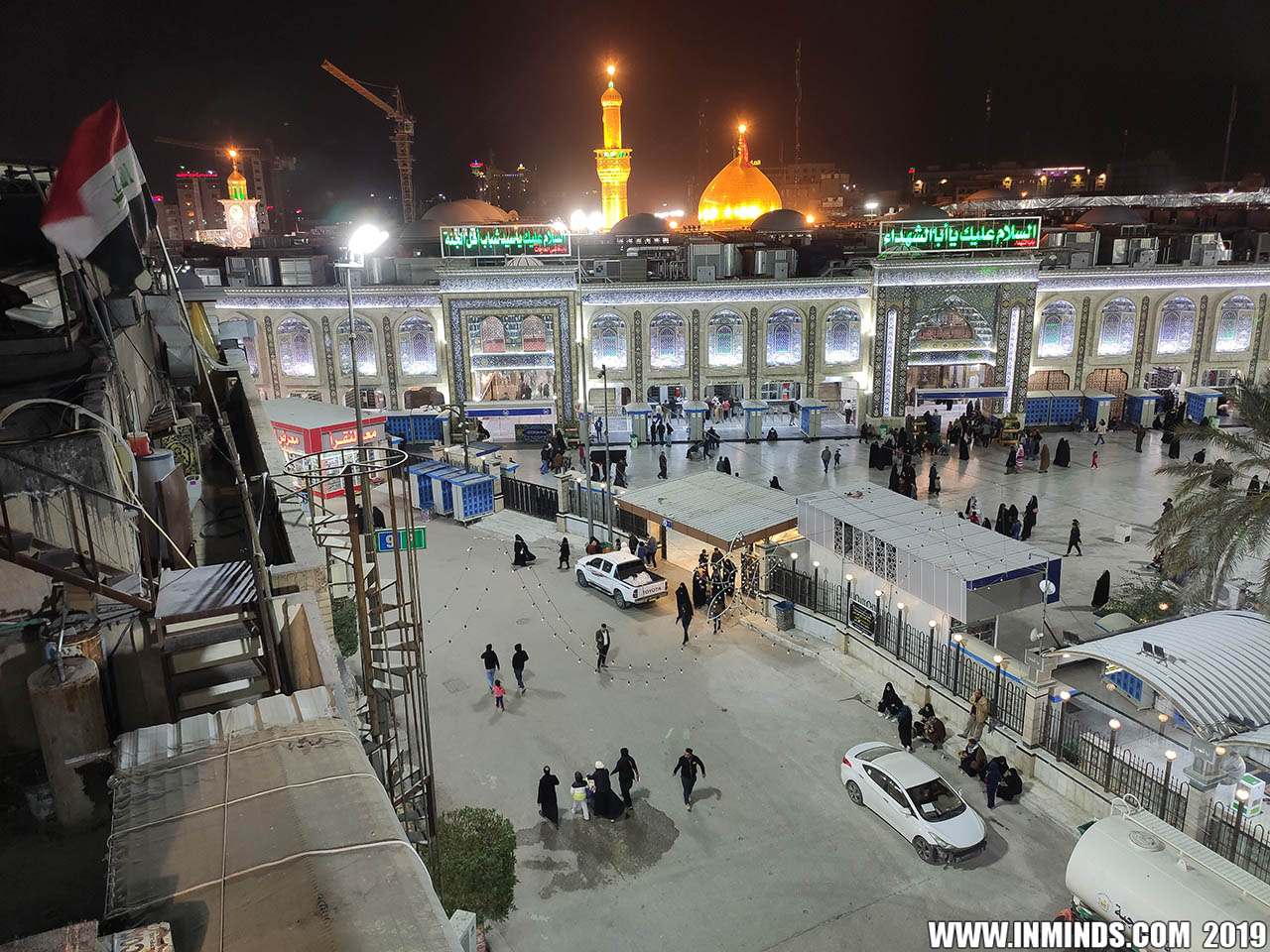 View of Imam Hussain's Shrine 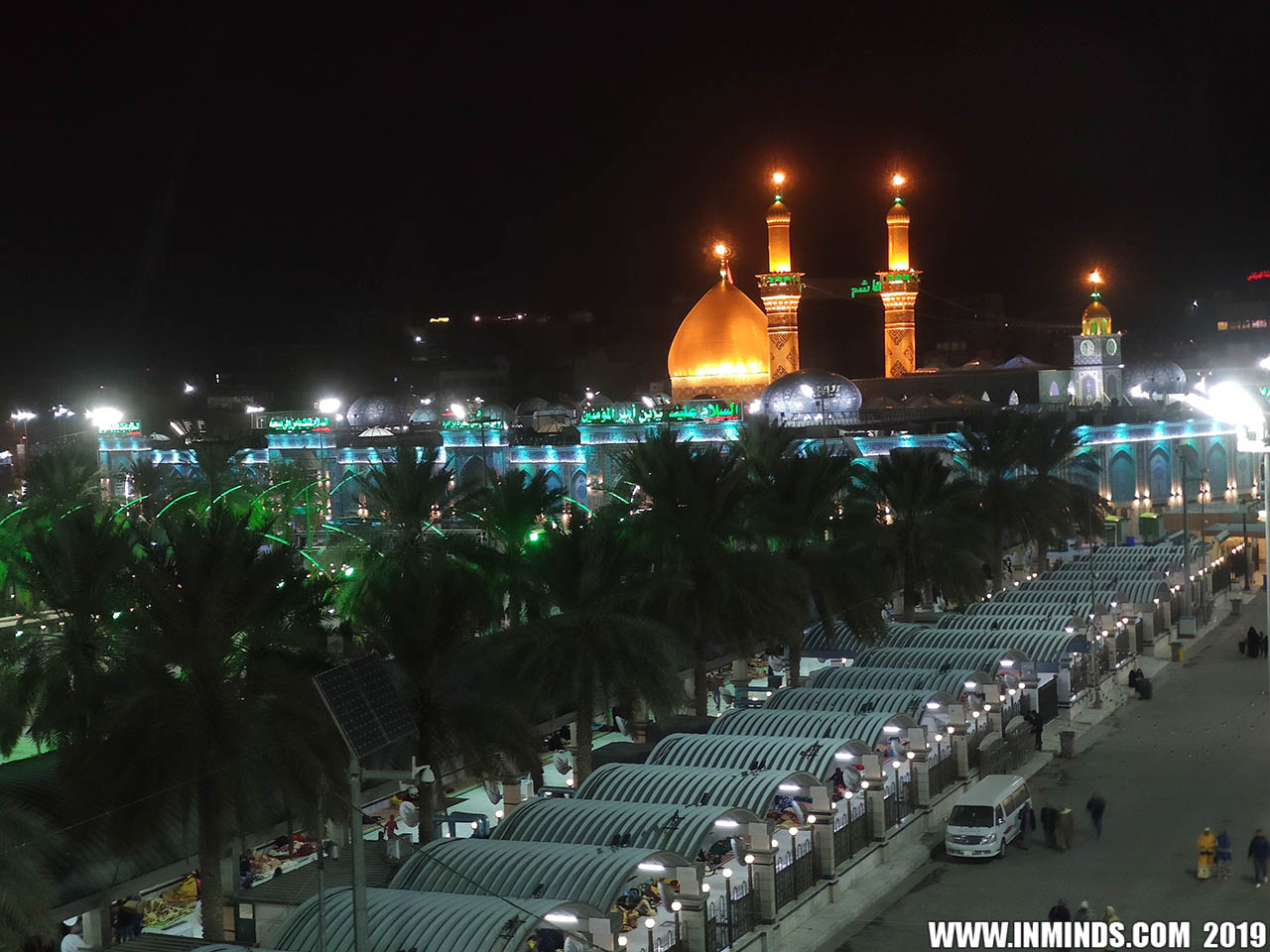 View of Hazrat Abbas's Shrine 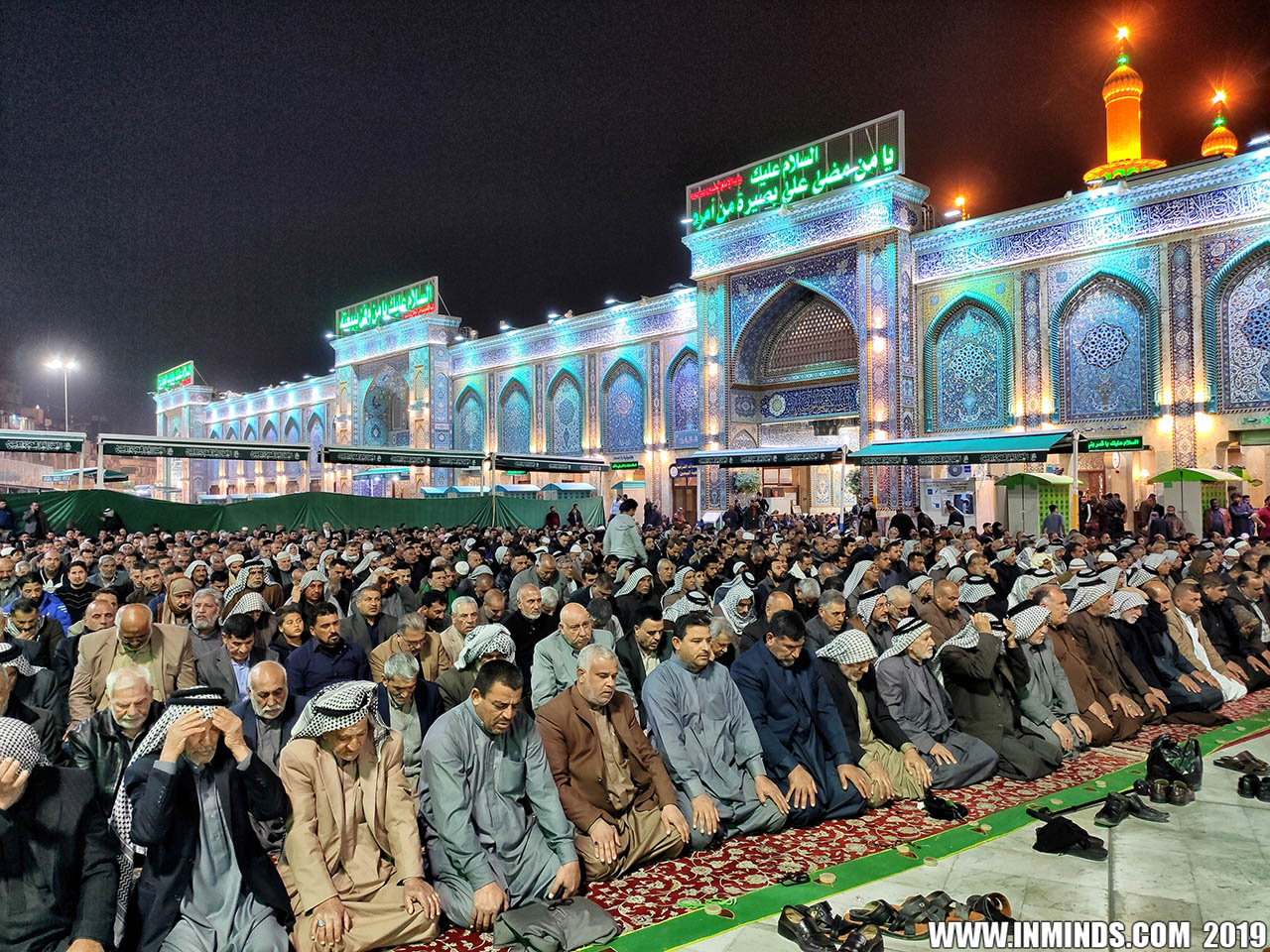 Magrib prayers overspilling from the Mosque of Hazrat Abbas (as) 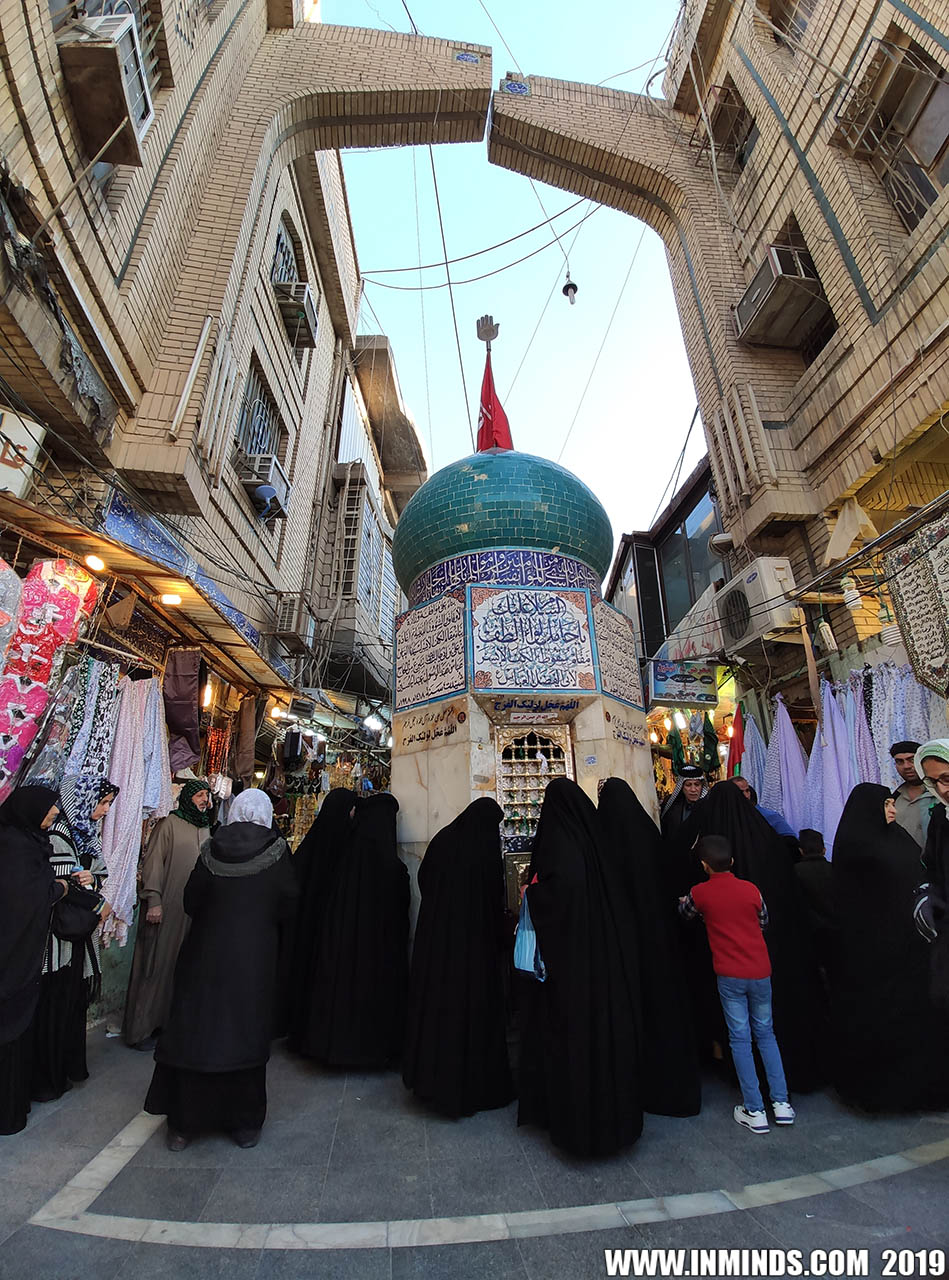 A Maqam in a side street opposite the Shrine of Hazeat Abbas (as) 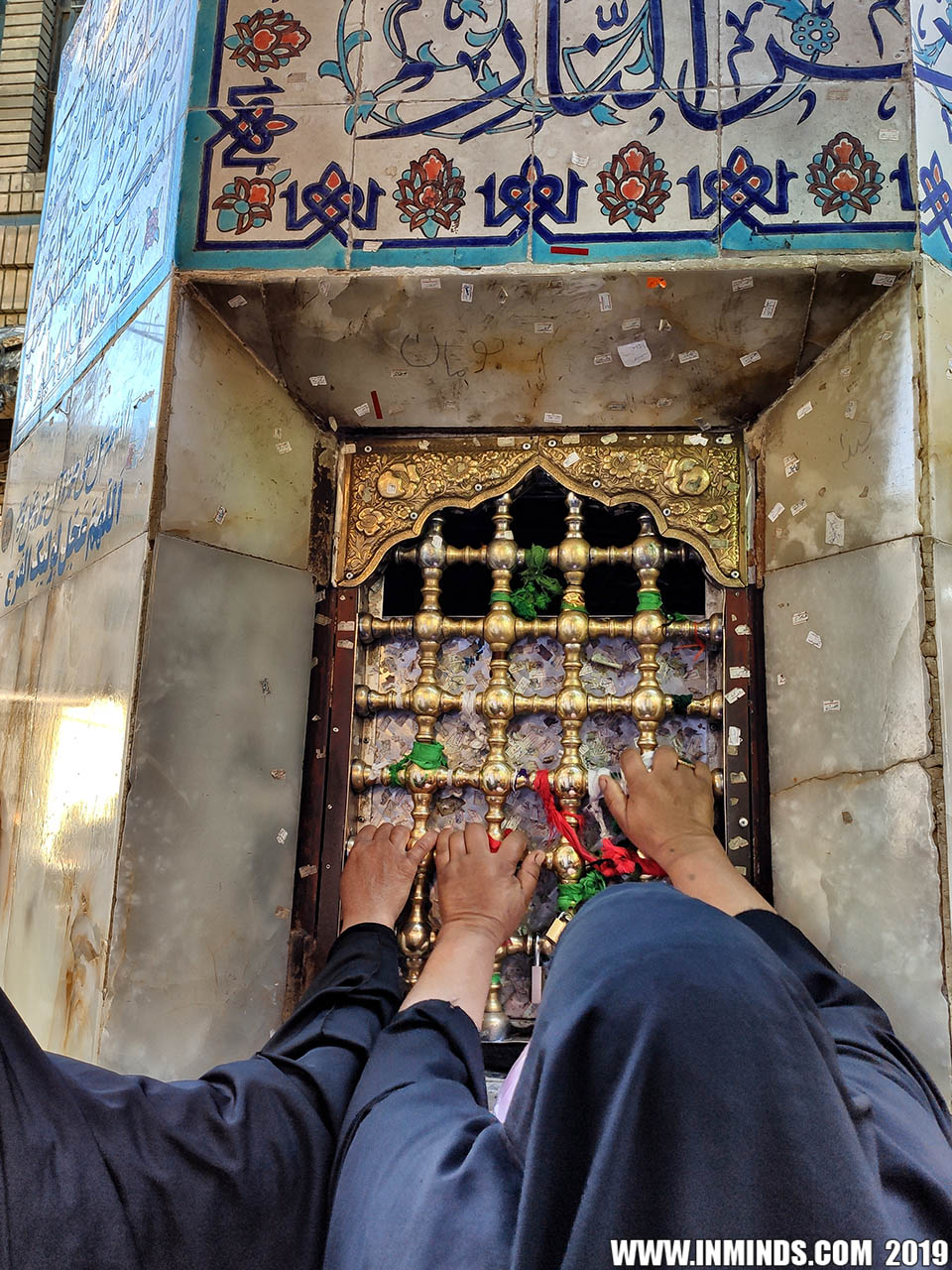 A Maqam in a side street opposite the Shrine of Hazeat Abbas (as) 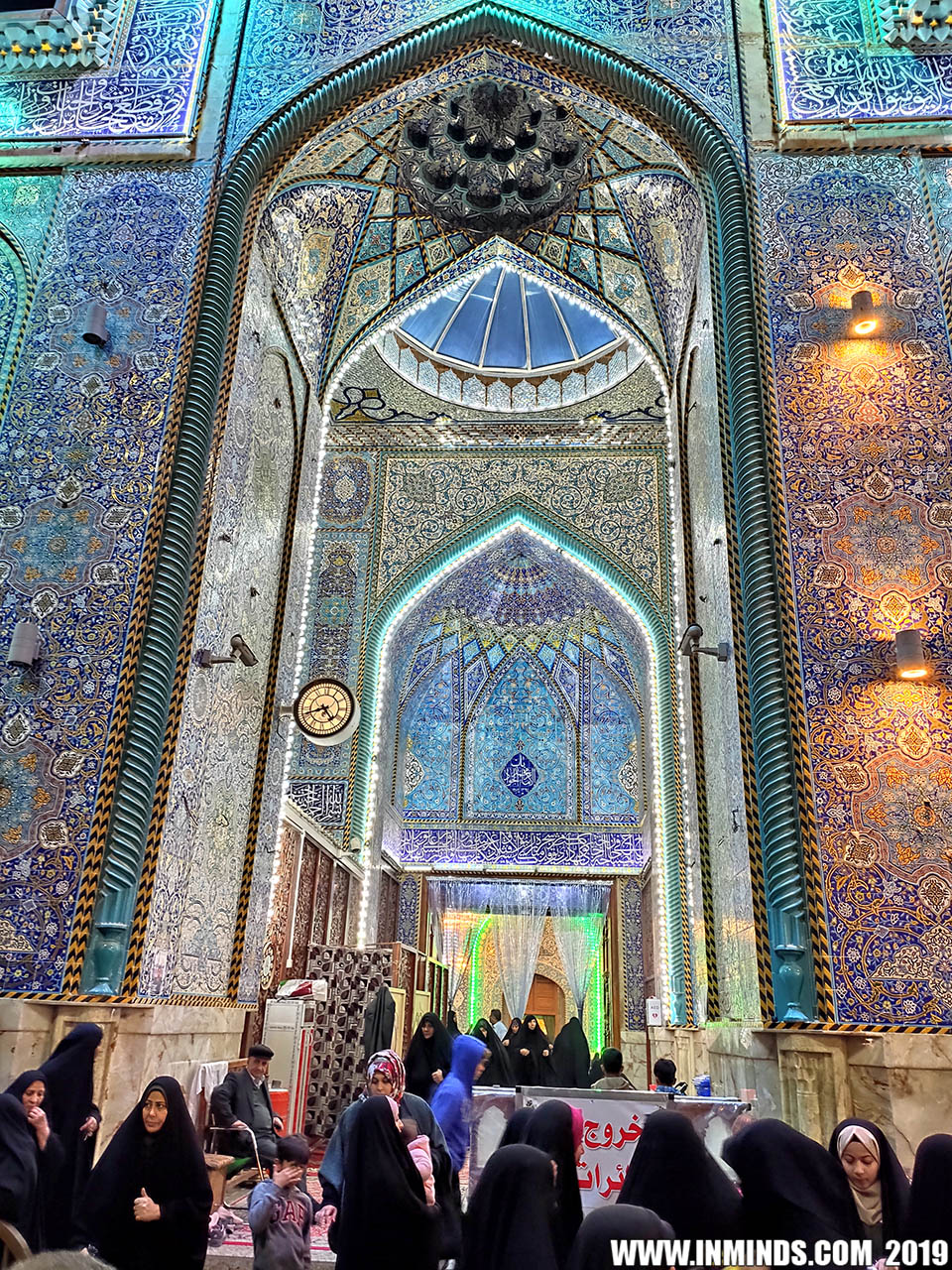 Entrance to Hazrat Abbas Mosque in Karbala 10. Purpose of ZiyaratIn the final post I wanted to explore as to why the true message of Imam Hussain (as) isnât getting through. There are two traits, the emotional and the intellectual.. unfortunately both have been subverted. Karbala was a battlefield, the town we see today grew up around this battlefield. The word maqam in Arabic means place, location or position. Karbala has dozens of maqams mapping important locations during the battle. Some of these are within the extended Mosques of Imam Hussain (as) and Hazrat Abbas (as) whilst many are in the markets that have sprung up around the mosques. So for example we have maqams of where each arm of Hazrat Abbas fell as it was severed, where Ali Asghar and Ali Akber fell, where Hazrat Abbas and Imam Hussain died, and the places where each of them is now buried. The location of each tent in the battle, the mound where Sayida Zainab stood, etc. Each of these locations elicit deep emotions in the pilgrim. Problem is these emotions are not funnelled into anything useful, they become an end in itself. The logic is that I have come to show my love for Imam Hussain (as) by crying at his suffering, my tears for Imam Hussain will wash my sins away. The ziyarat guides see it was part of their duty to elicit tears from the pilgrims.. one guide could be heard telling the pilgrims to stay in a tight group so that when one person cries it âwill soften the heart of the person next to him" and he will also cry. The problem is that this is where it stops - the tears have become the end point, rather than the first step. The maqams are symbolic, they are meant to point us to a history, a context of WHY. Unfortunately this is missing. There is no consideration given to the actual meaning of Imam Husseinâs mission. Then we have the so-called intellectual trait. This says that Imam Hussain (as) mission was to reform the Ummah, and to do that we have to focus on ourselves.. our nafs, etc. Only when we have reformed ourselves can we dream of reforming the Ummah. So we get talks on the evils of back biting, on how to stay focused in our prayers, etc. Whilst all this is important for personal development, it is not what Imam Husseinâs mission was about. Perhaps the best explanation of Imam Hussainâs mission is to read his speech at Mina which he gave as he abandoned the Hajj to head for Karbala. In it he admonishes religious scholars for not discharging their duty in standing up against oppression. Their inaction led to the tragedy of Karbala. In Imam Husseinâs own words: âFear not men, but fear Me.â (5:44) And He says: âThe believing men and women are friends and protectors to each other; they enjoin the good and forbid the evil; they perform the prayer, and pay the alms, and obey God and His messenger. Upon them God shall have mercy; God is Almighty, All-wise.â (9:71) God mentions the duty of enjoining the good and forbidding the evil (al- 'amr bi al-ma'ruf wa al-nahy 'an al-munkar) before all other duties, because He knows that if it is performed and is established in the society all other duties, the easy and the difficult, will also become established.â And then Imam Hussain (as) explains that enjoining the good and forbidding the evil (al- 'amr bi al-ma'ruf wa al-nahy 'an al-munkar) means âresistance against injustice, opposing and struggling against oppressors.â Imam Hussein condemns so called Islamic scholars âYou have taken lightly your duties as leaders. You have neglected the rights of the oppressed and the lowly, but have assiduously pursued what you regard as your personal rights. You have not spent your money or risked your life for the sake of the One Who gave you life, nor have you fought against any group or tribe for the sake of God.. What enabled them to gain control of government was your fleeing in panic from (inevitable) death and your love of life, which shall in all certainty depart from you. As a consequence of that mentality, you have delivered the powerless masses into the clutches of the oppressors. â One wonders if this equally applies to todays âscholars" who subvert the correct message of Imam Hussein. To do justice to Imam Hussain (as) we should all read his full speech at Mina.. one has to ask why it seems to be omitted from ziyarat programmes. To show the importance of this speech we should note that Imam Khomeini based his formulation of the concept of Wilayah al Faqih on the instructions given by Imam Hussain(as) at Mina. So itâs very clear what the purpose of Imam Husseinâs mission was, the question that remains, is to ask what is the purpose of Ziyarat? This week we have all been shaken by the martyrdom of Shaheed Qassem Soleimani and Shaheed Abu Mahdi al Muhandis. Without their courage, leadership and dedication to the path of Imam Hussain, Iraq and Syria would today be overrun by ISIS. ISIS controlled 40% or Iraqi territory, and with the fall of Falluja in 2014 they reach 50 miles from the shrine of Imam Hussain. And in Syria ISIS reached a few streets from the shrine of Sayida Zainab(as). Judging from the example they left in Samarra, none of our holy sites, both in Iraq and Syria, would have survived. It is said that when the scourge of ISIS approached the borders of Iraqi Kurdistan, Masoud Barzani, leader of the region at the time, called 23 countries to ask for help. None of those countries cooperated. When he reached out to Iran, Martyr General Soleimani responded, "Help will be there in two hours." This help halted ISIS advances into Kurdistan. At a time when others ignored and turned a blind eye, Shaheed Soleimani responded to the call of the oppressed. He rushed to form a united front to confront ISIS in the whole region. People's Mobilization Units were formed with Kurdish battalions, with Yazidi battalions, with Christian battalions, with Afghan, Syrian and Iraqi battalions, and with Sunni and Shia battalions all united to stop ISIS. This is how the war against ISIS was won. Shaheed Soleimani was a genius military tactician. But even in war, in the tradition of the Prophet(saw) and Imam Ali(as) he never forgot the principles of justice. He left a letter of apology to the residents of a household in Abu Kamal, for using their abandoned house, without their permission, as a headquarter for the operations to liberate Abu Kamal from ISIS. The letter also offered to pay for any damages to the house or its content during their stay. Abu Kamal is a key border town between Syria and Iraq. Its inhabitants are mainly Sunni Muslims with a Christian minority. In the letter Shaheed Soleimani reaffirmed his anti-sectarianism and talked of unity across the communities. Shaheed Soleimani, might have been known as the slayer of ISIS, but he was also a deeply spiritual person. The last note he wrote, which was found in his room, just before departing Syria to his martyrdom in Iraq, read: âO Lord, Dont leave me [to myself] O Lord, accept me I'm longing to see you, that very seeing which made Moses unable to stand or even breathe. O Lord, accept me purified.â So going back to the question of what is the purpose of Ziyarat, of visiting the graves and sites of our beloved Imams, all of whom were killed standing against oppression? I would suggest that by walking in their footsteps, in the land where they lived, visiting the locations where they fell sacrifing their lives in the path of Allah, touching the tombs where they lay in the knowledge they had done their duty to God, it should help realign our own lives and communities, so that our community can tomorrow produce more heroes who follow the path of Imam Hussain(as). 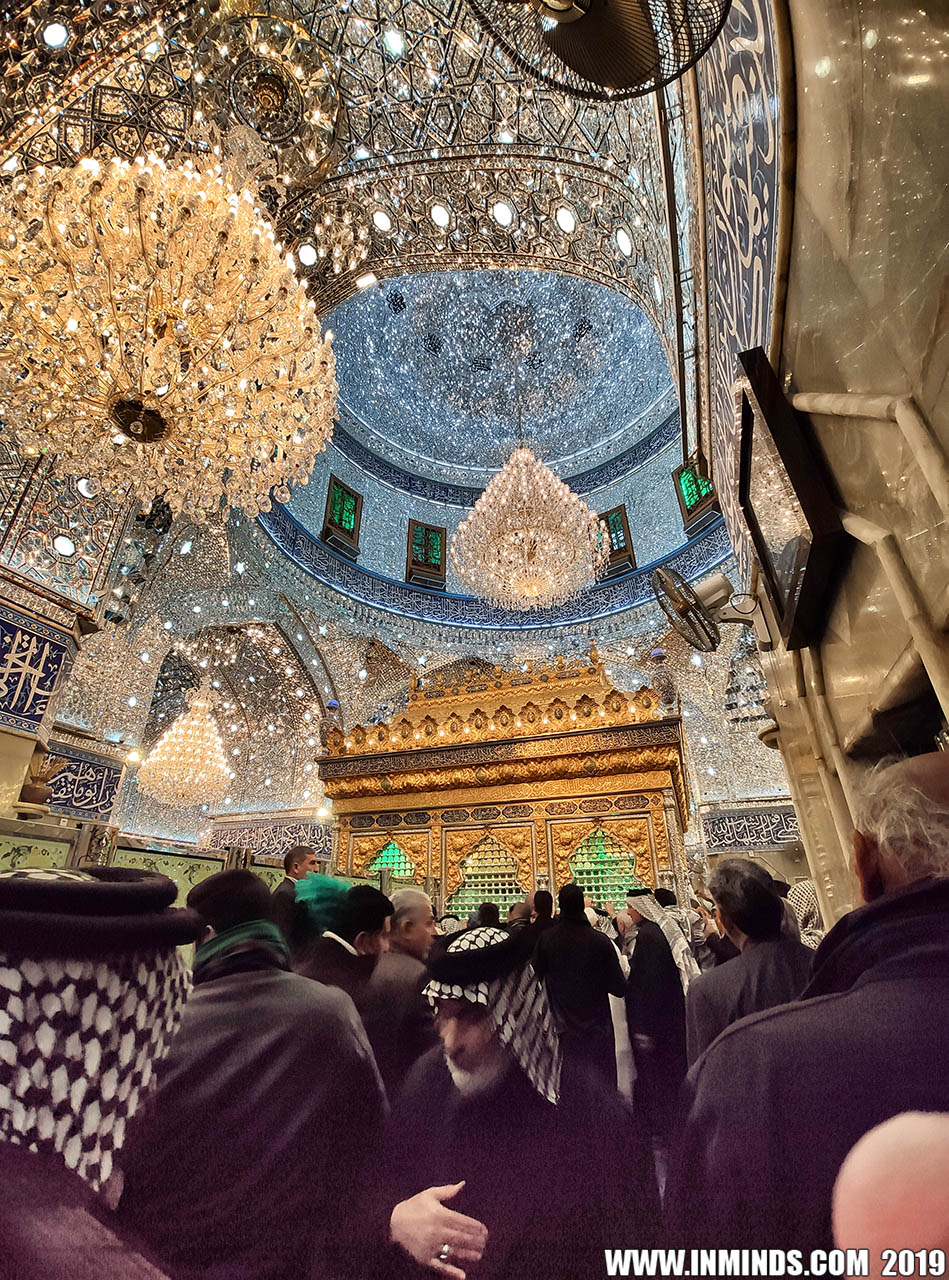 Tomb of Hazrat Abbas(as) in Karbala
 Mosque of Kufa 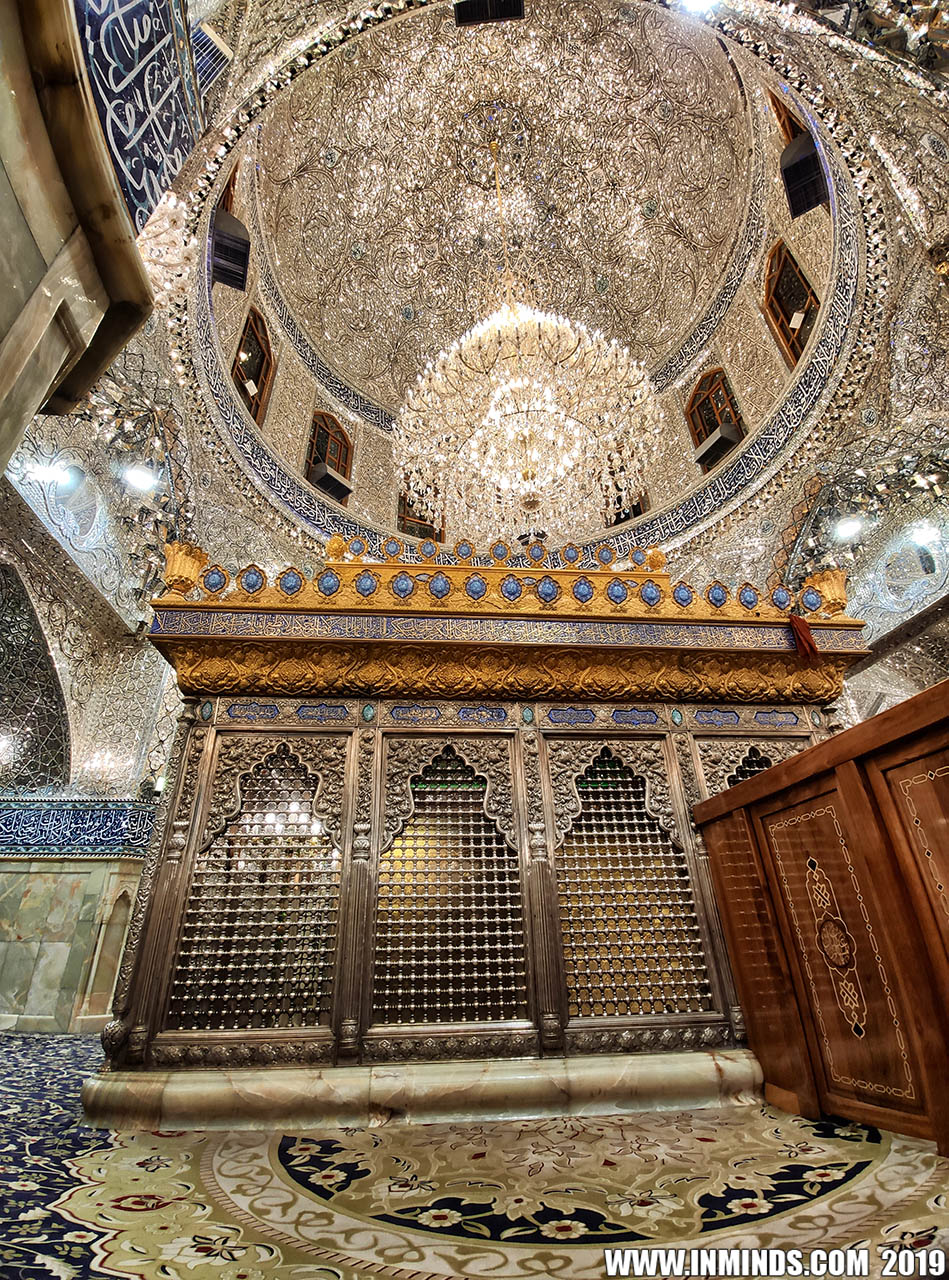 Tomb in Mosque of Kufa  Tomb in Mosque of Kufa (Mukhtar bin Ubaydullah Al Thaqafy ?) 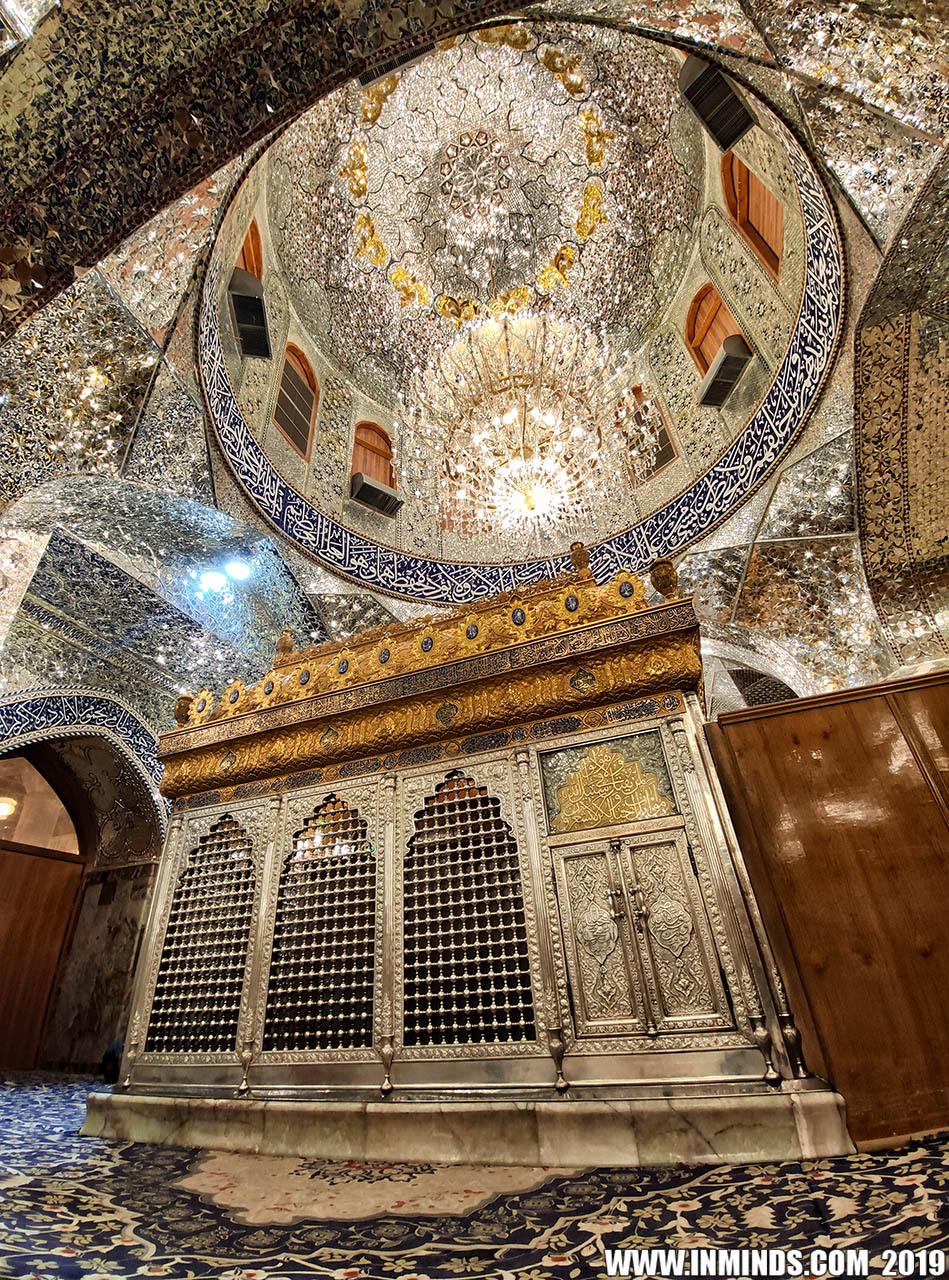 Tomb in the Mosque of Kufa  Tomb in the Mosque of Kufa 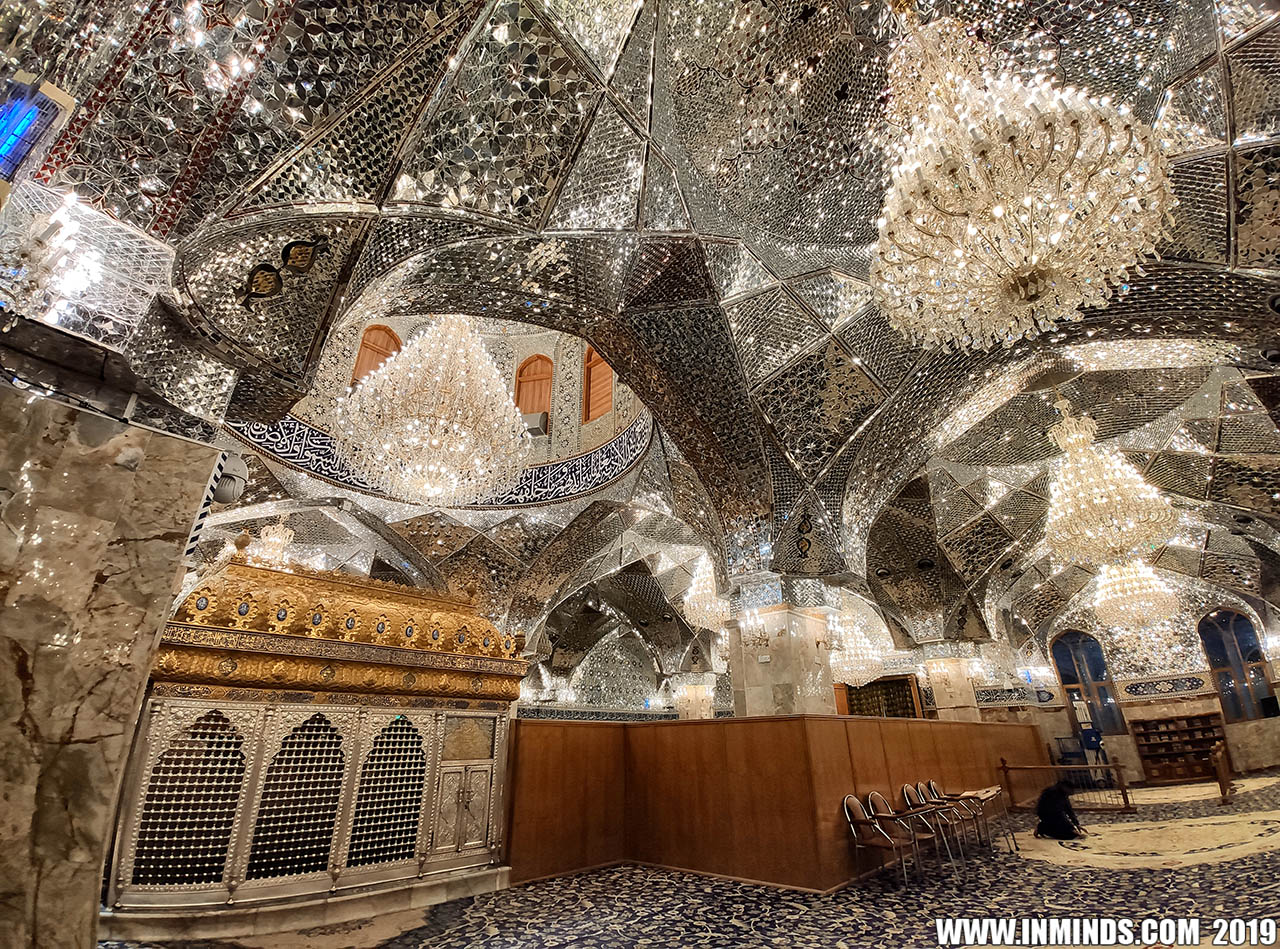 Tomb in the Mosque of Kufa 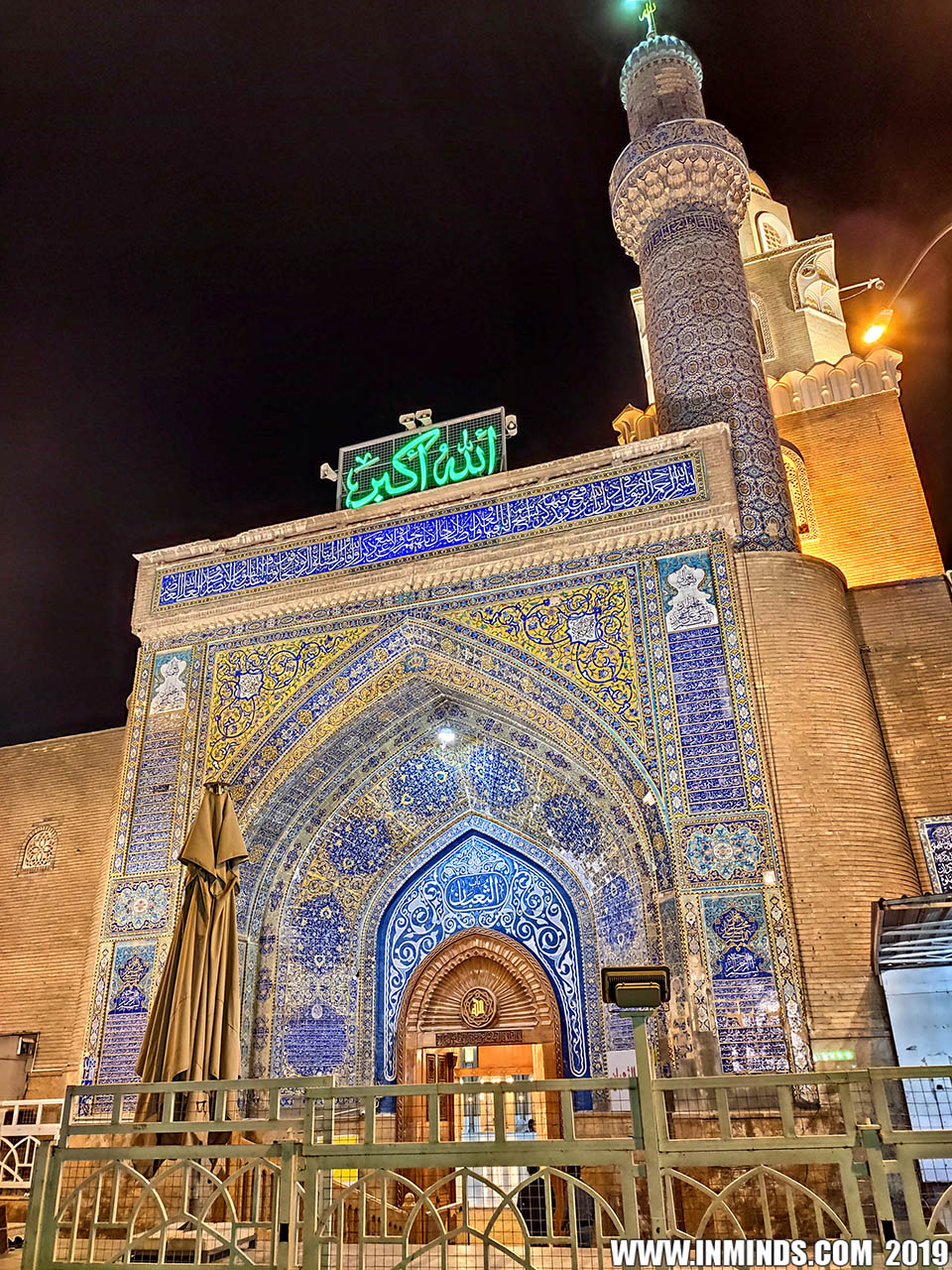 Entrance to Mosque of Kufa 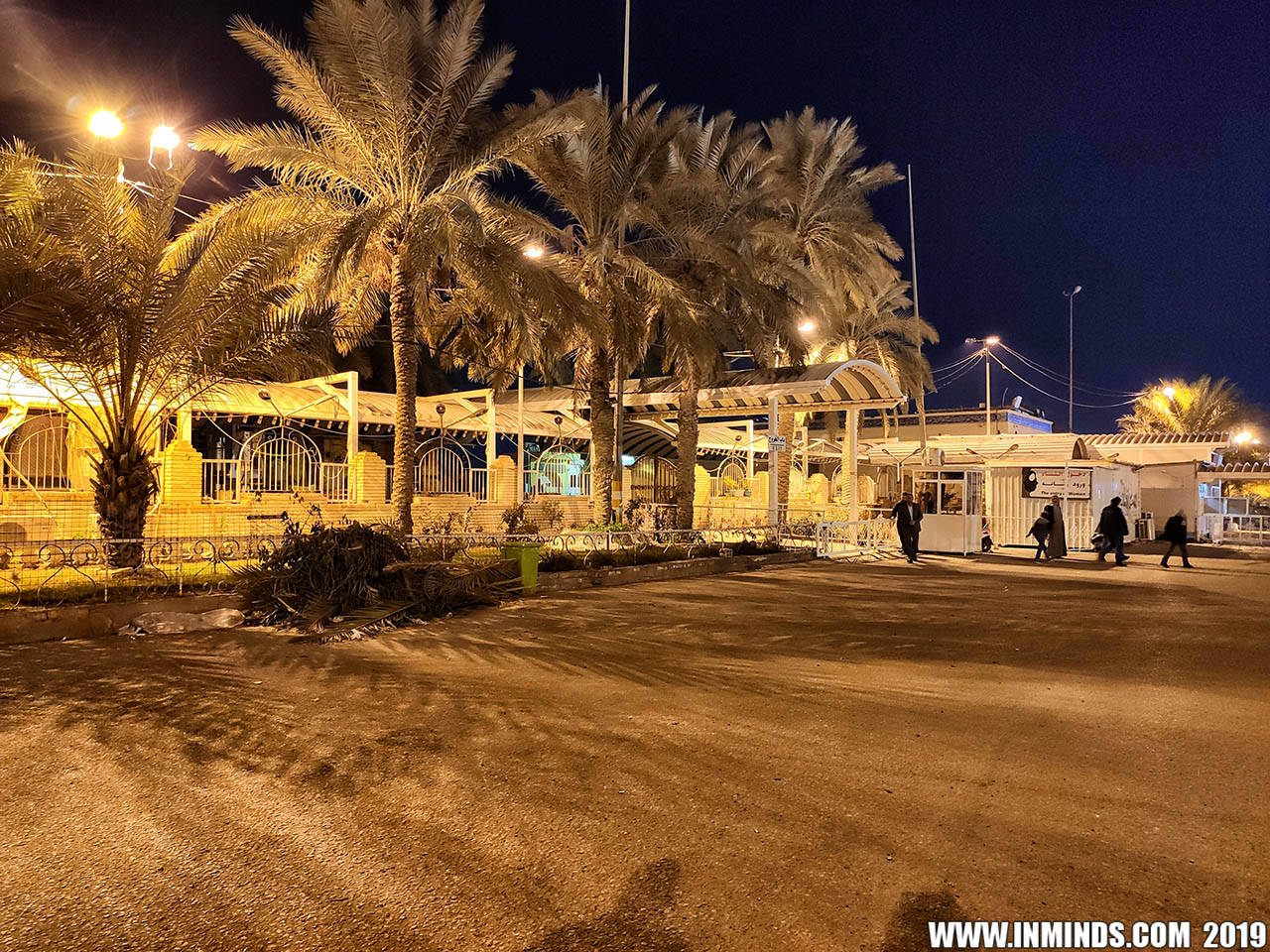 Imam Ali(as) House, attached to Mosque of Kufa
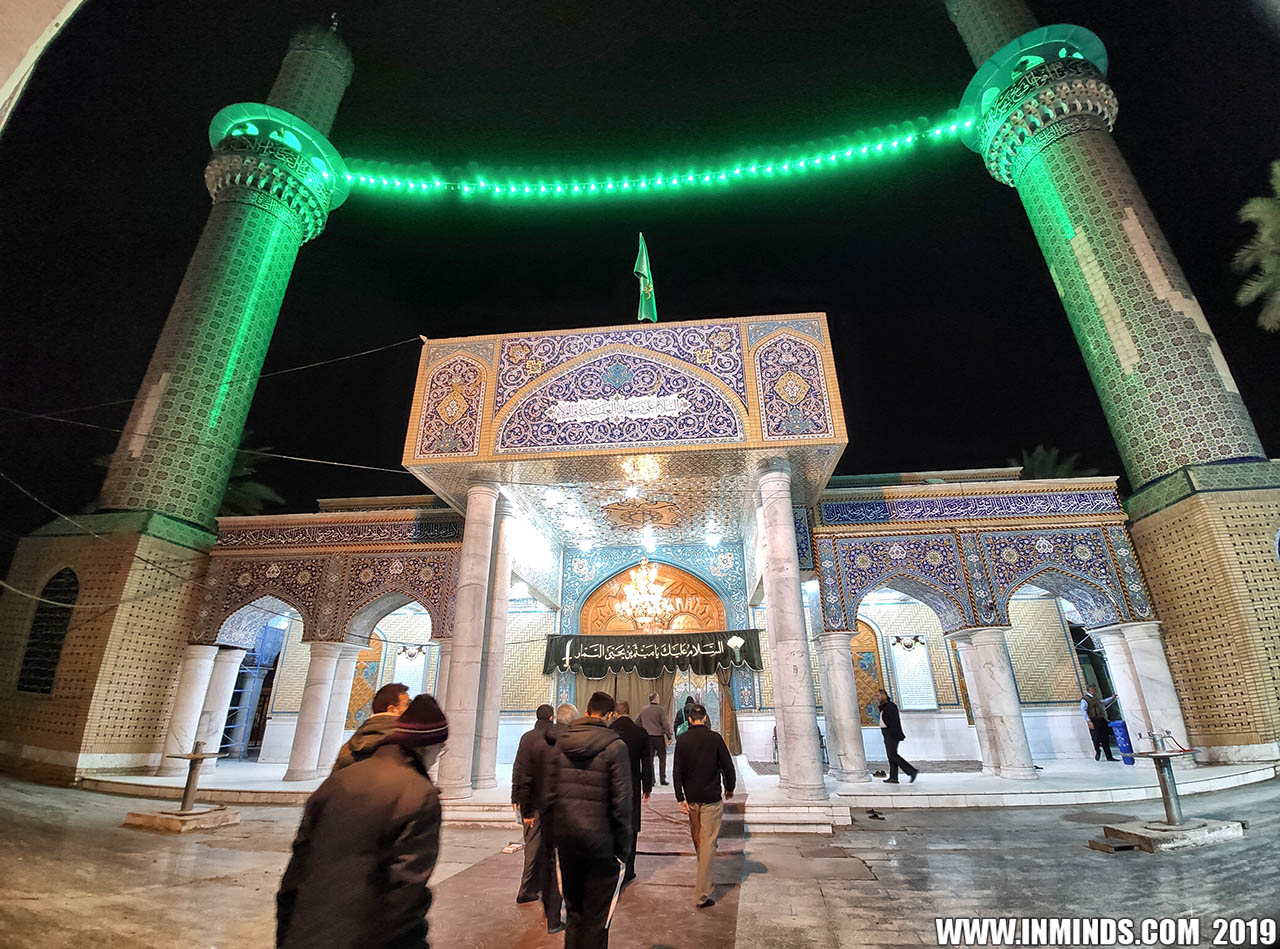 Shrine of Maitham al-Tamar 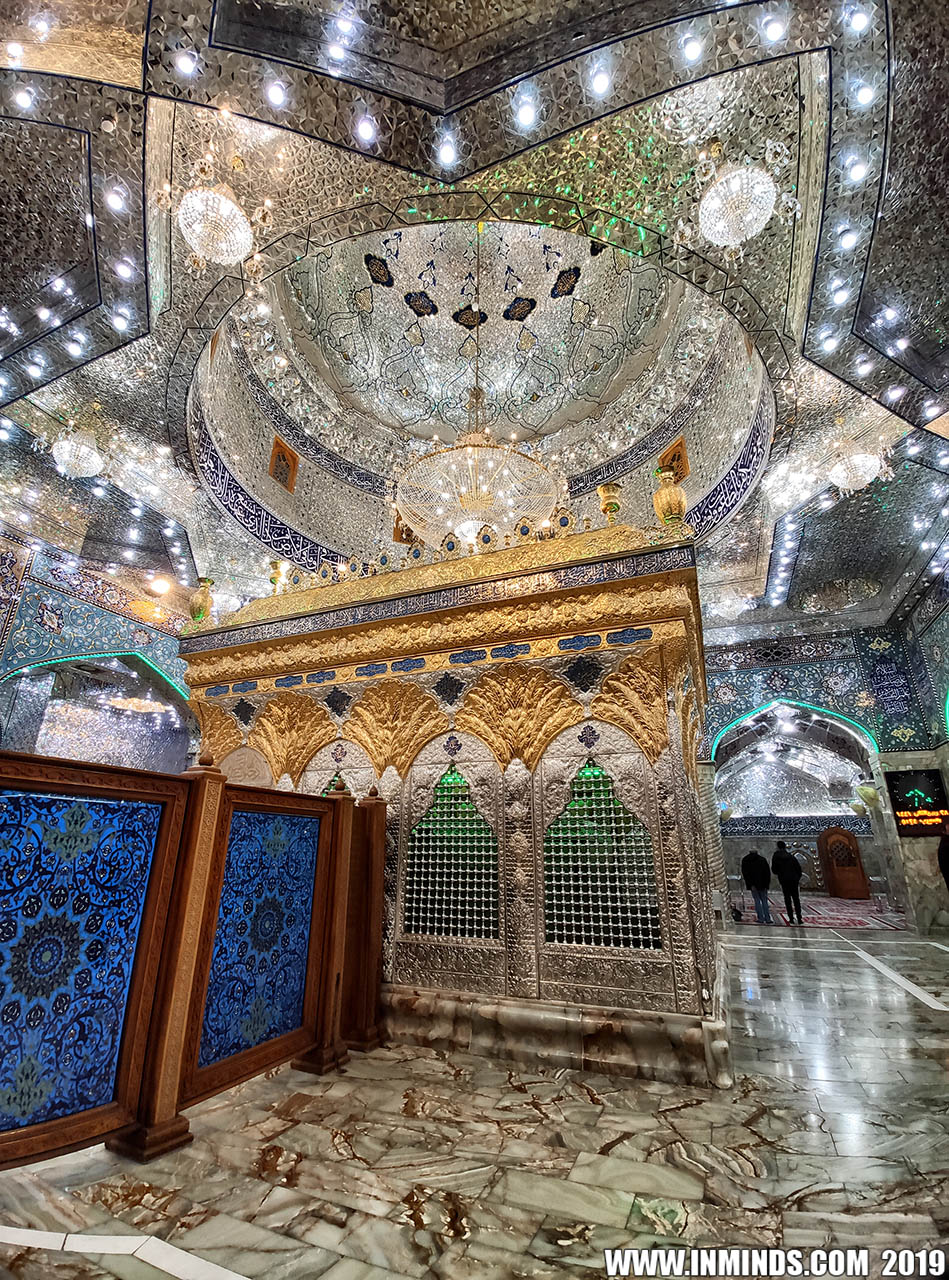 Shrine of Maitham al-Tamar  Shrine of Maitham al-Tamar 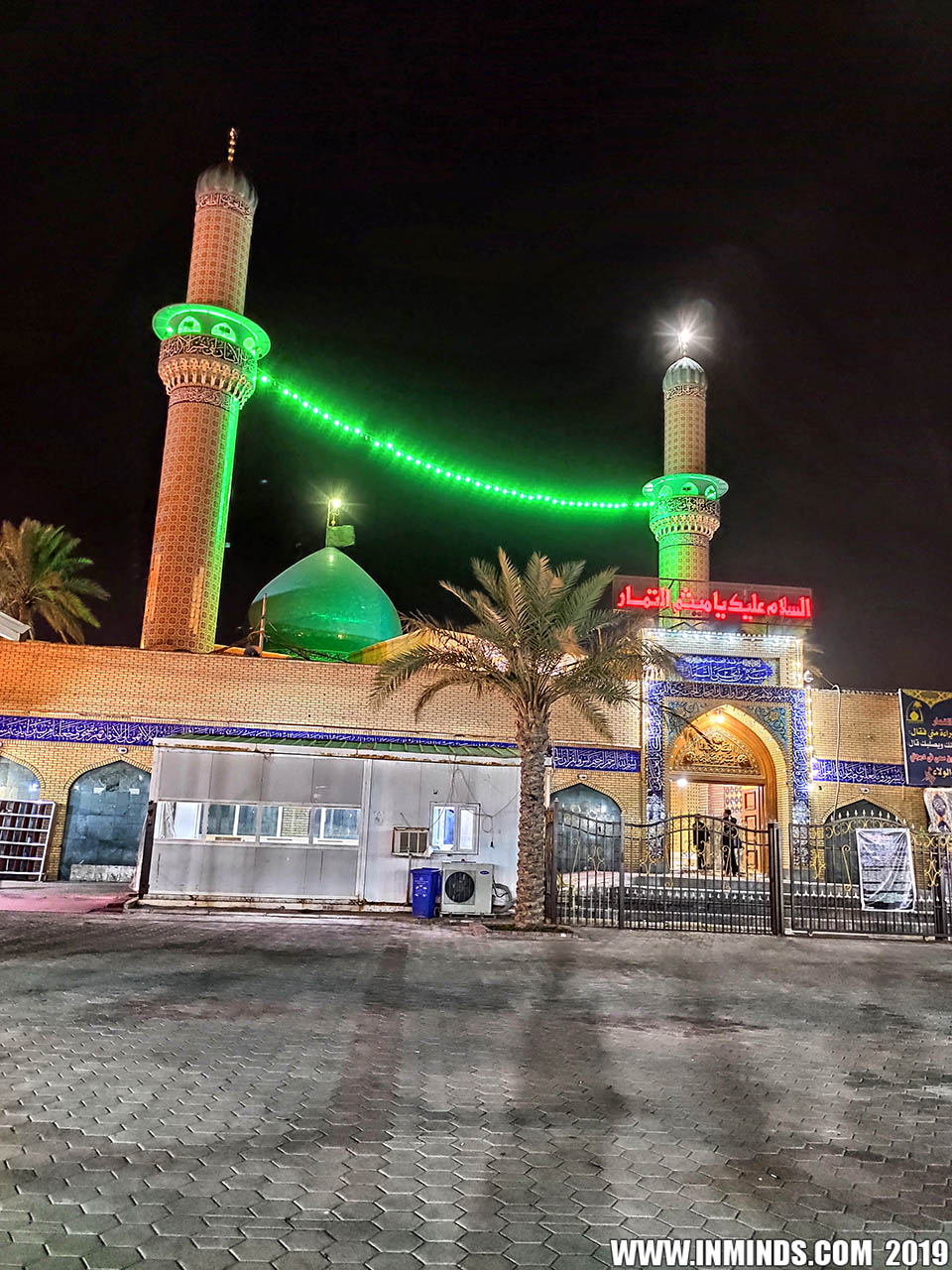 Shrine of Maitham al-Tamar 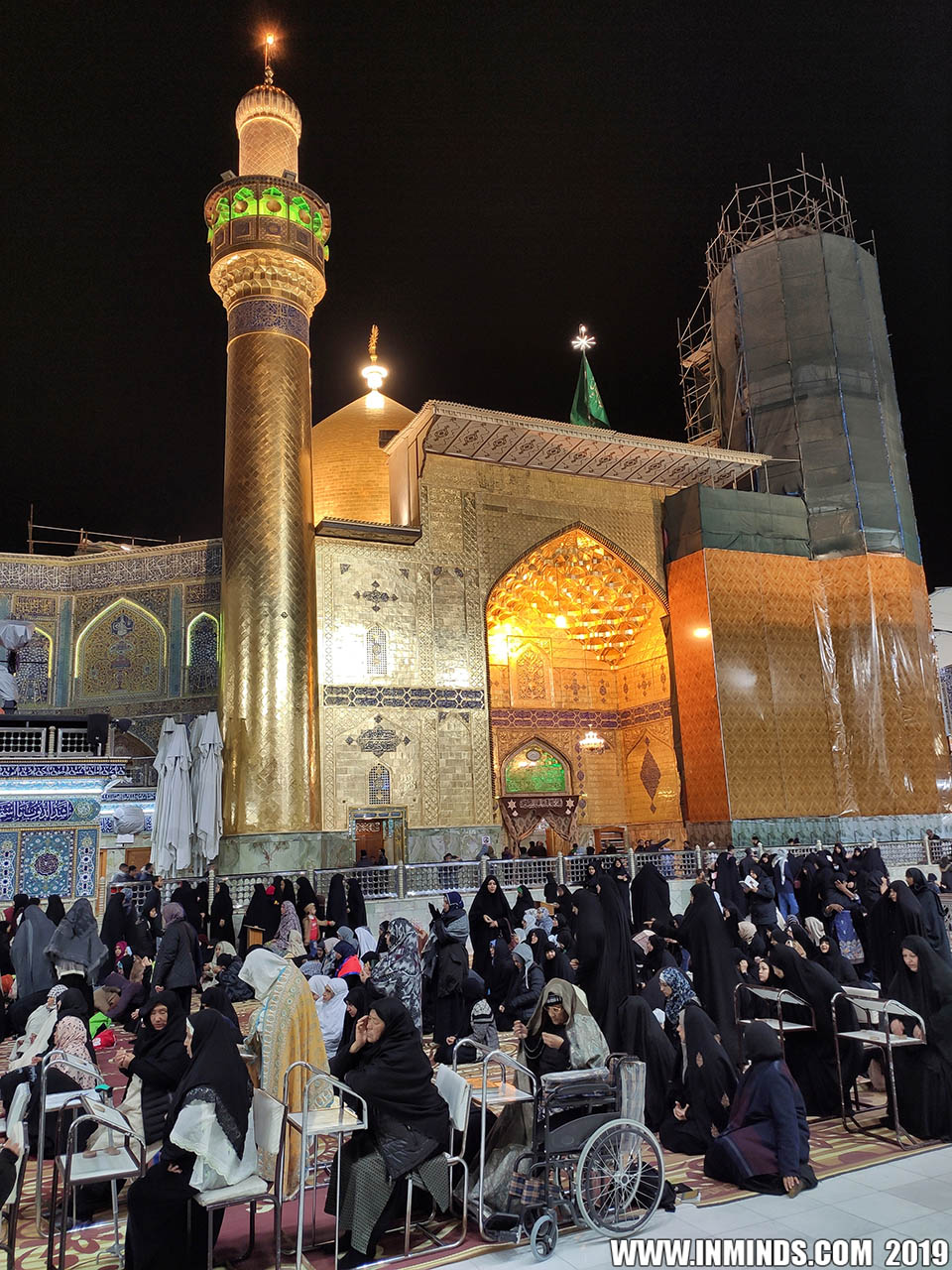 Imam Ali Mosque in Najaf 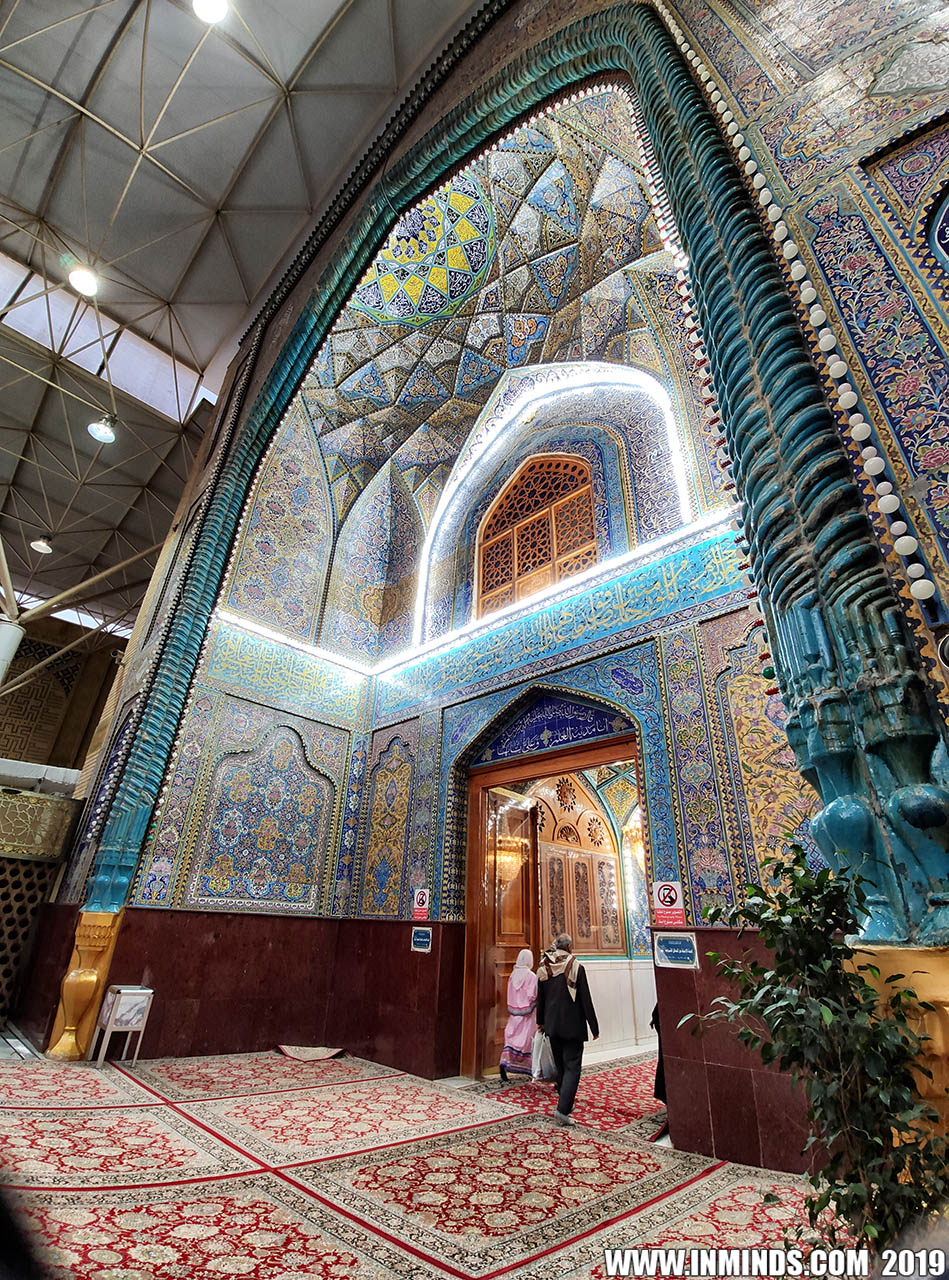 Entrance to Imam Ali Mosque in Najaf 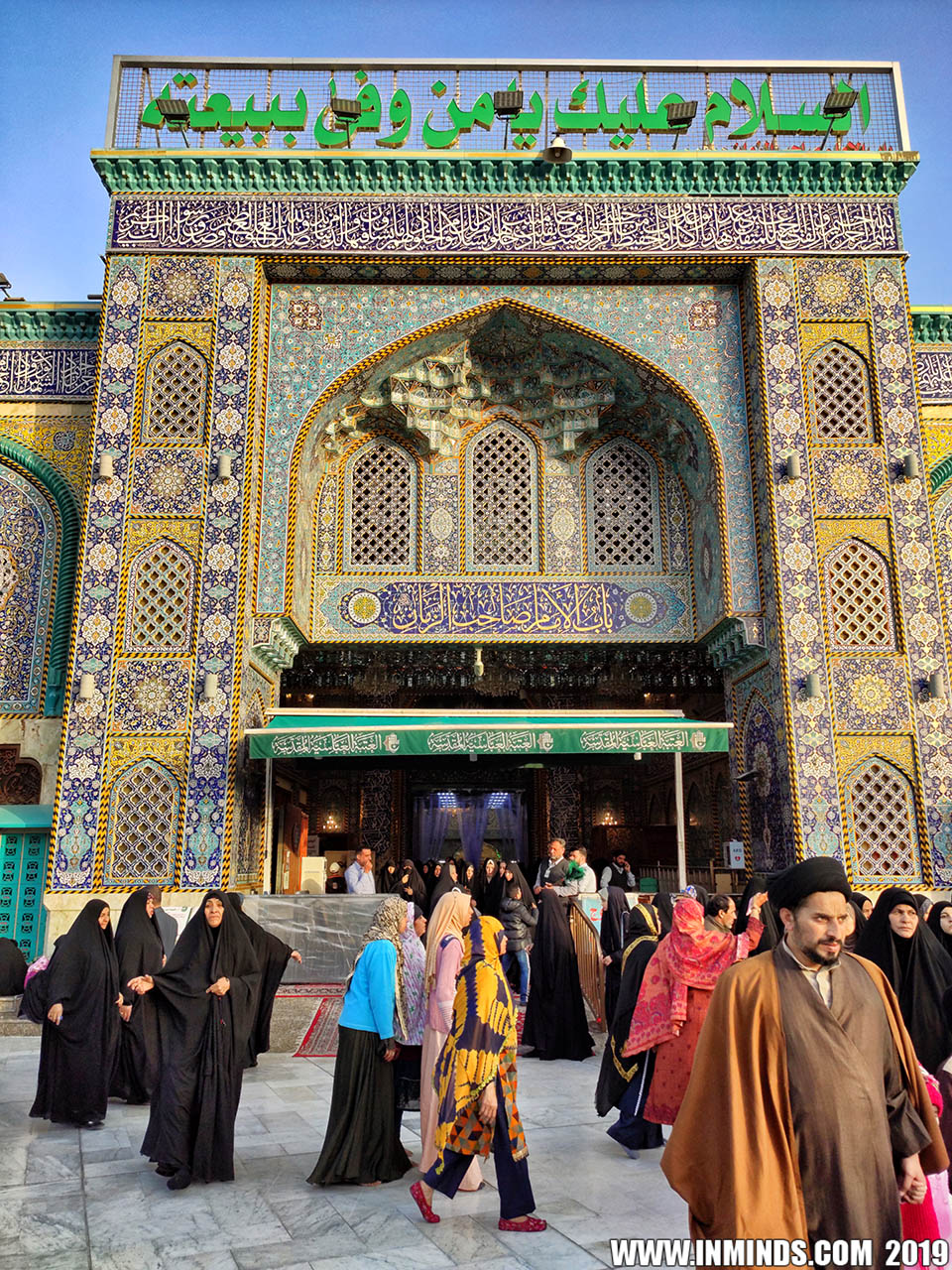 Mosque of Hazrat Abbas(as) in Karbala 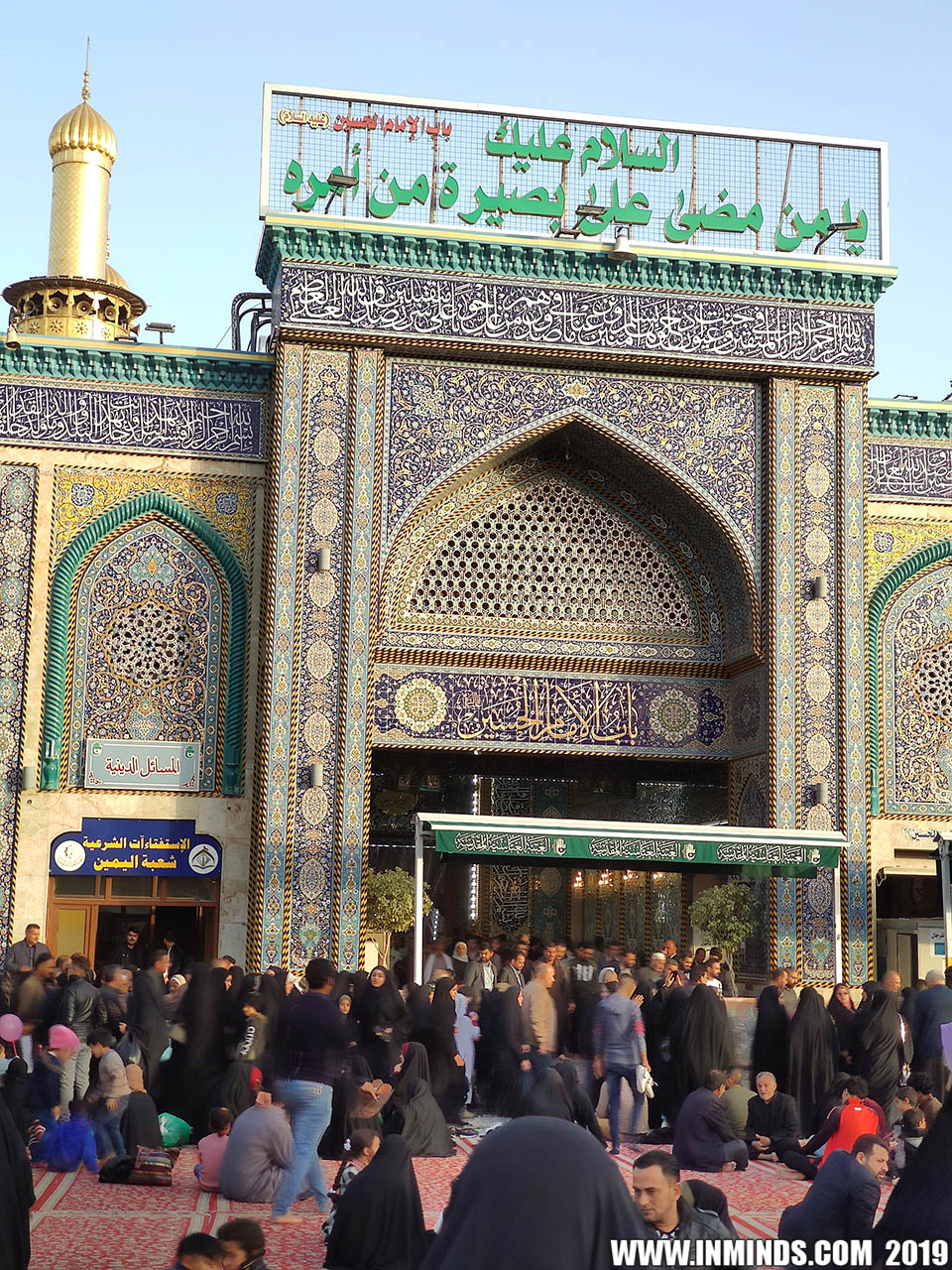 Mosque of Hazrat Abbas(as) in Karbala 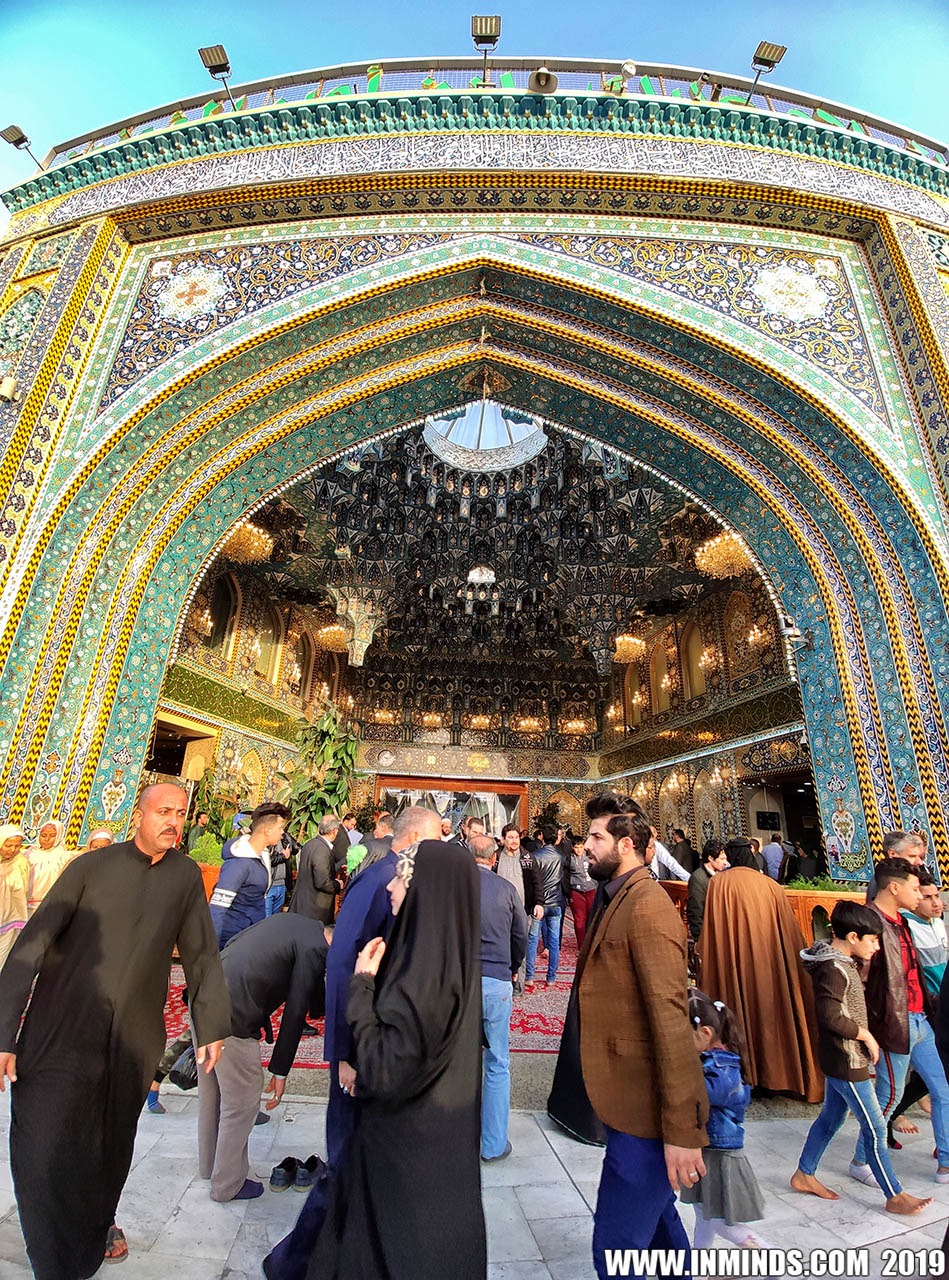 Mosque of Hazrat Abbas(as) in Karbala 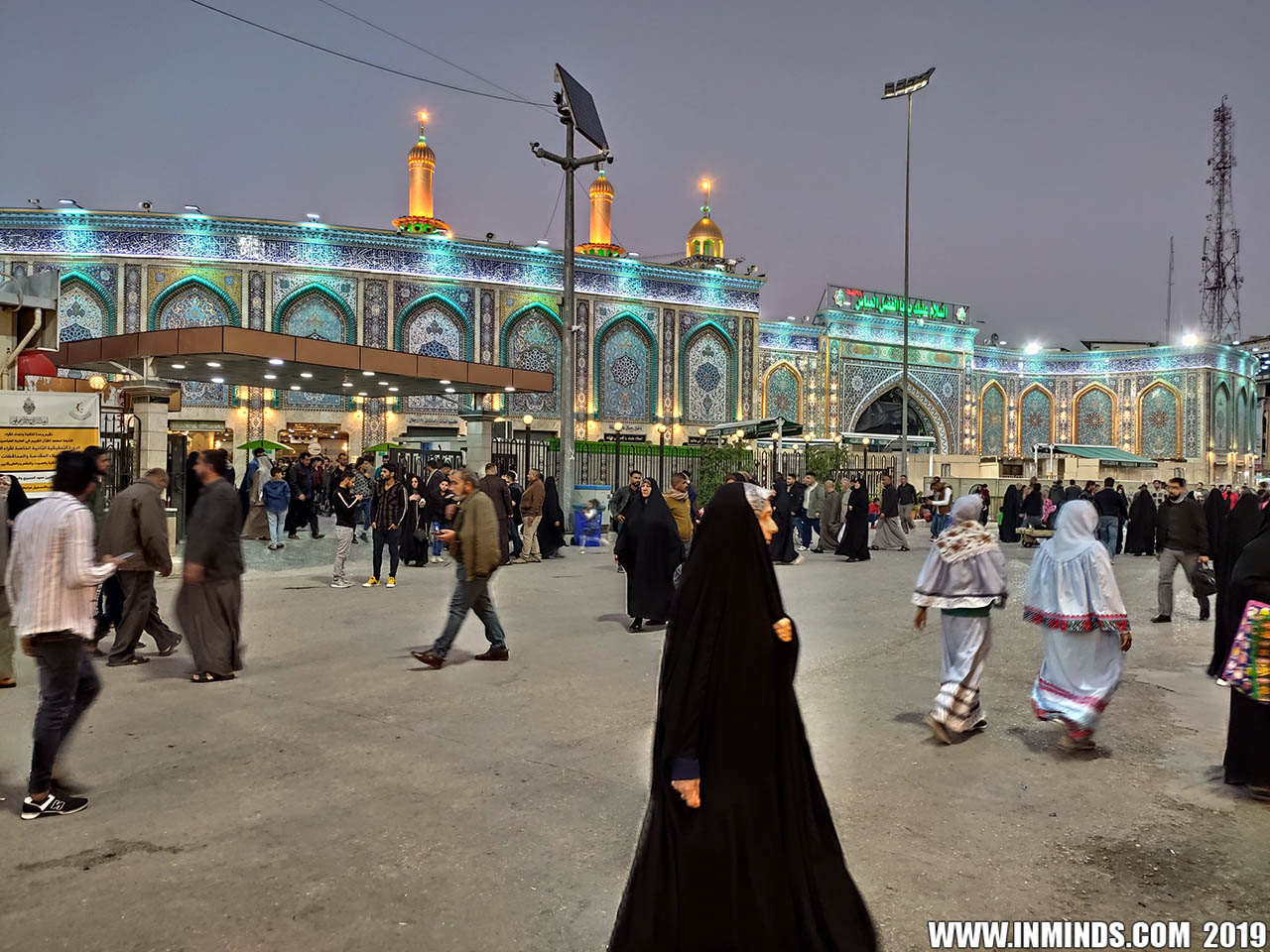 Mosque of Hazrat Abbas(as) in Karbala 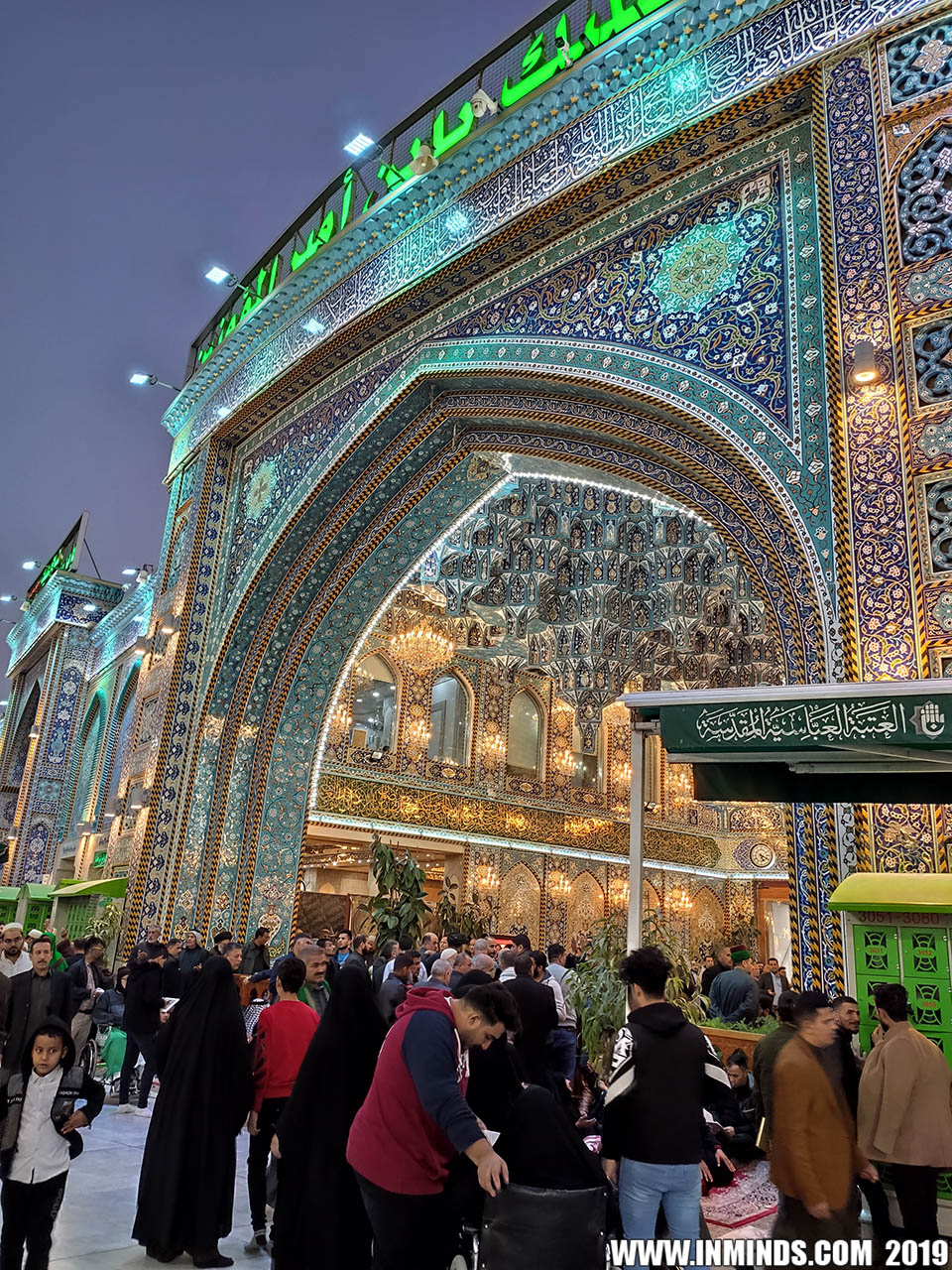 Mosque of Hazrat Abbas(as) in Karbala 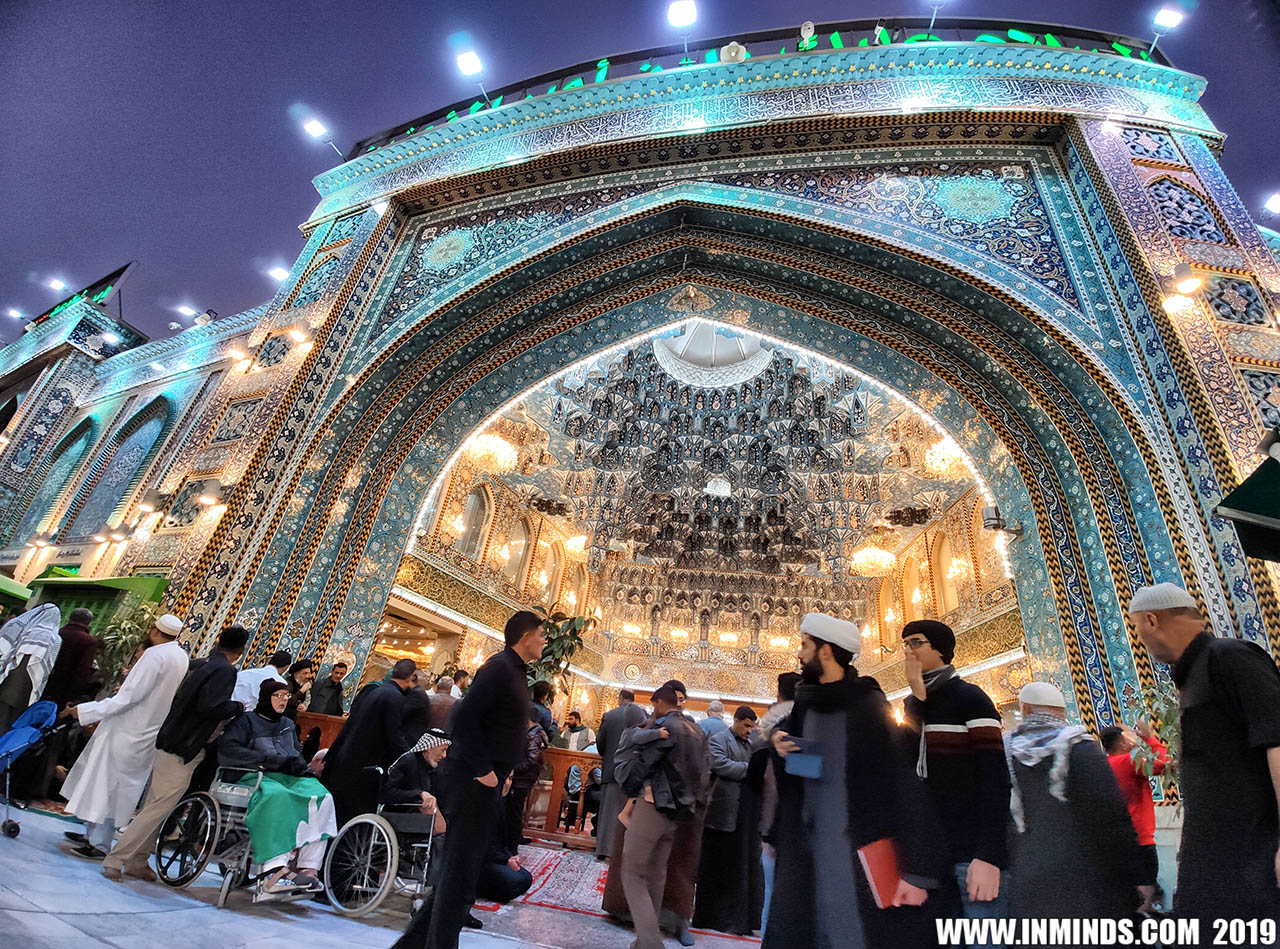 Mosque of Hazrat Abbas(as) in Karbala 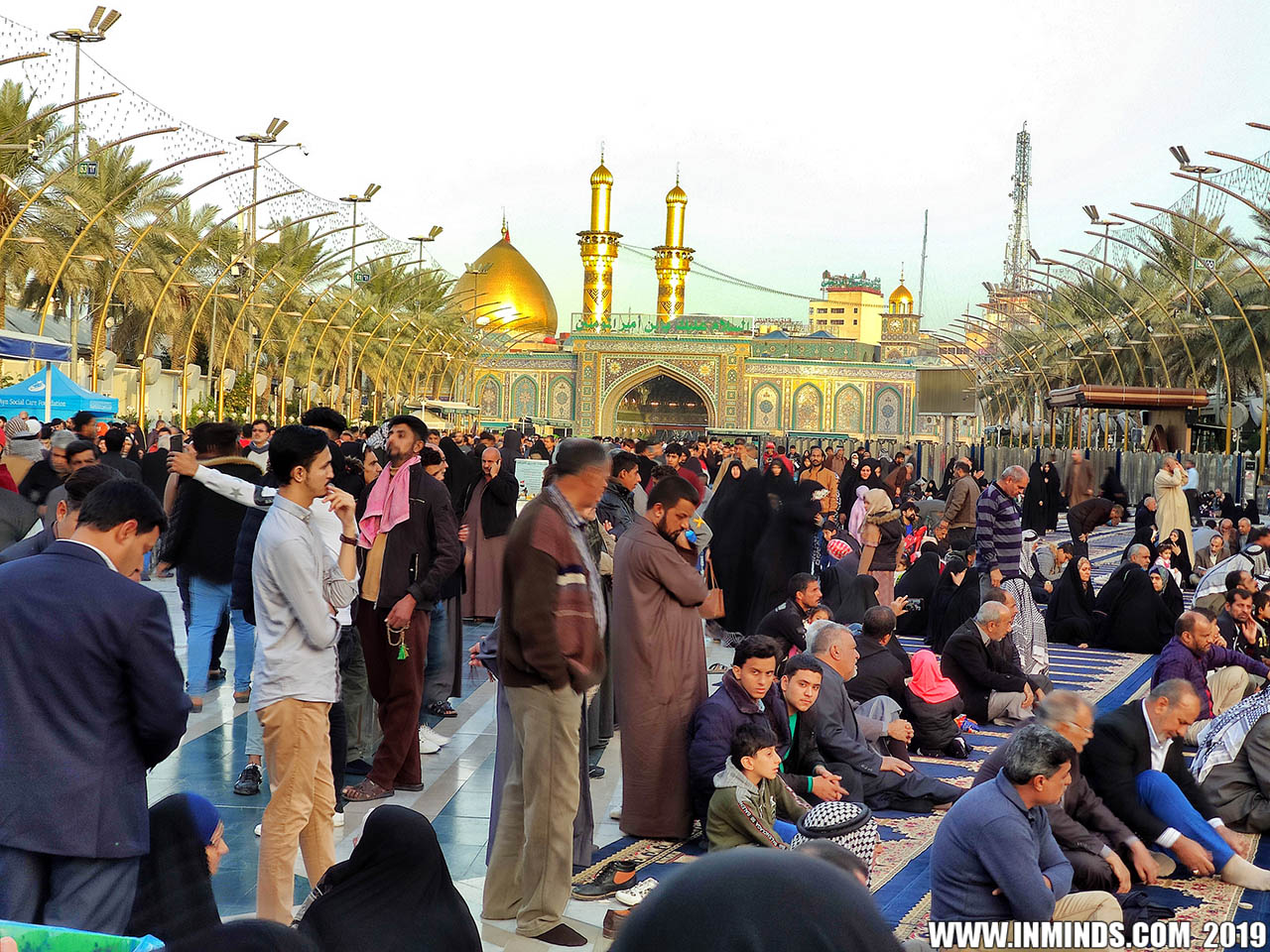 Mosque of Hazrat Abbas(as) in background 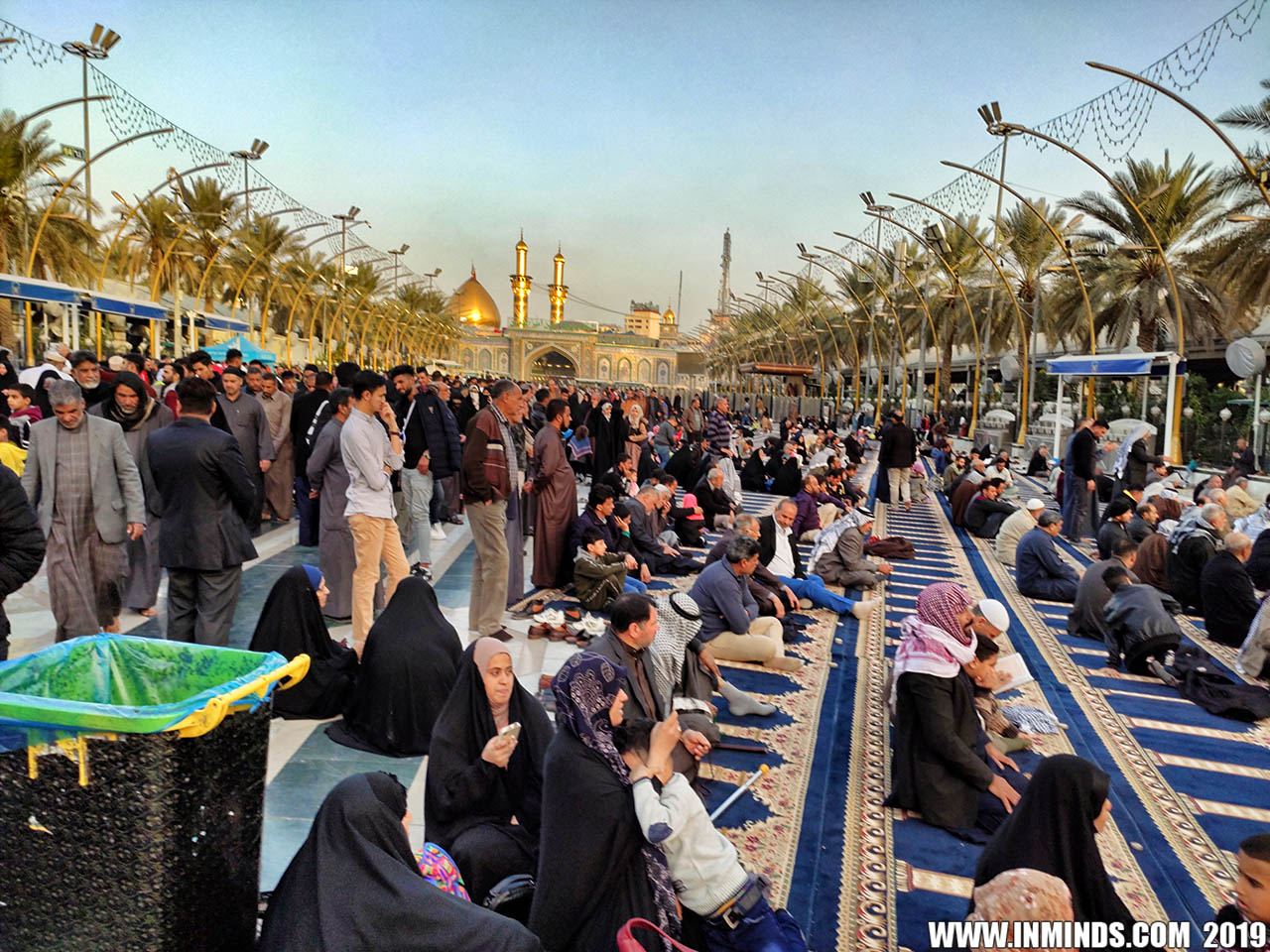 Mosque of Hazrat Abbas(as) in background 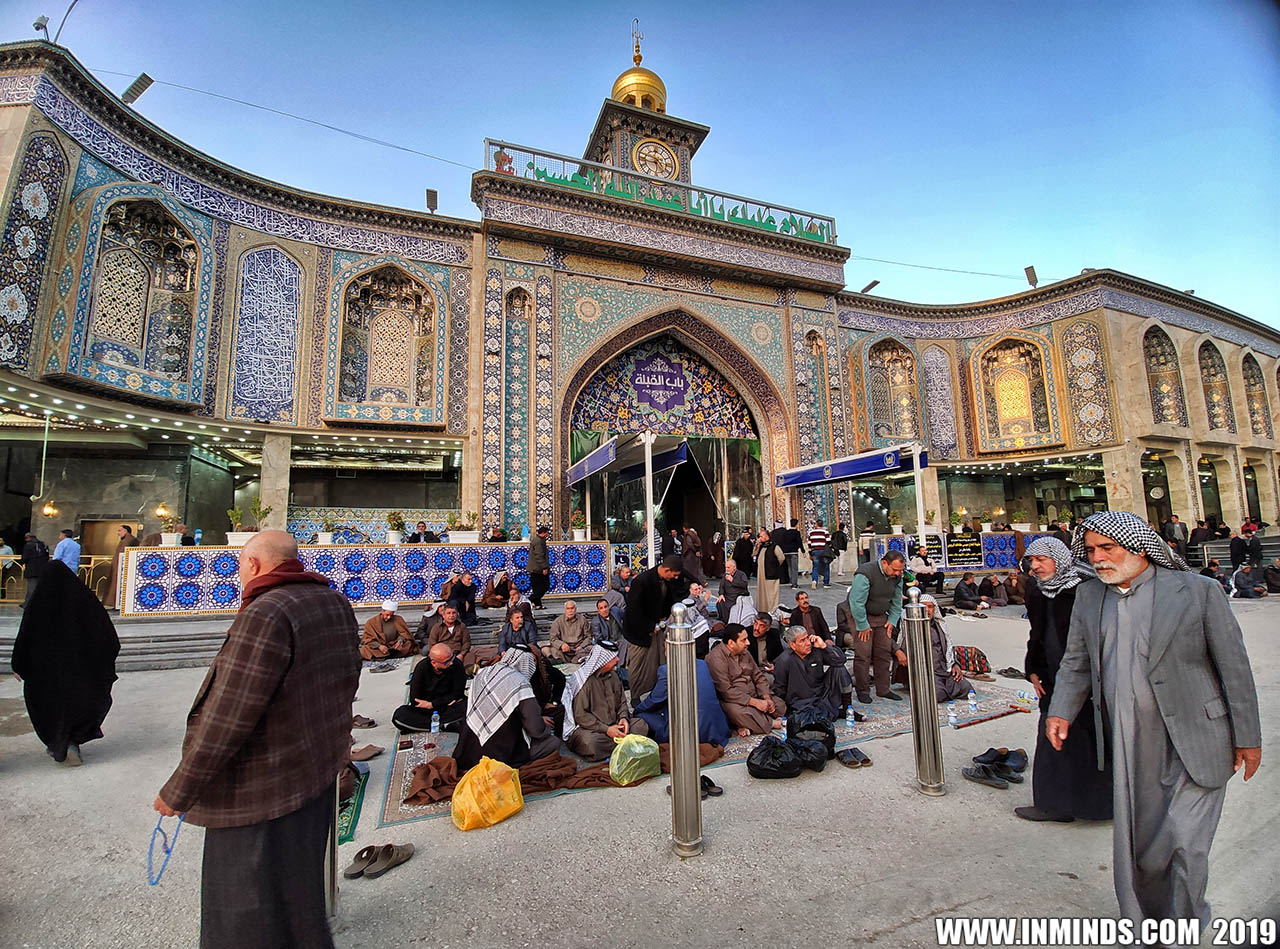 Clocktower of Imam Hussain's Mosque in Karbala 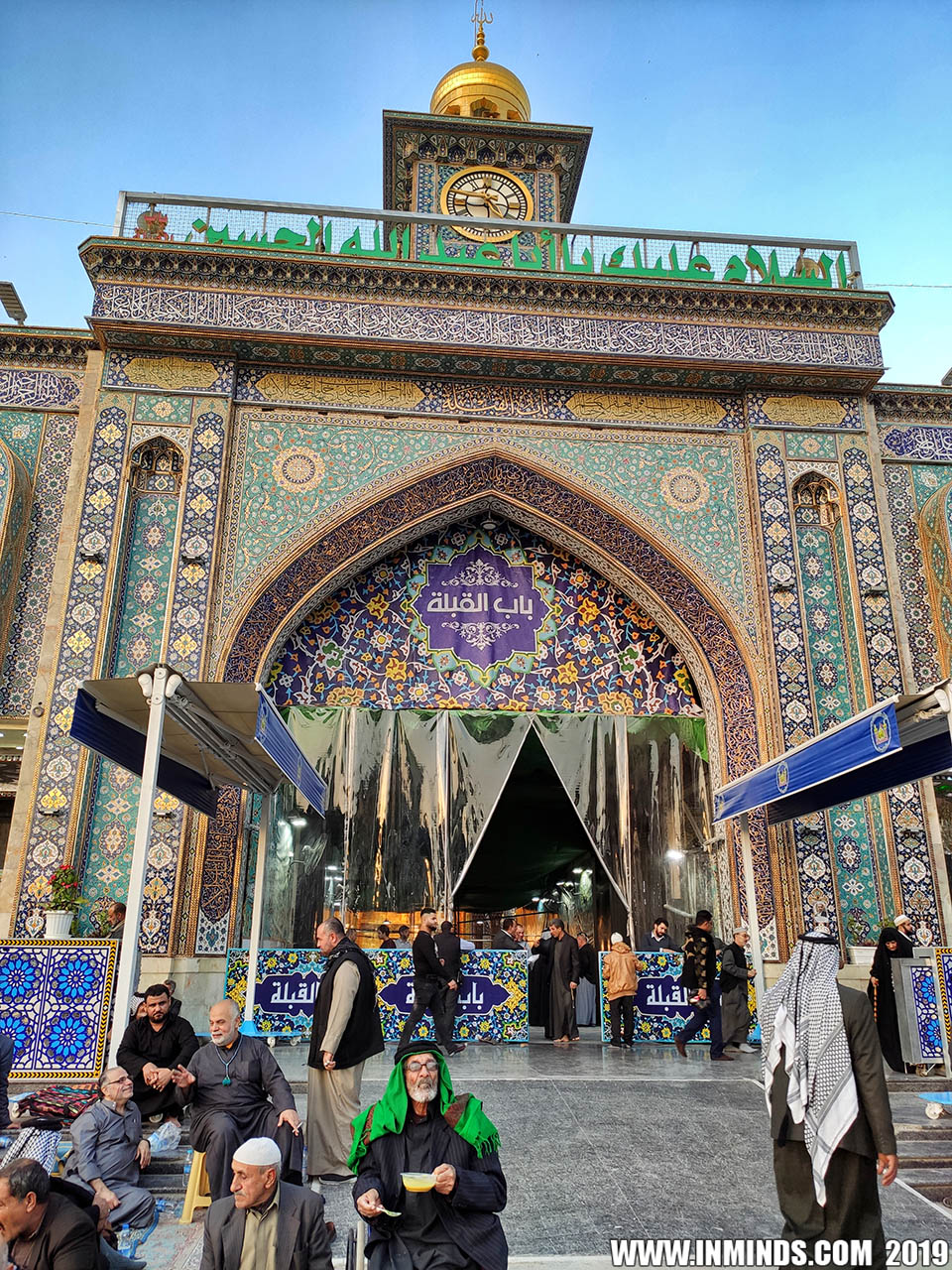 Clocktower of Imam Hussain's Mosque in Karbala 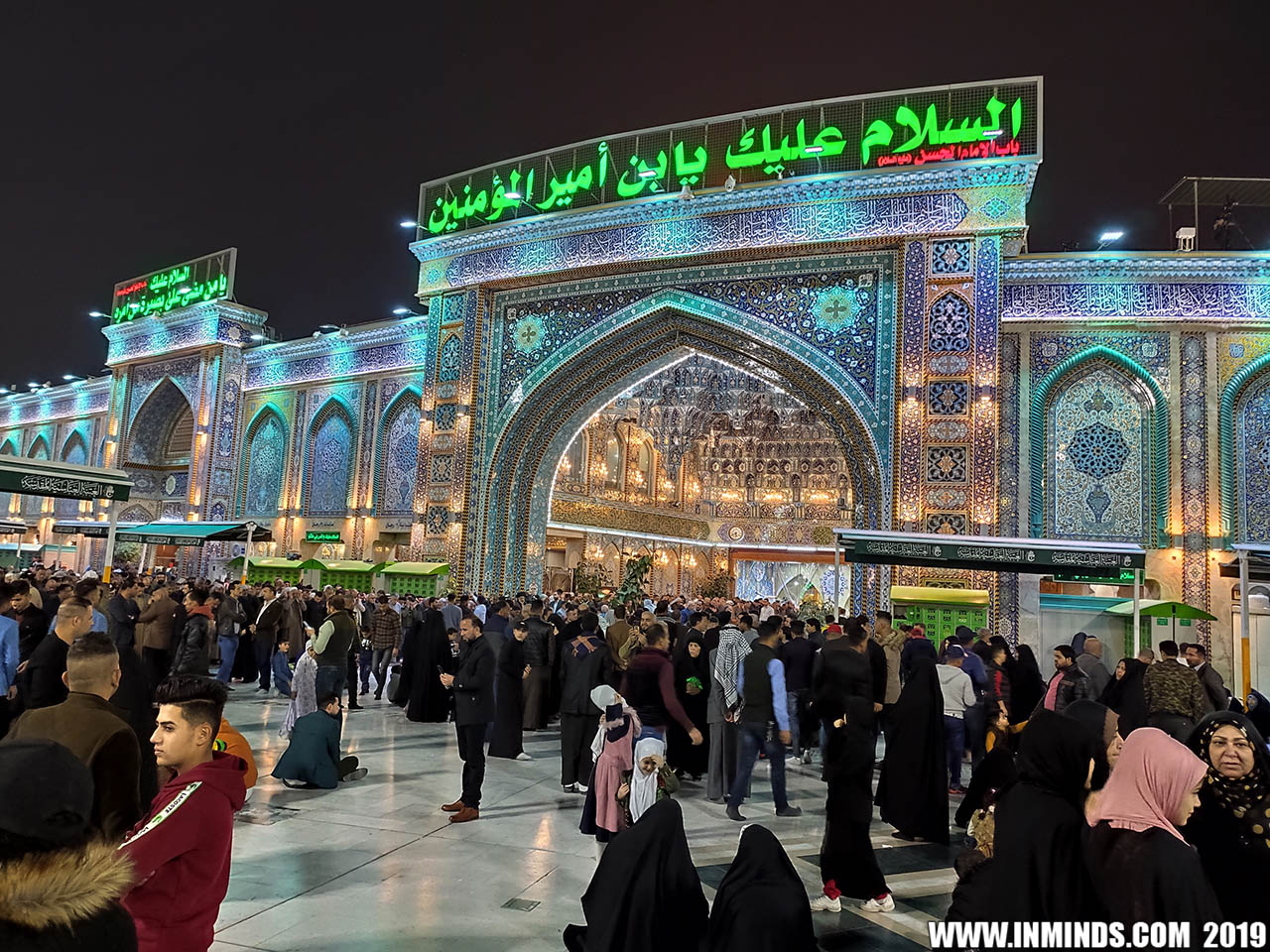 Mosque of Hazrat Abbas(as) in Karbala 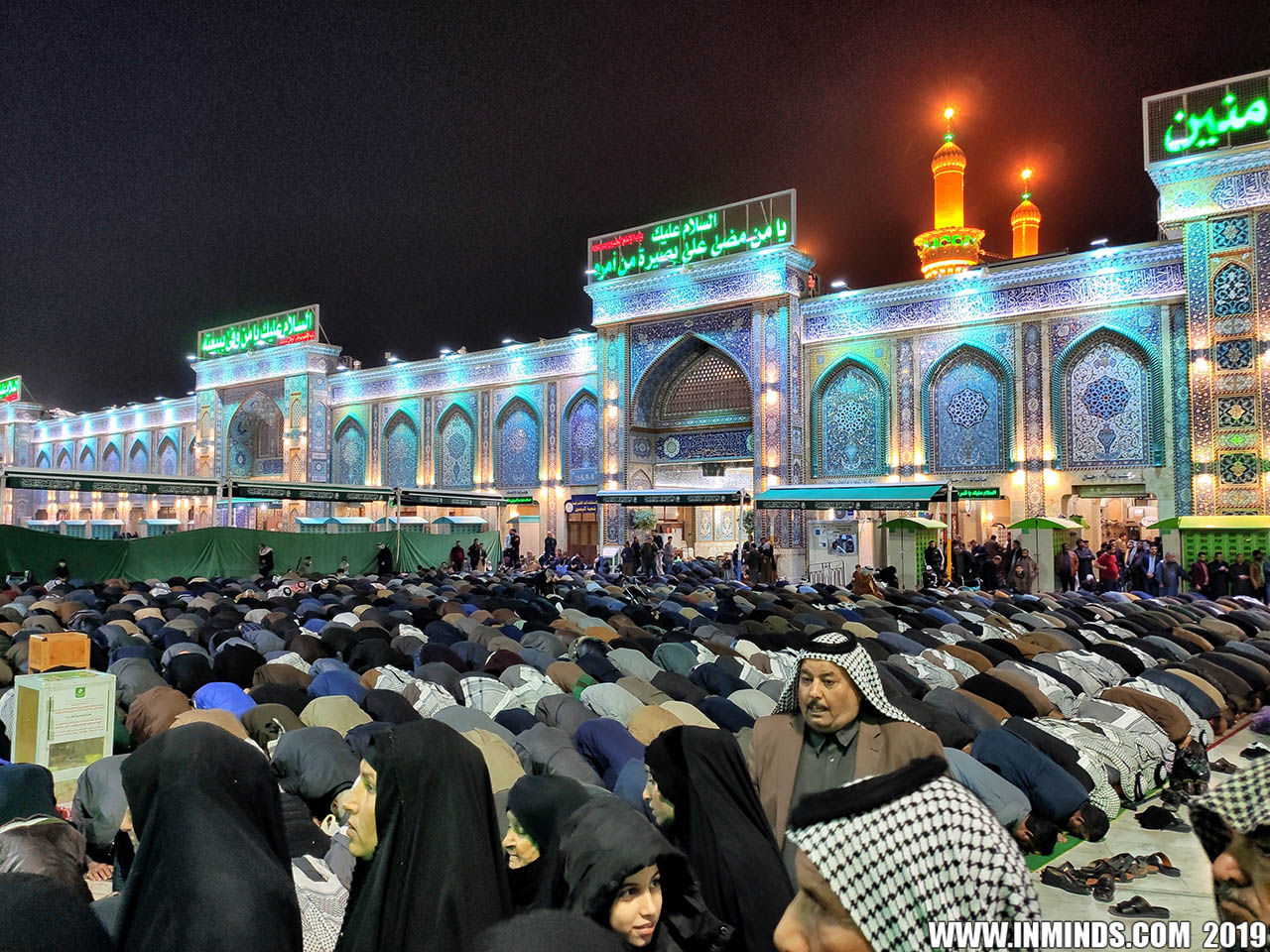 Magrib prayers ooutside Mosque of Hazrat Abbas(as) in Karbala 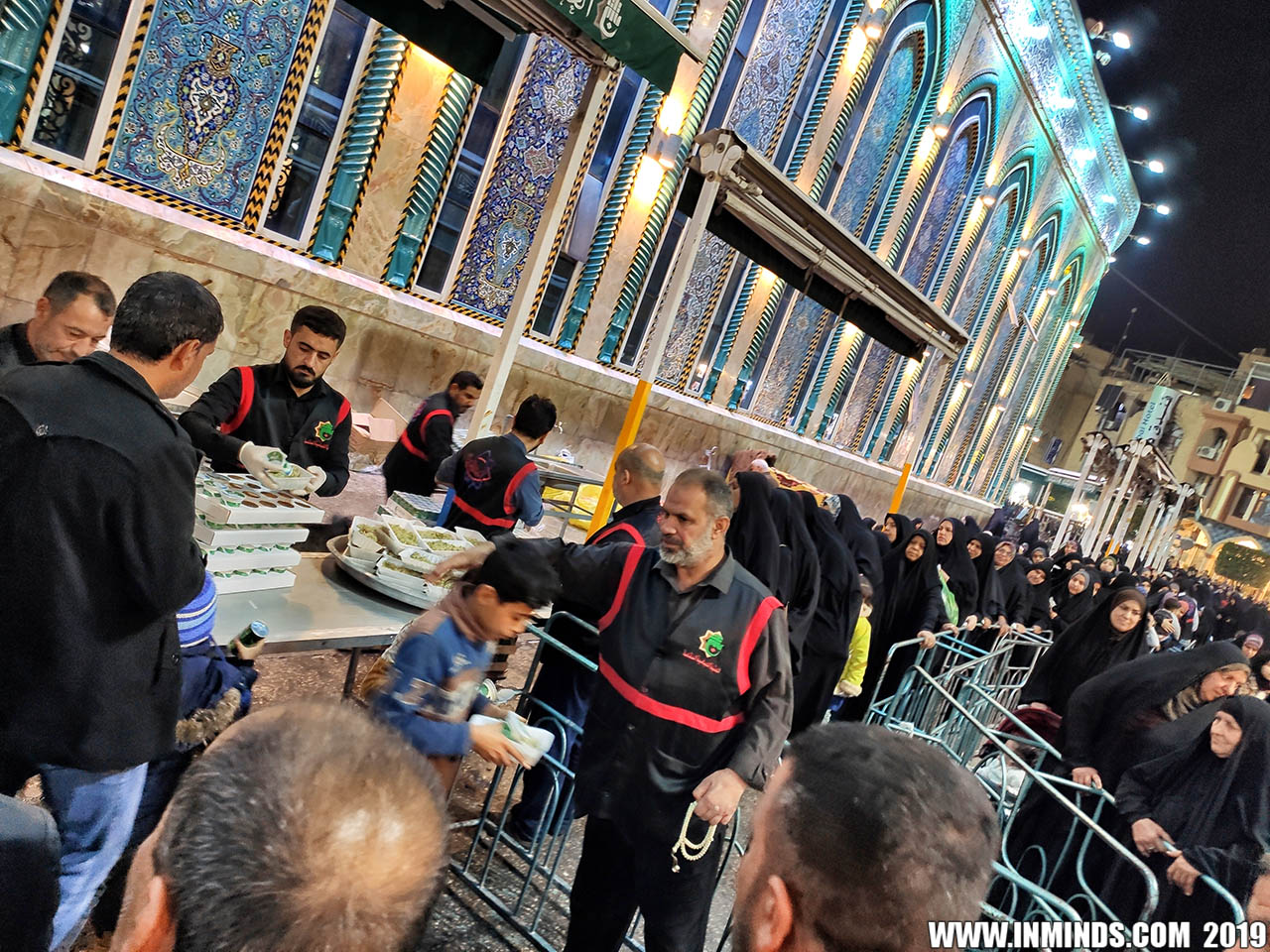 Meals for the poor and pilgrims dispenced from the Mosque of Hazrat Abbas(as) in Karbala 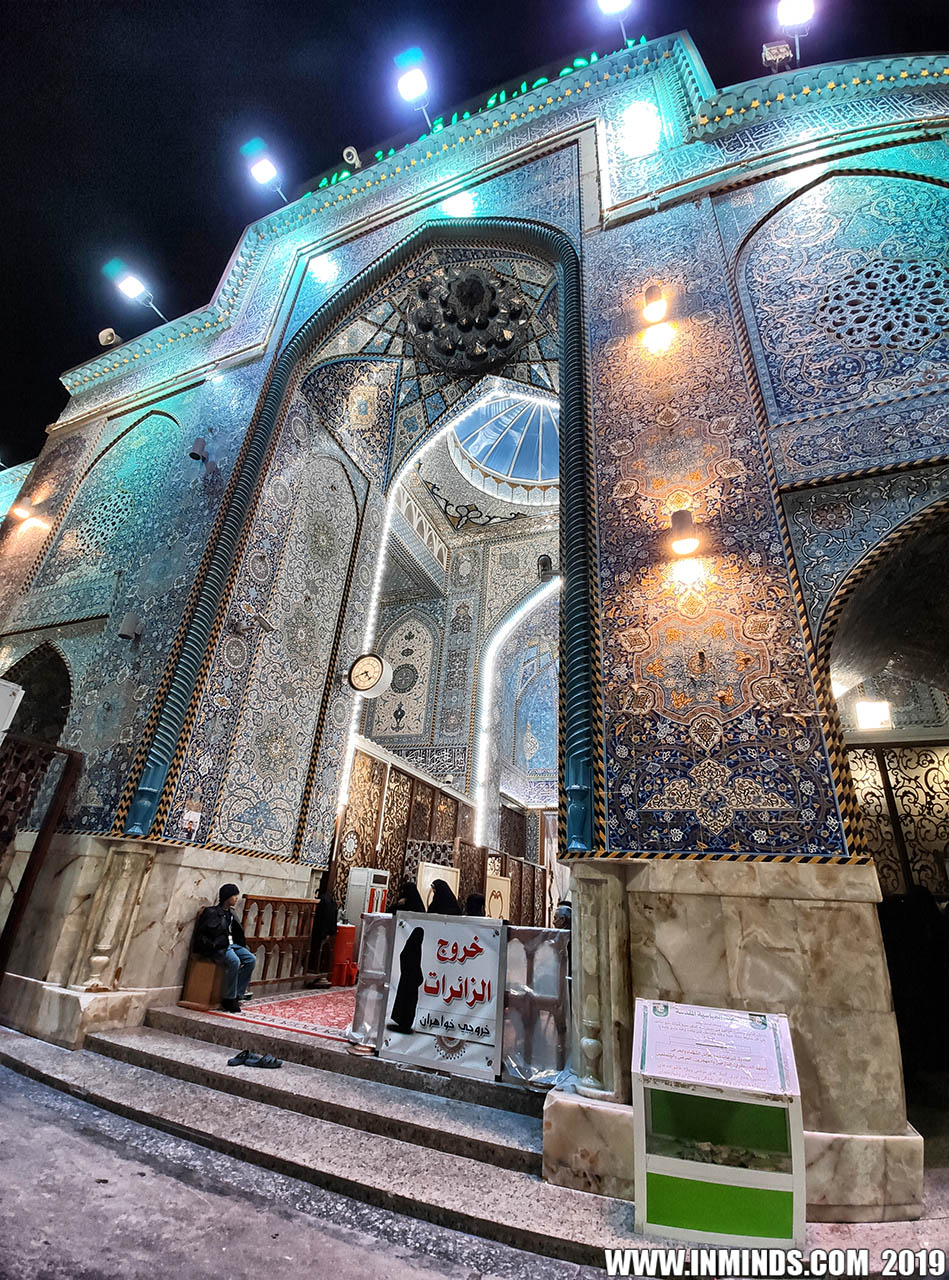 Mosque of Hazrat Abbas(as) in Karbala 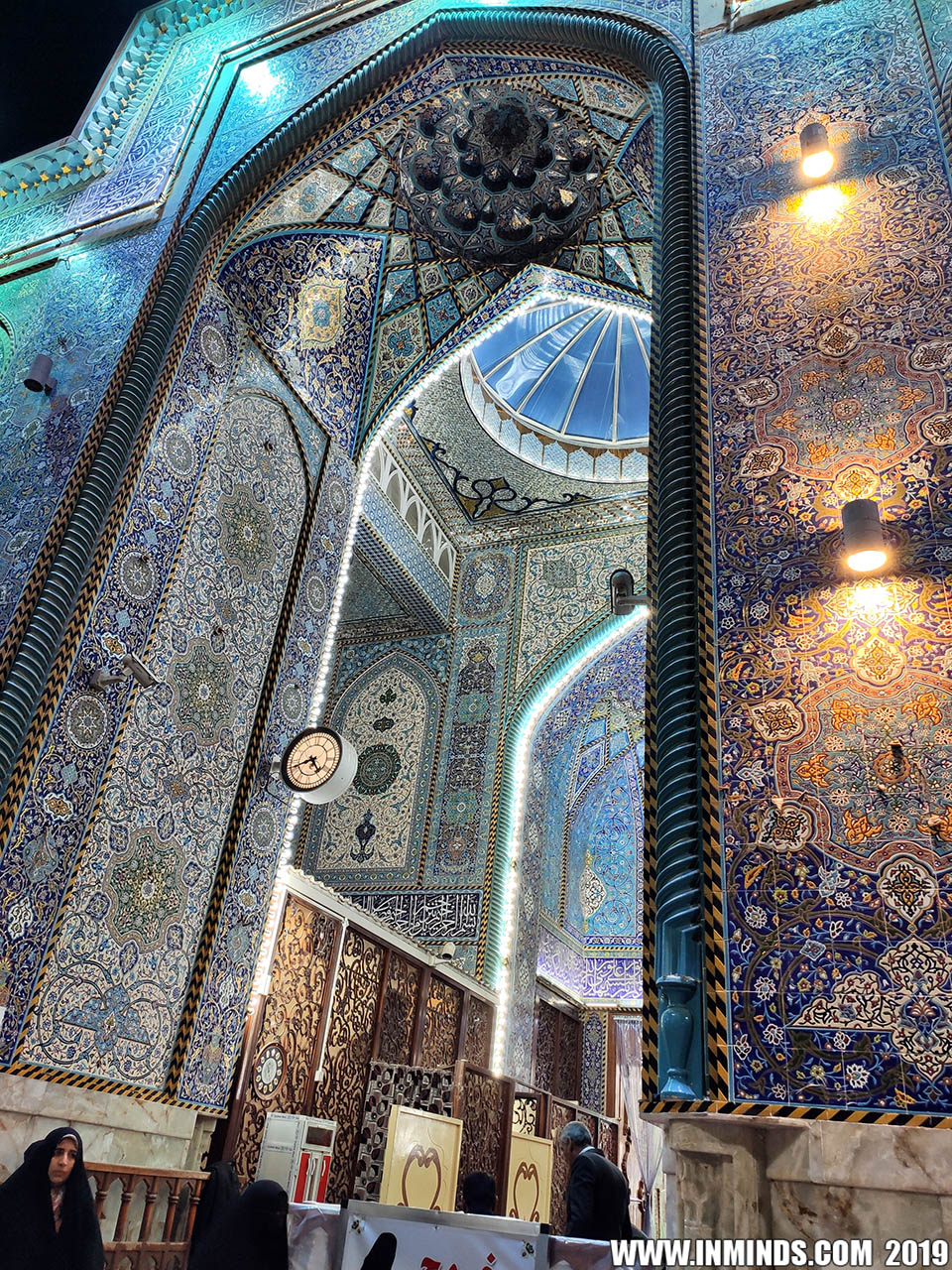 Mosque of Hazrat Abbas(as) in Karbala 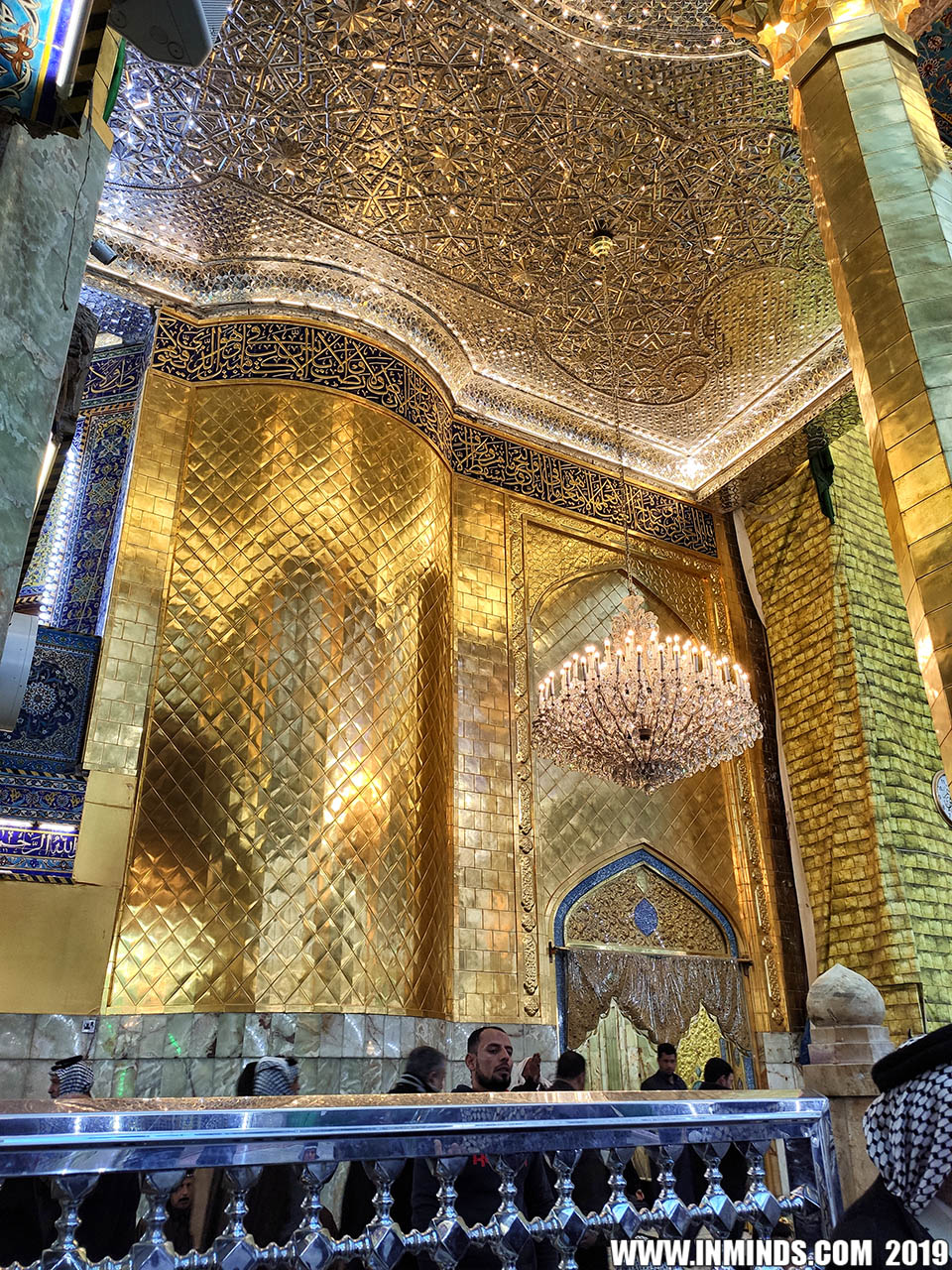 Inner door of Mosque of Hazrat Abbas(as) in Karbala 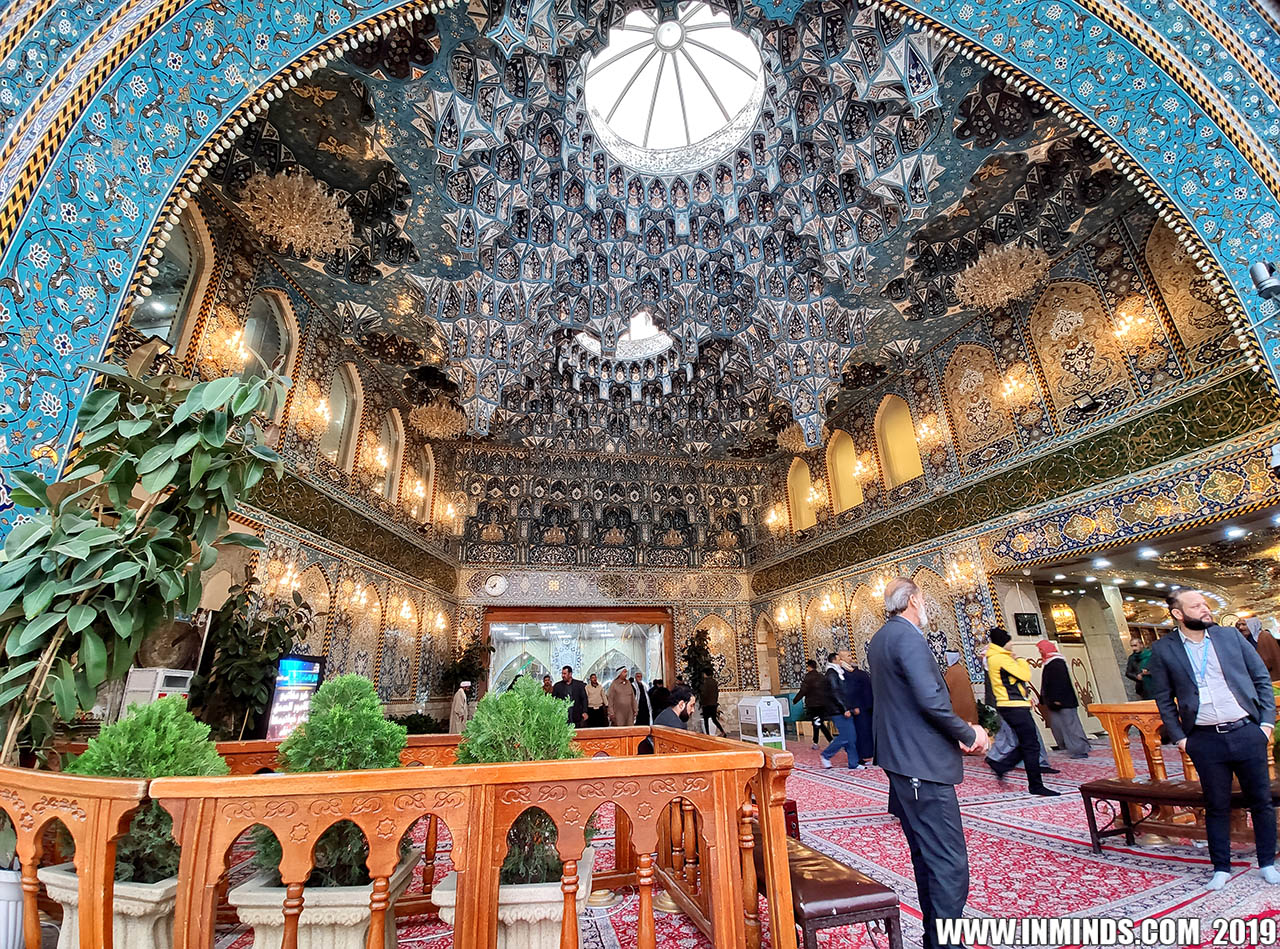 >Mosque of Hazrat Abbas(as) in Karbala 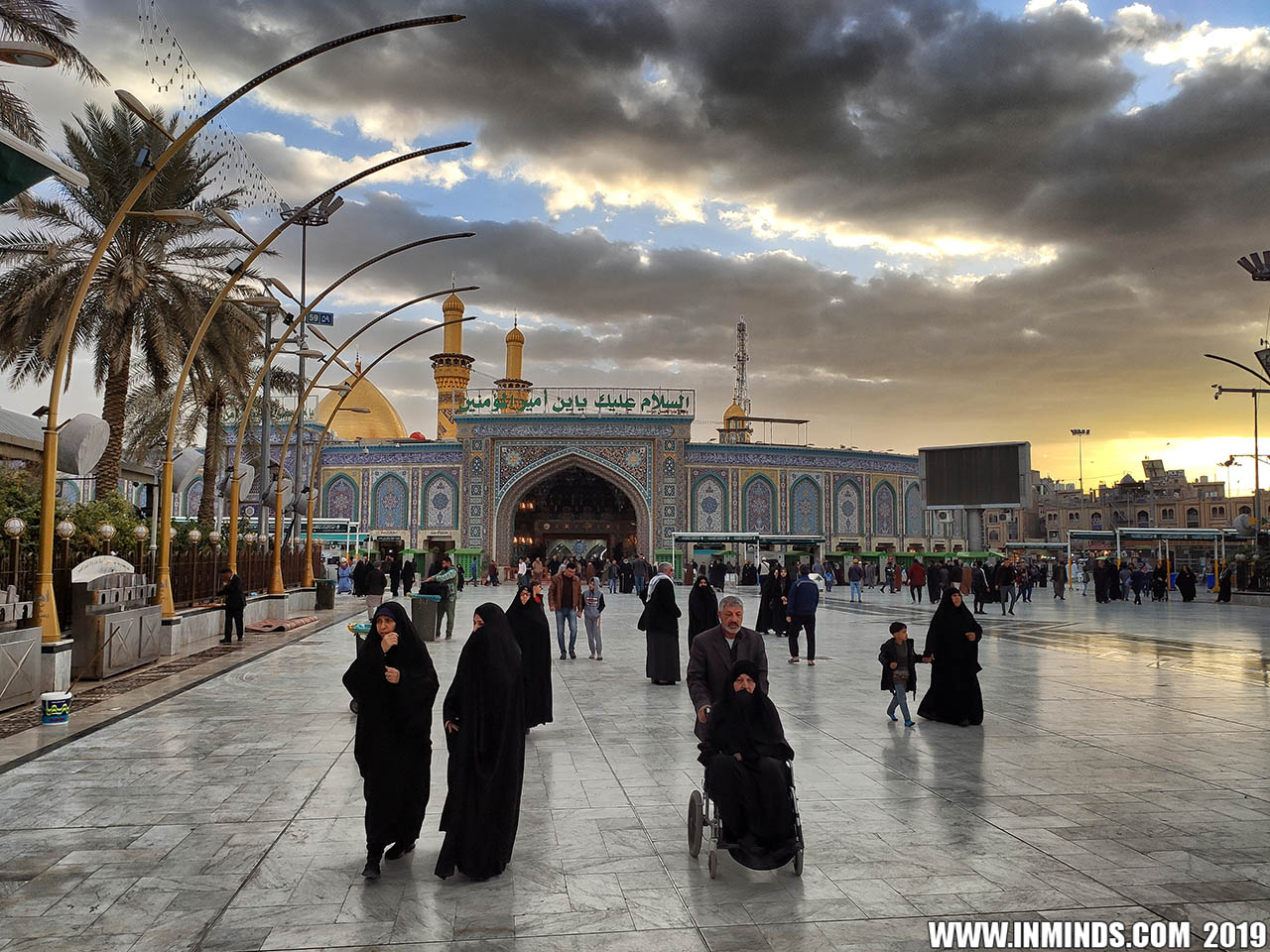 Mosque of Hazrat Abbas(as) in Karbala 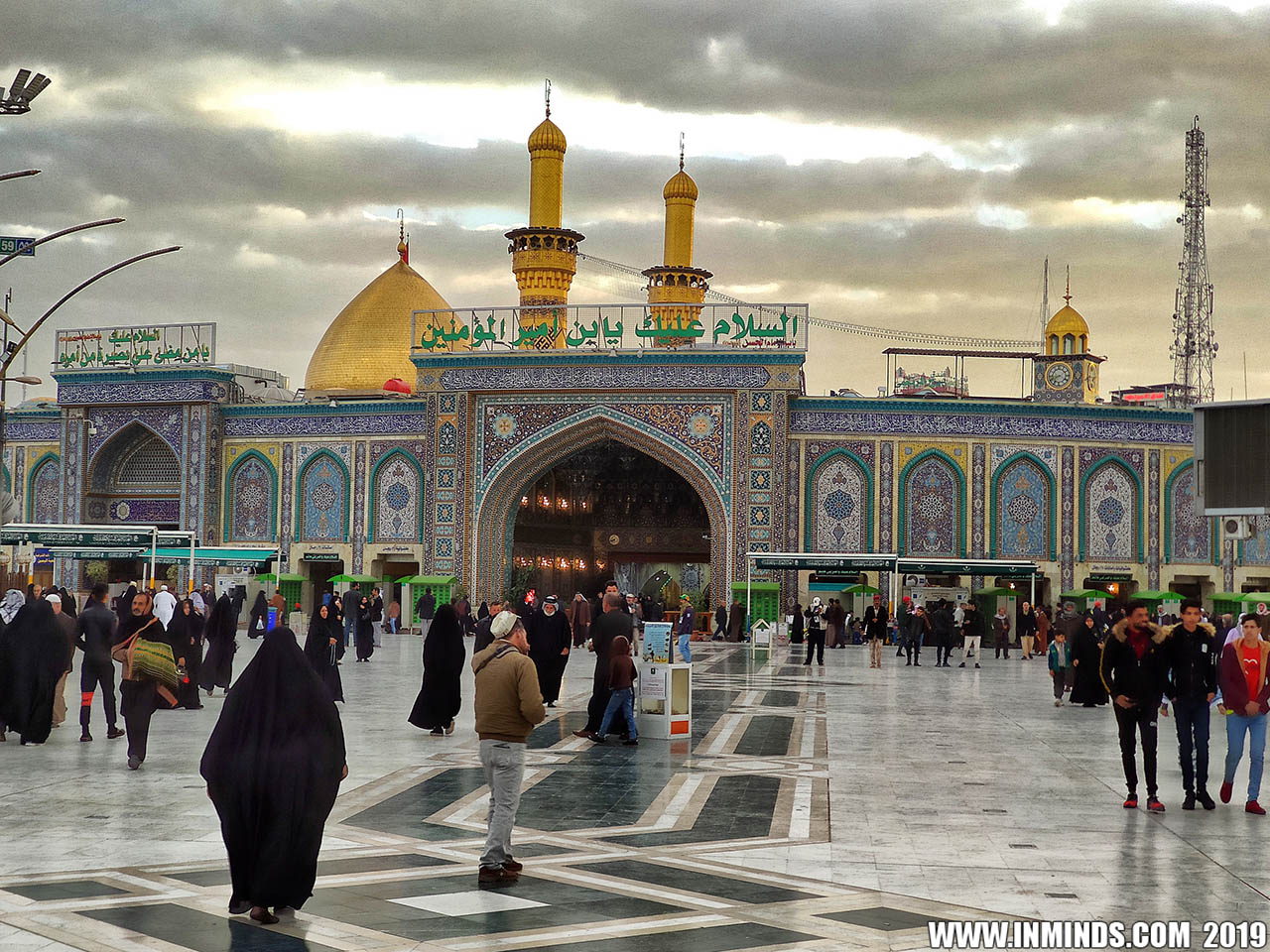 Mosque of Hazrat Abbas(as) in Karbala 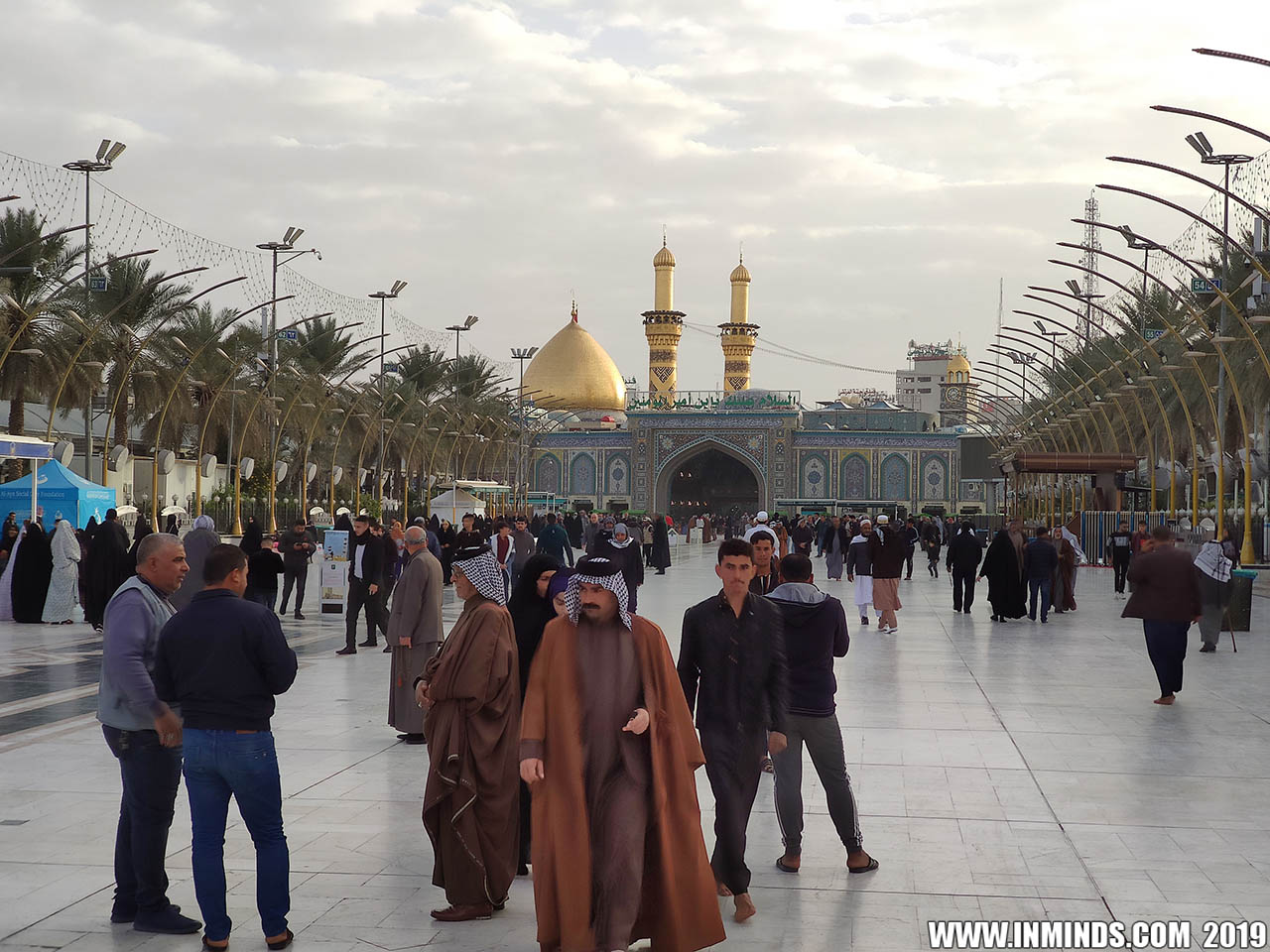 Mosque of Hazrat Abbas(as) in Karbala 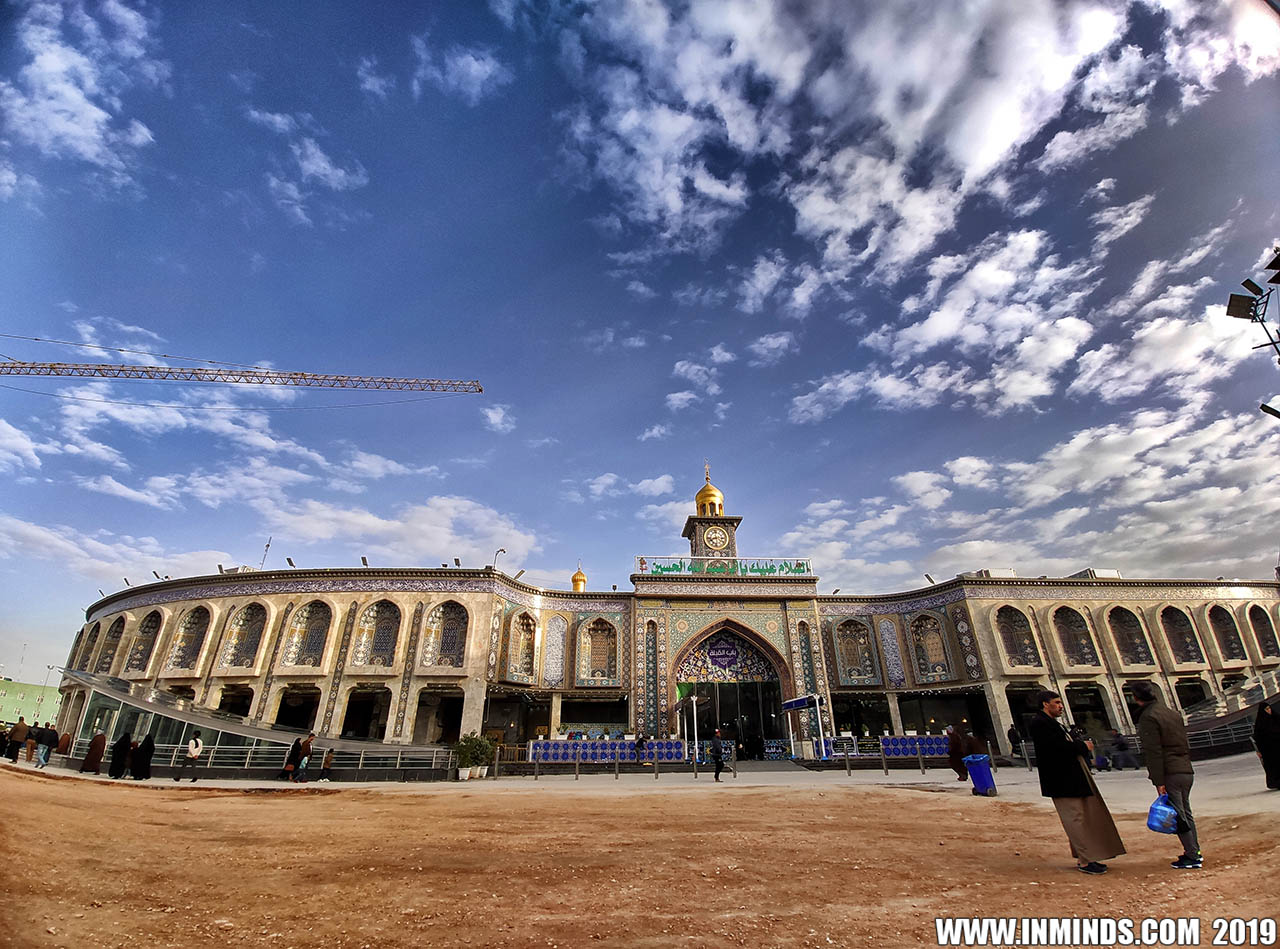 Mosque of Imam Hussain at Karbala 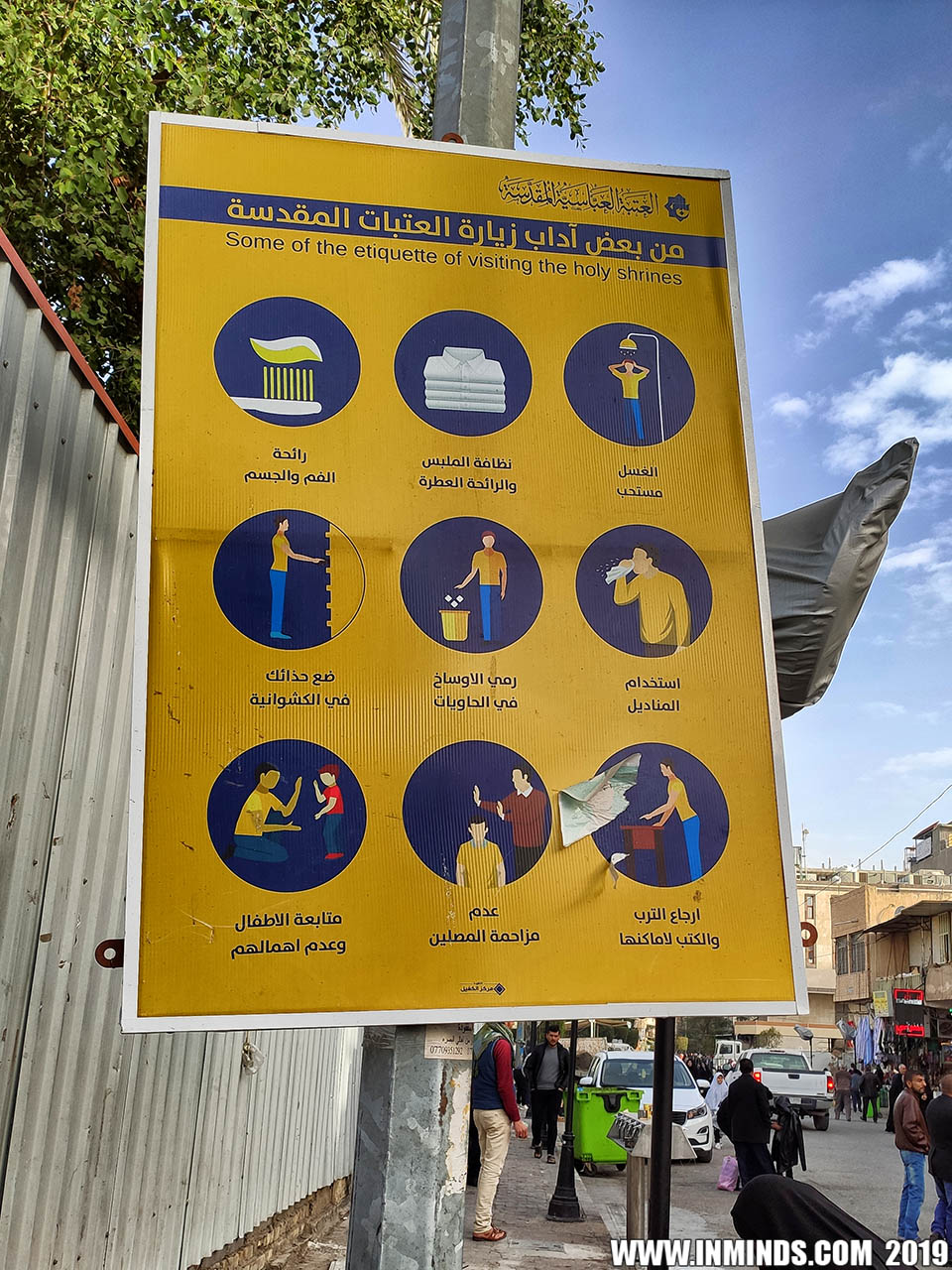 Etiquette in visiting thw holy shrines.. what do the last 3 mean?
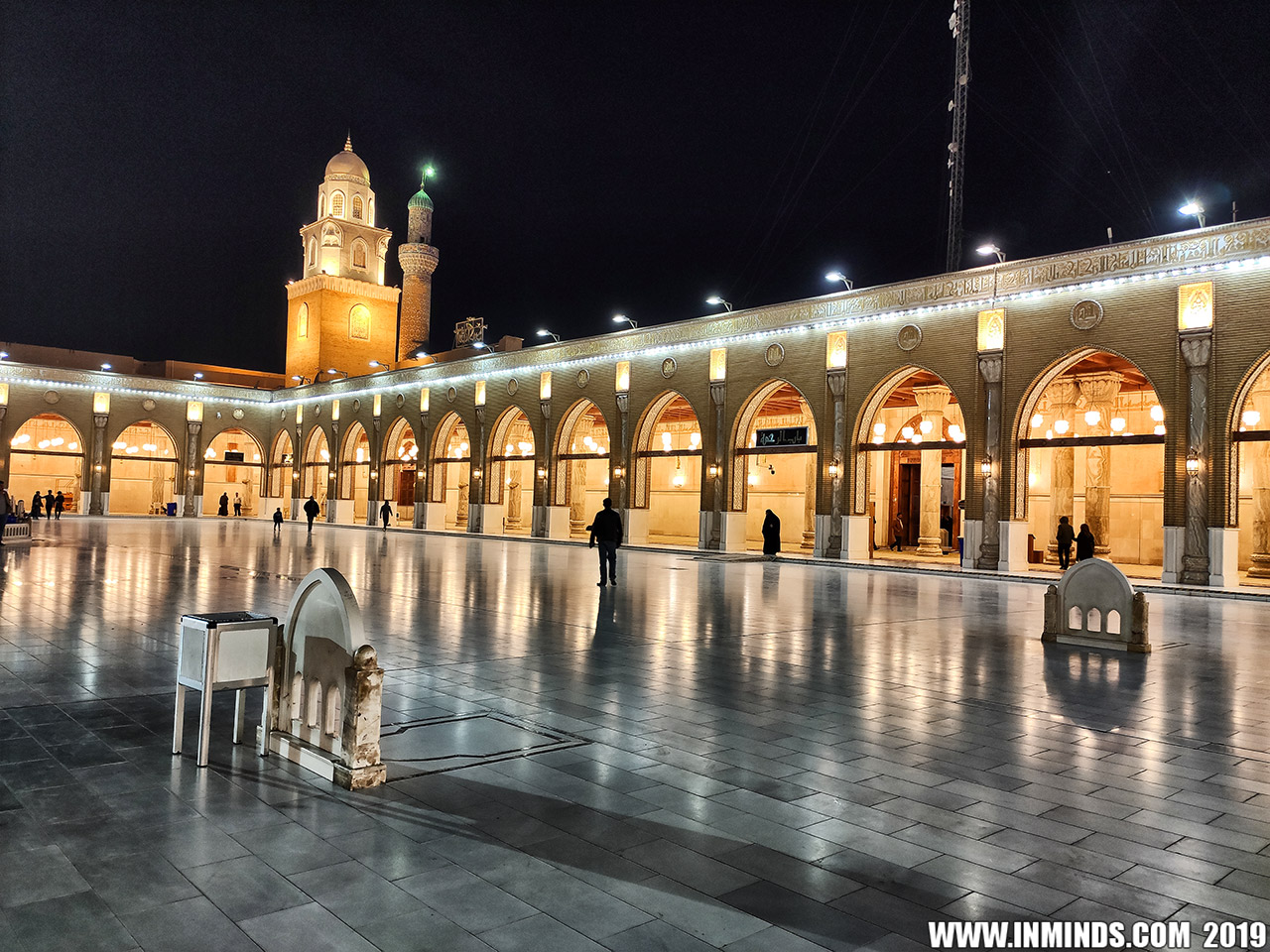 Mosque of Kufa showing Makam of Imam Ali(as) where he held his court room 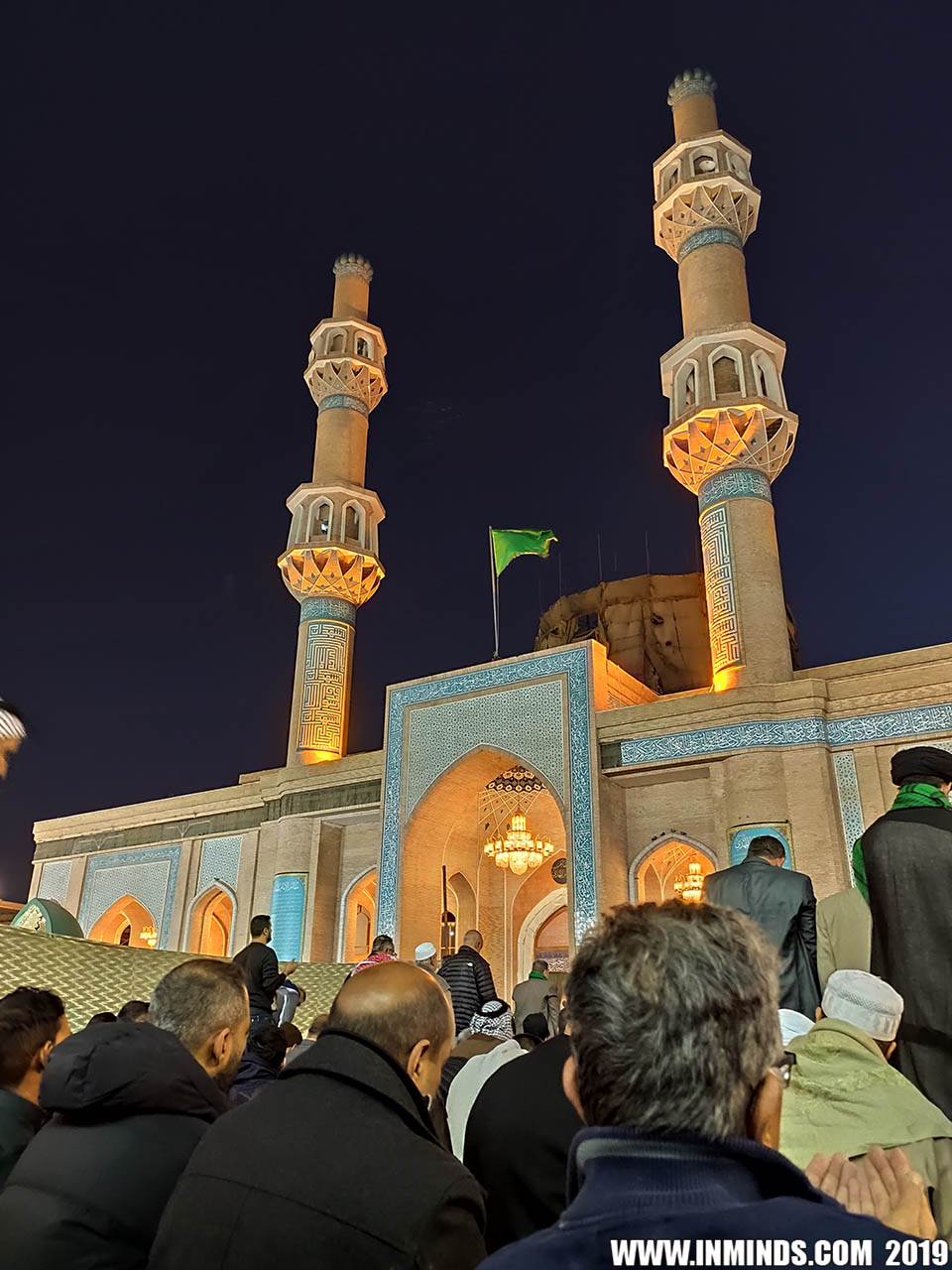 Al Sahlah Mosque in Kufa 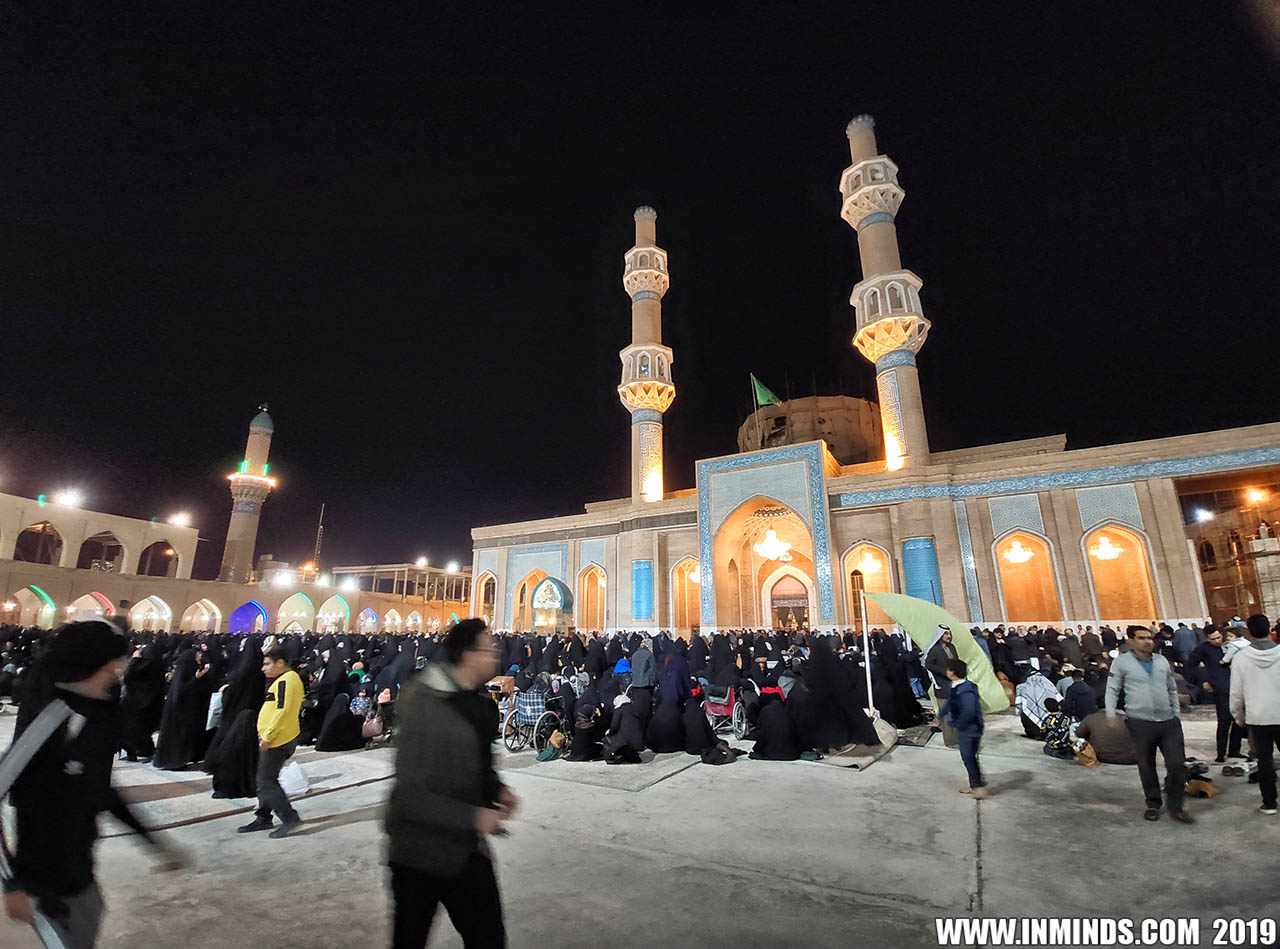 Al Sahlah Mosque in Kufa  Al Sahlah Mosque in Kufa 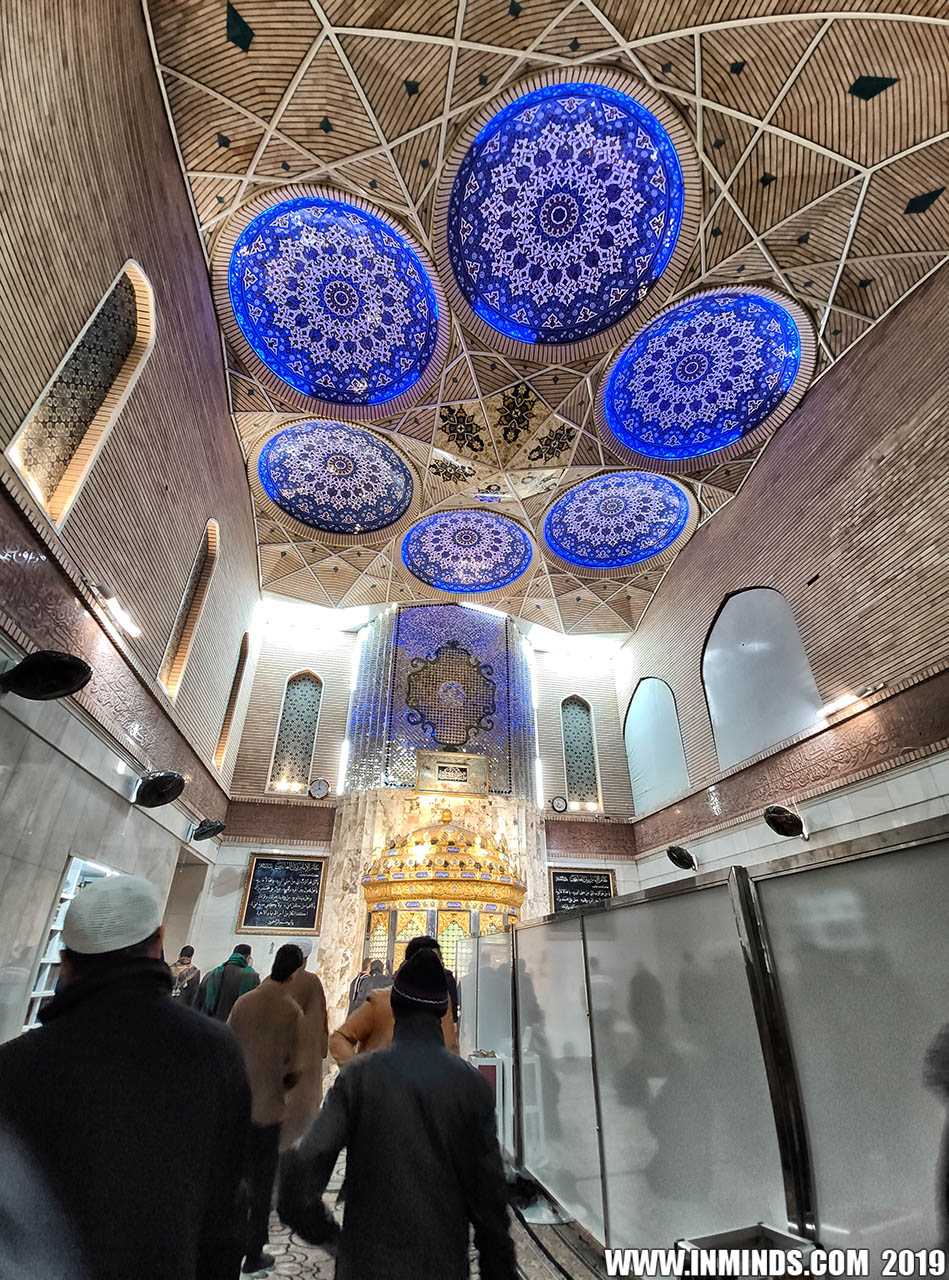 Al Sahlah Mosque in Kufa 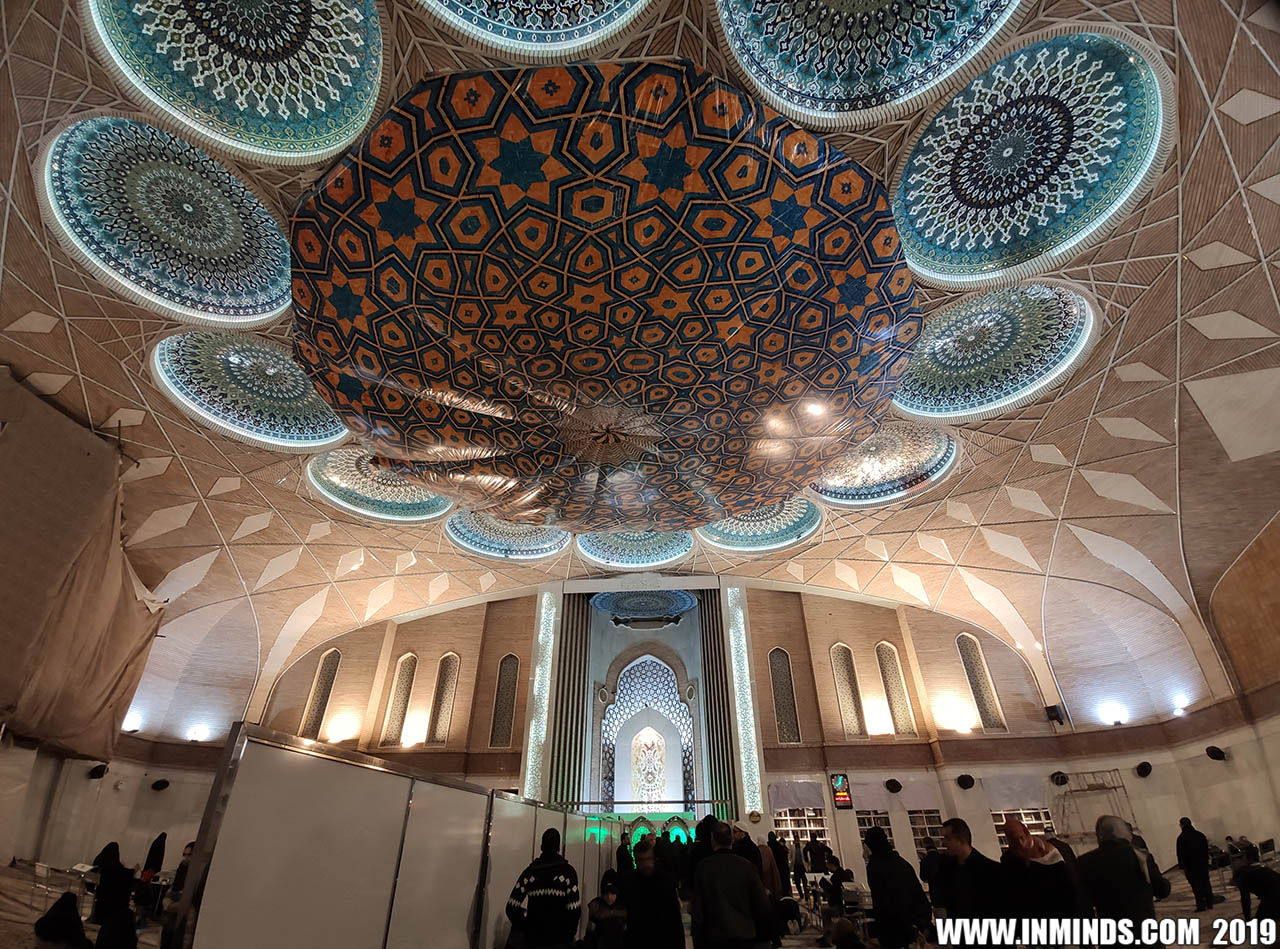 Al Sahlah Mosque in Kufa 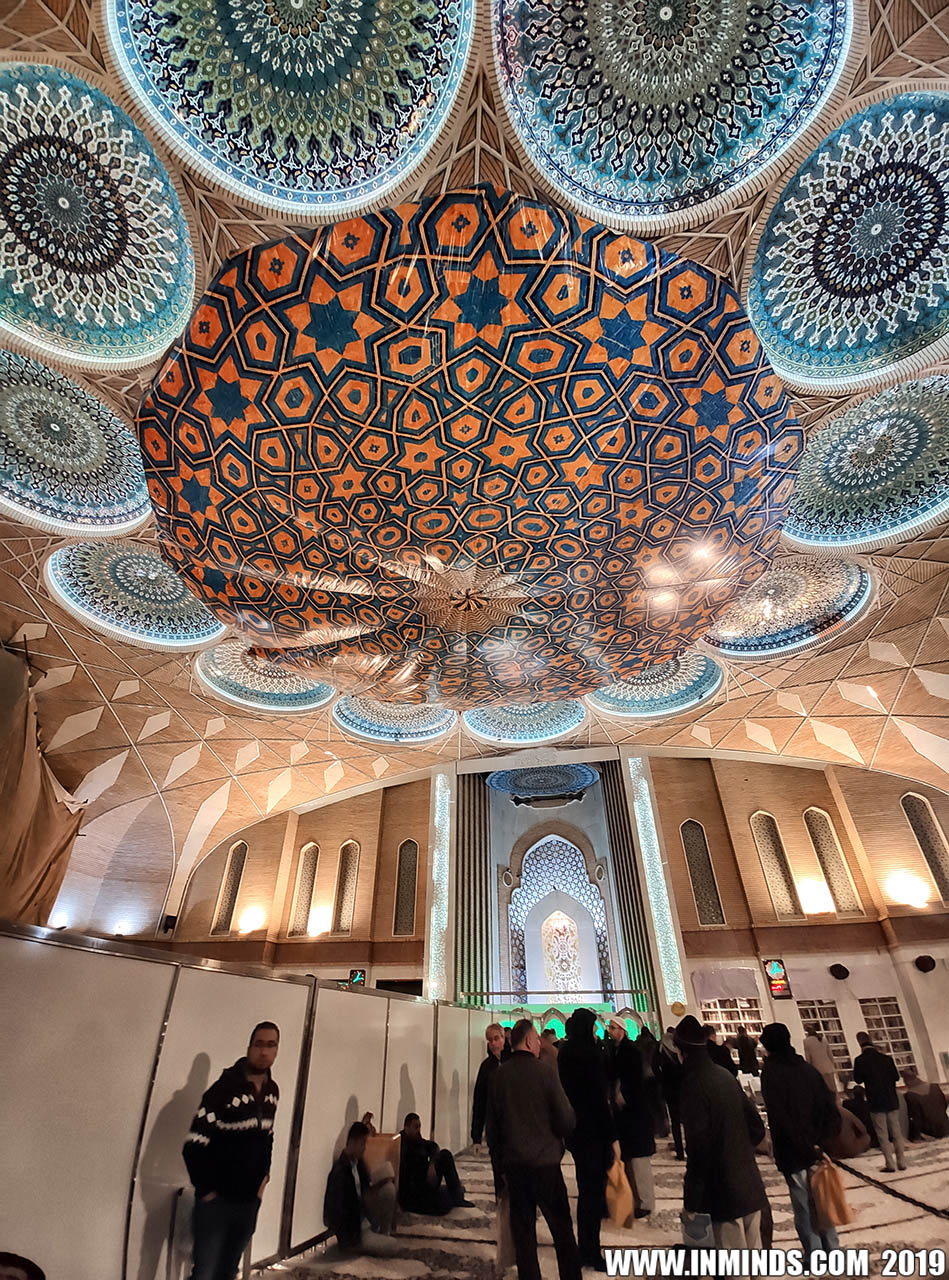 Al Sahlah Mosque in Kufa 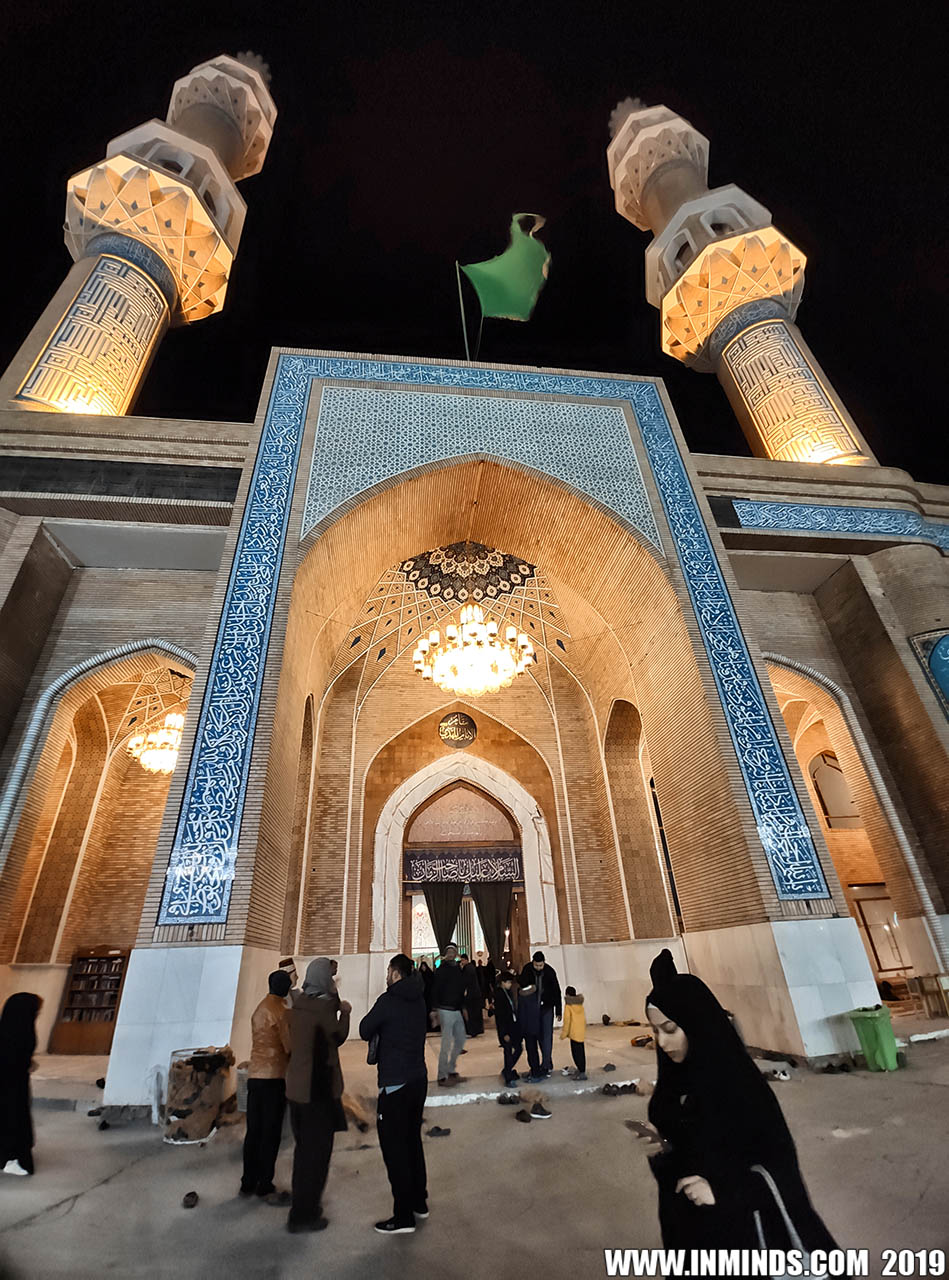 Al Sahlah Mosque in Kufa  Mosque Al Hanana in Kufa. It used to be a church. It is said that Imam Hussain's severed head was kept here one night. The preiest addressed the head asking him its identity. When Imam replied, the priest immediately accepted Islam.  Inside Mosque Al Hanana in Kufa 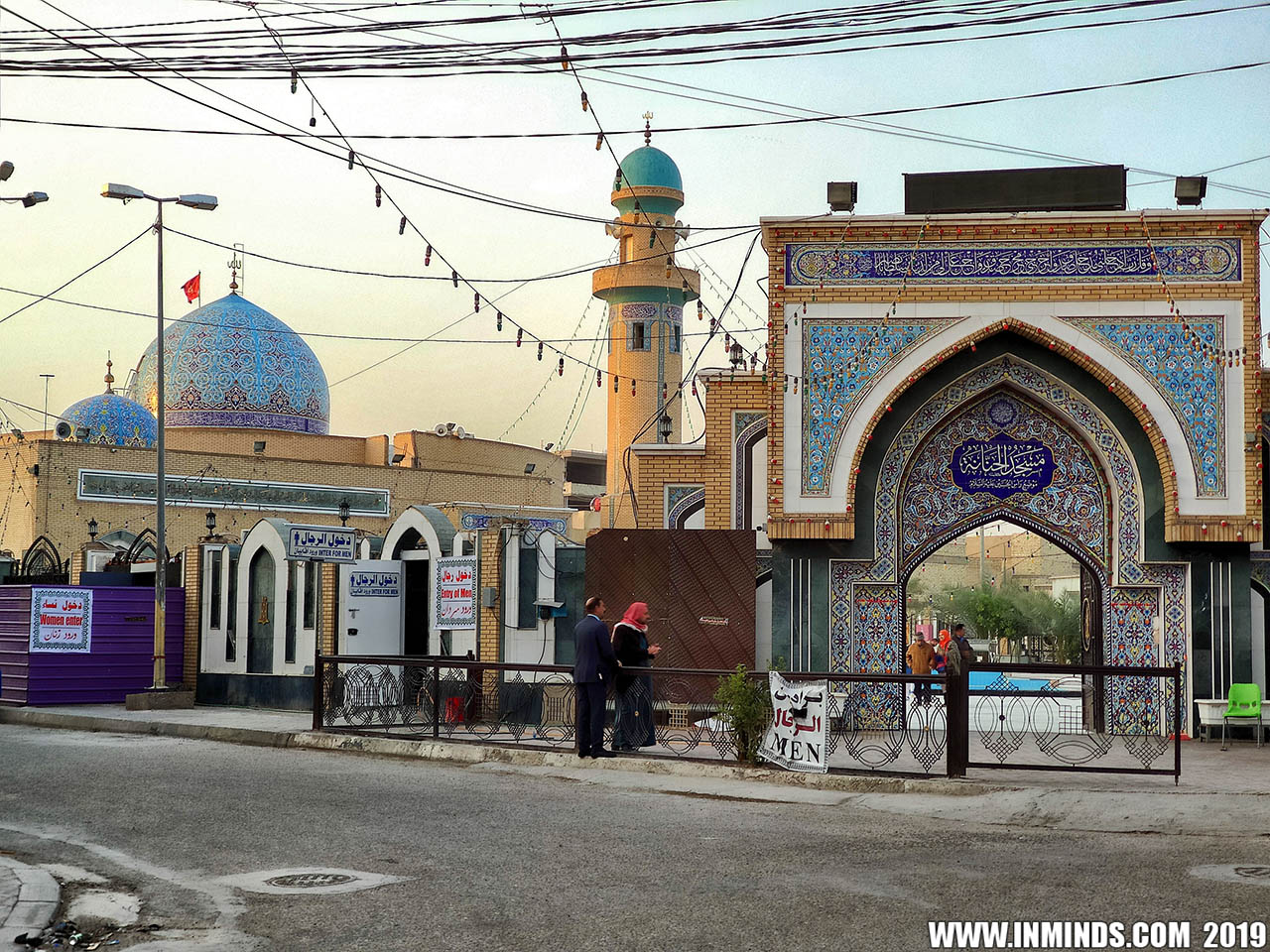 Entrance of Mosque Al Hanana in Kufa 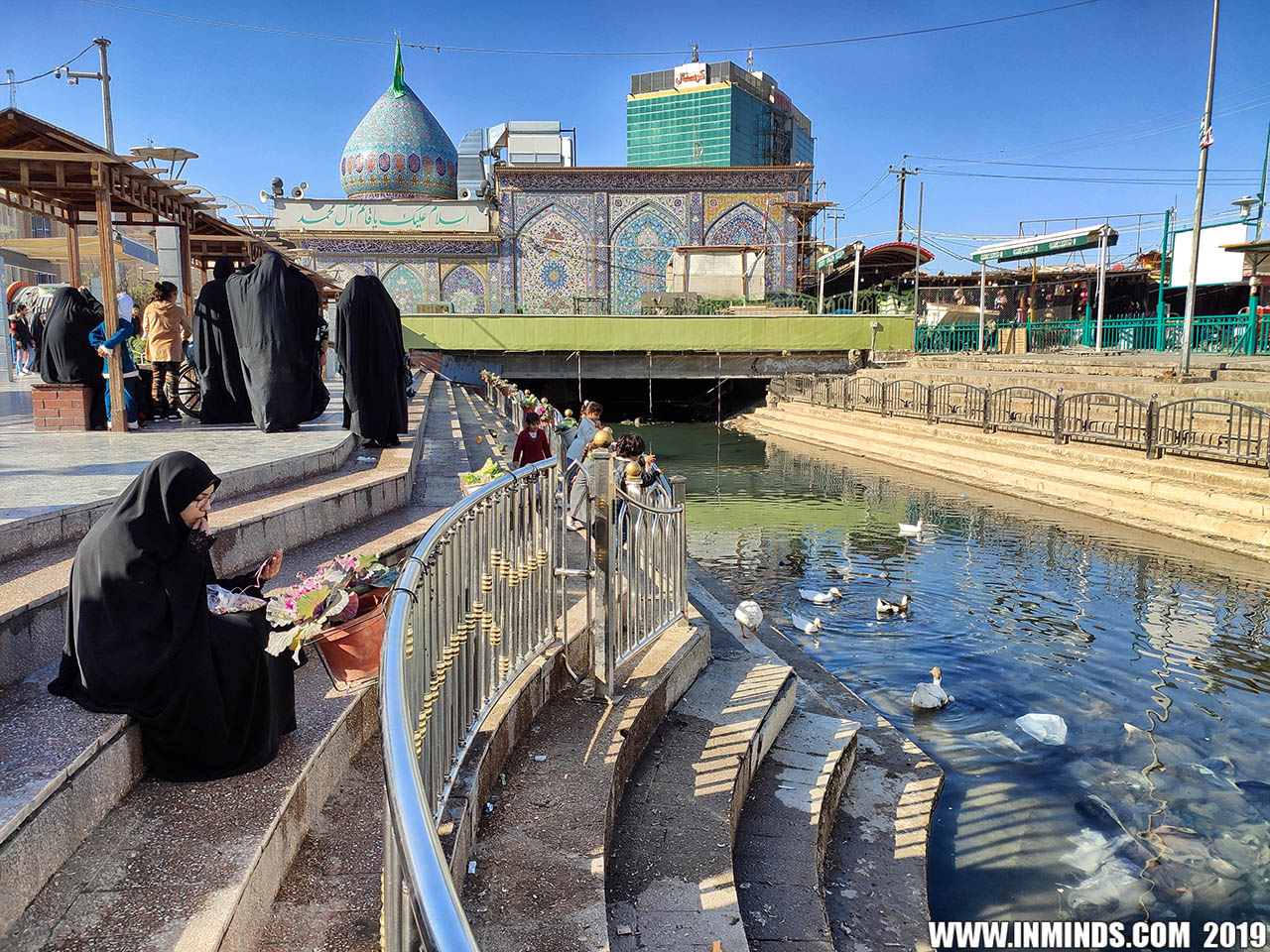 An offshoot of the river Euphrates in Karbala (Maqam Imam Mahdi in the background) 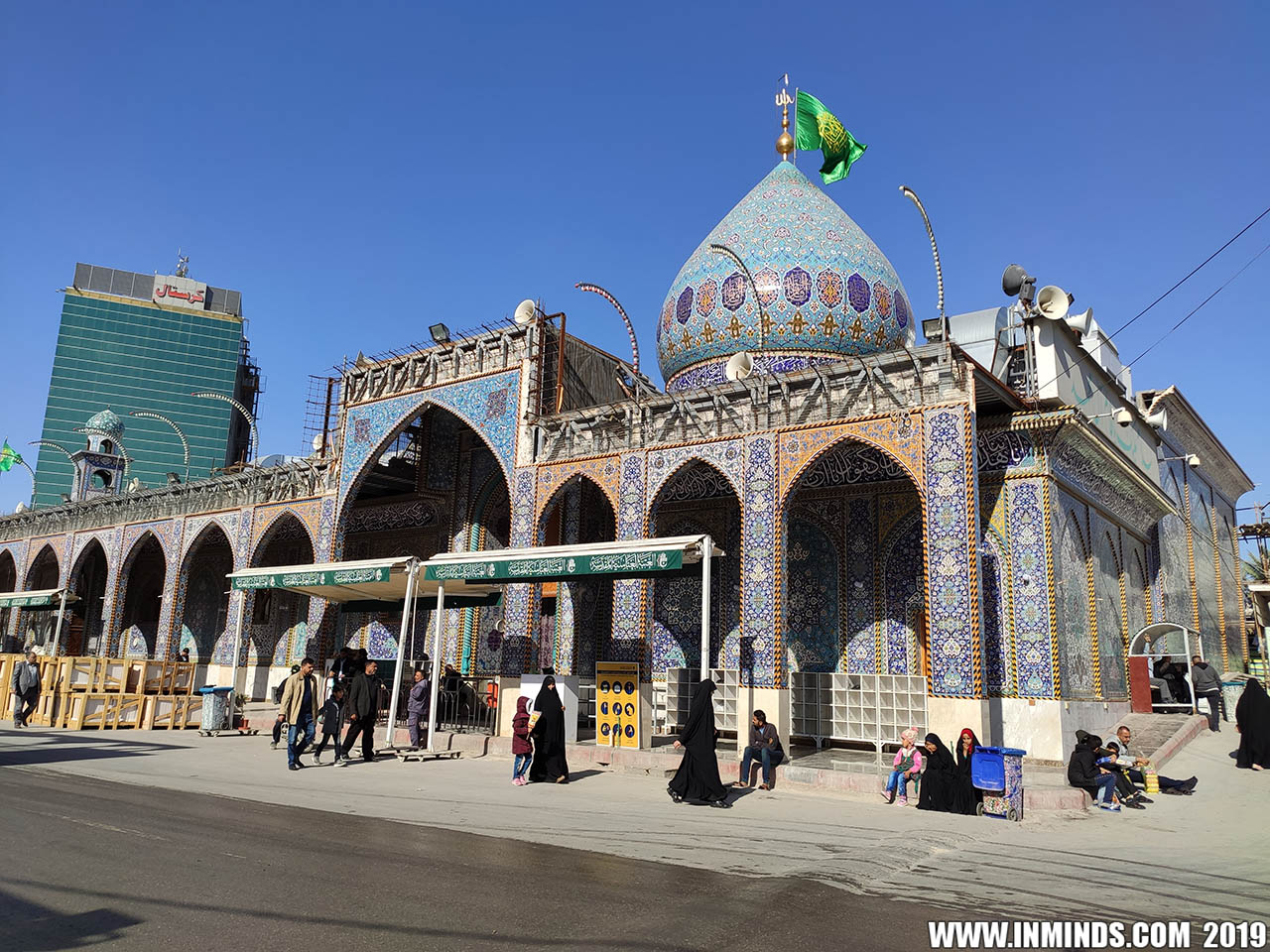 Maqam Imam Mahdi in Karbala 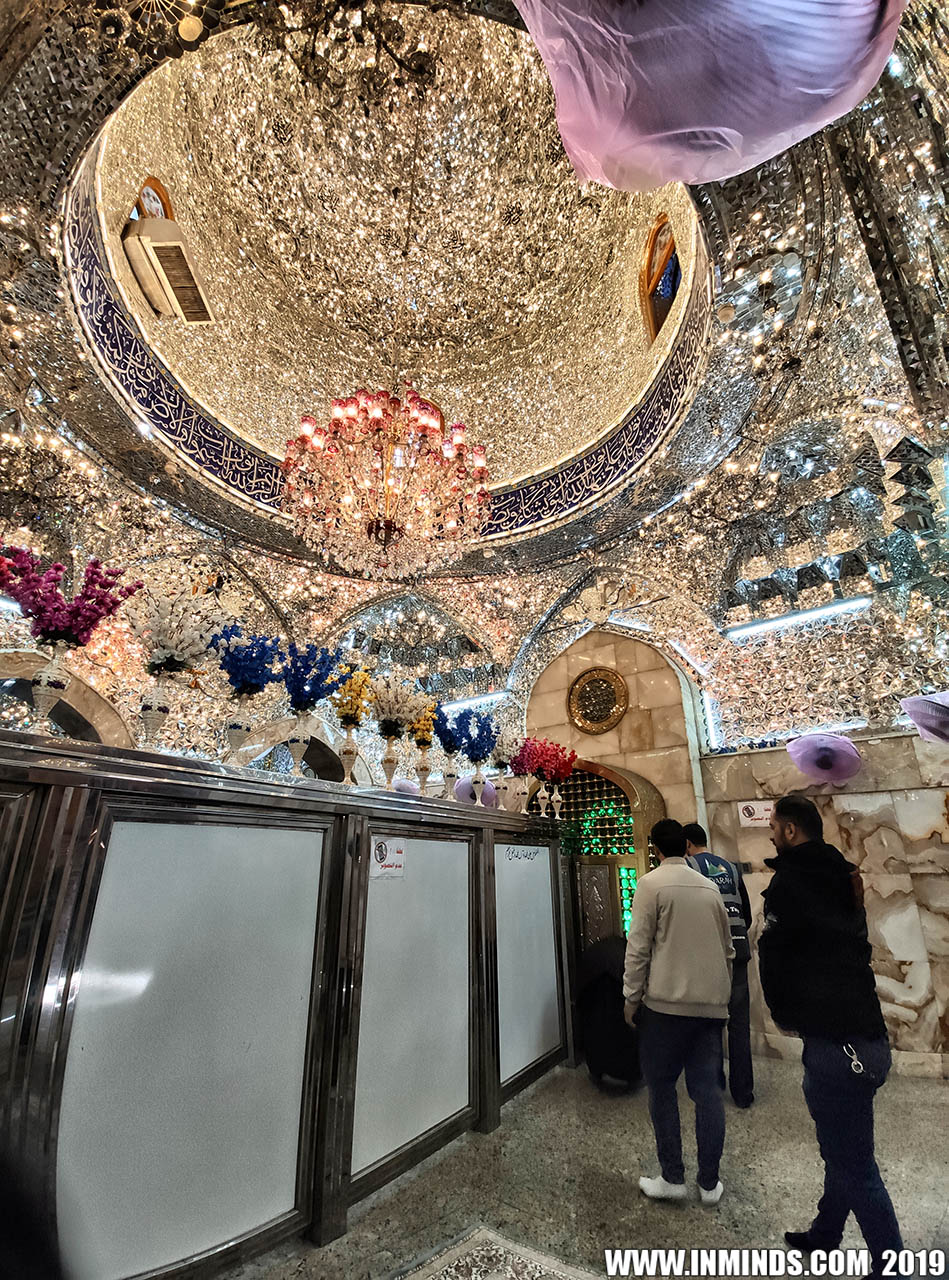 Maqam Imam Mahdi in Karbala 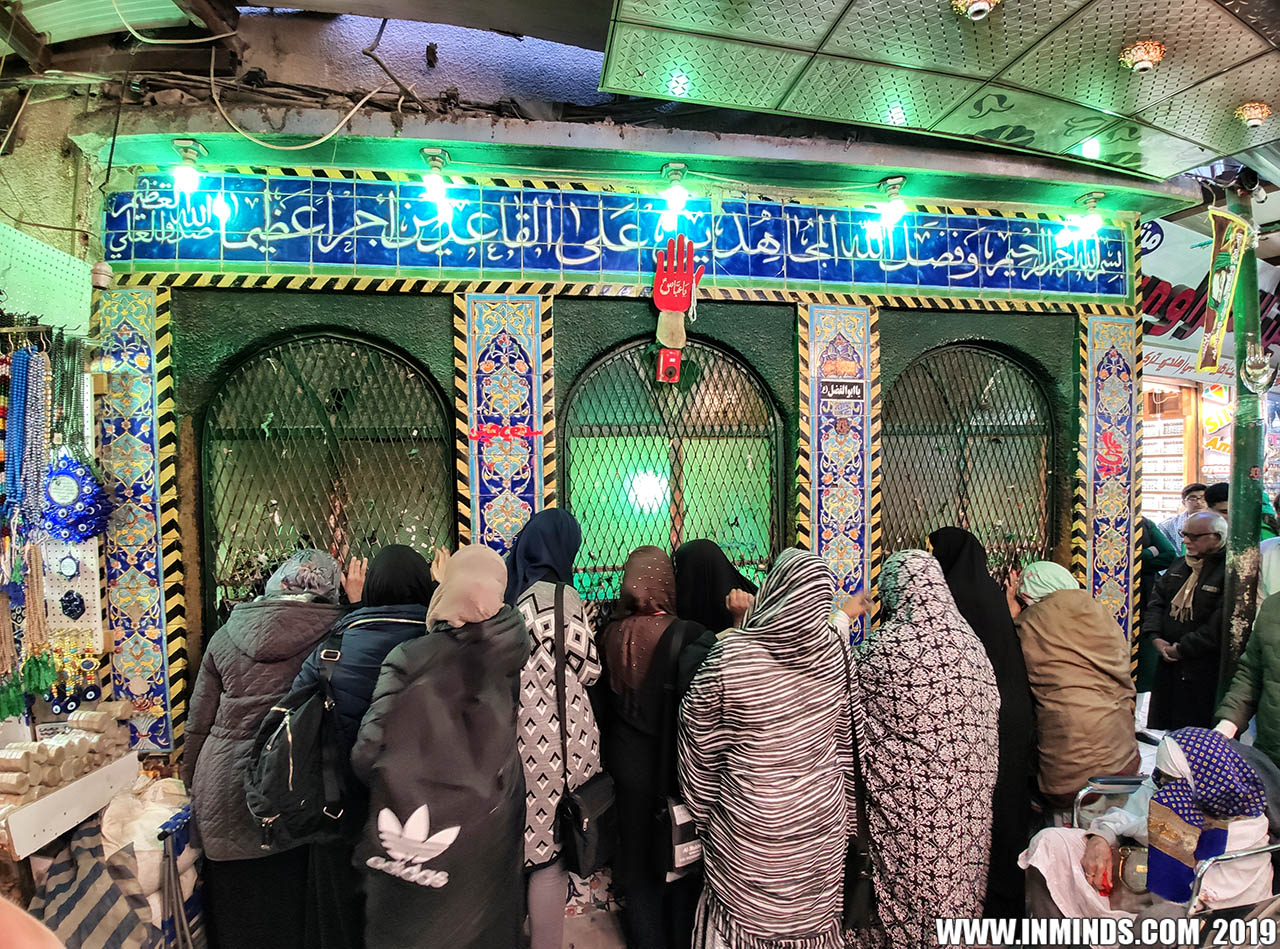 Makam in the markets of Karbala  Makam in the markets of Karbala 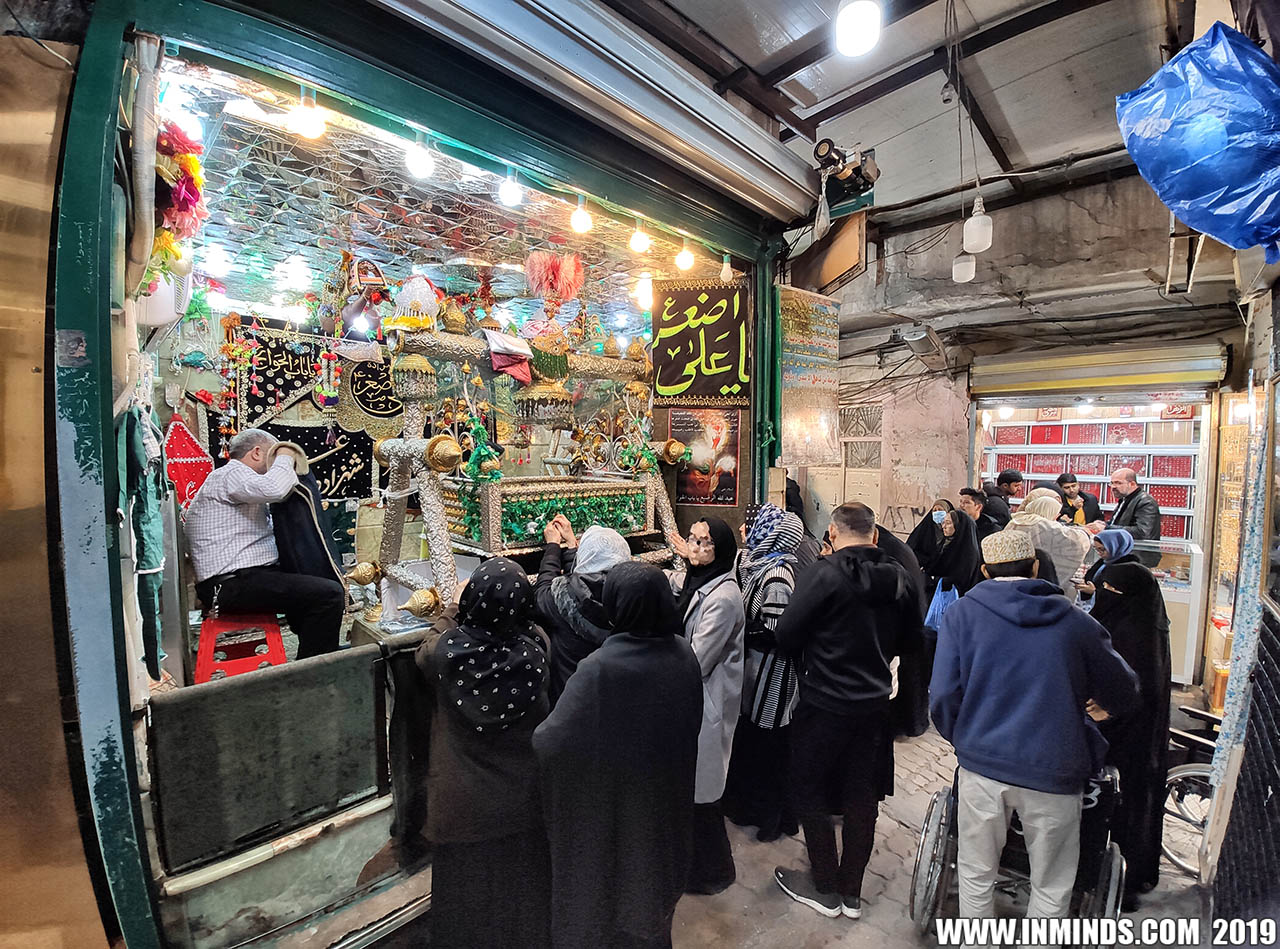 Makam in the markets of Karbala 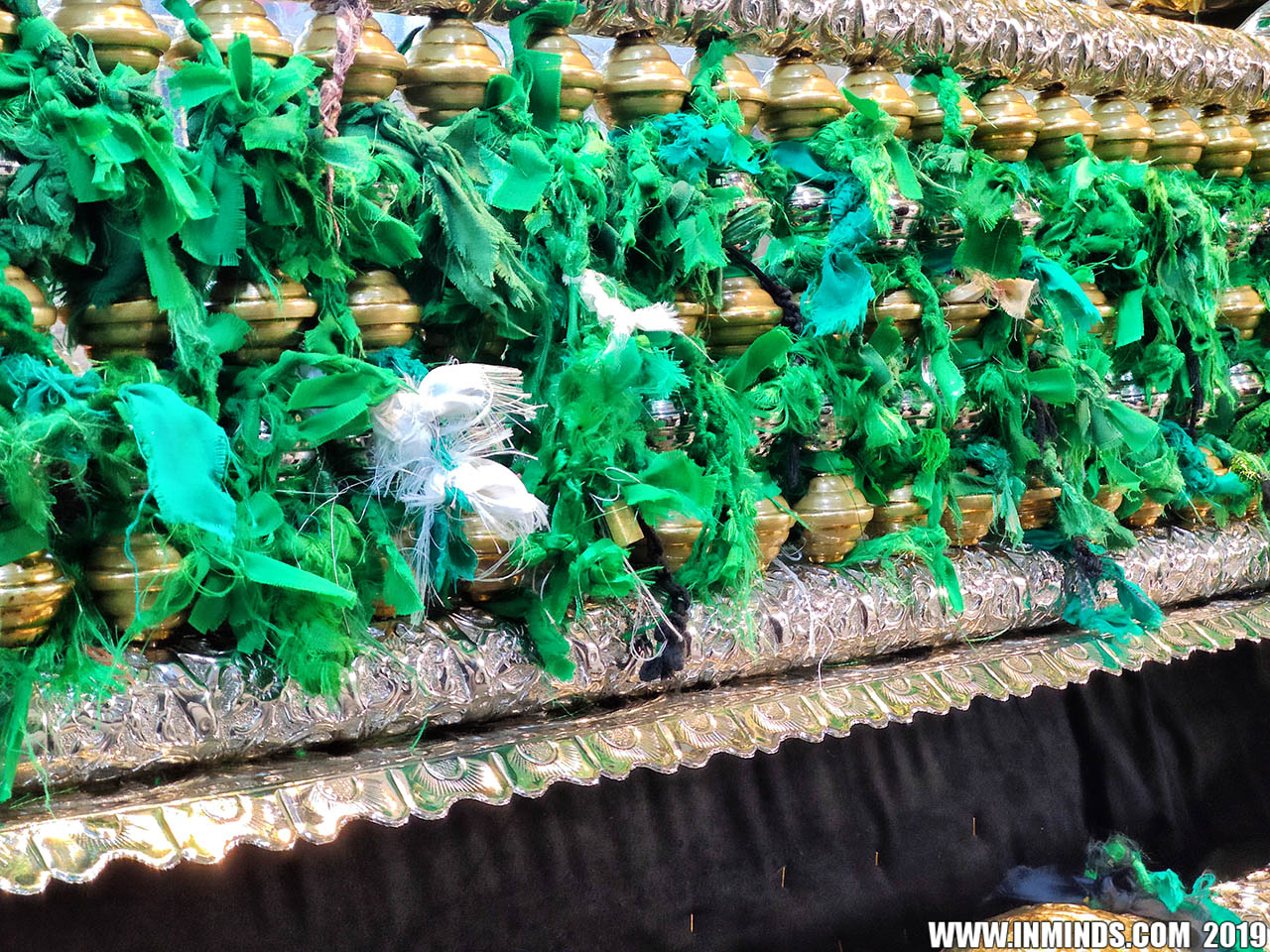 Makam in the markets of Karbala 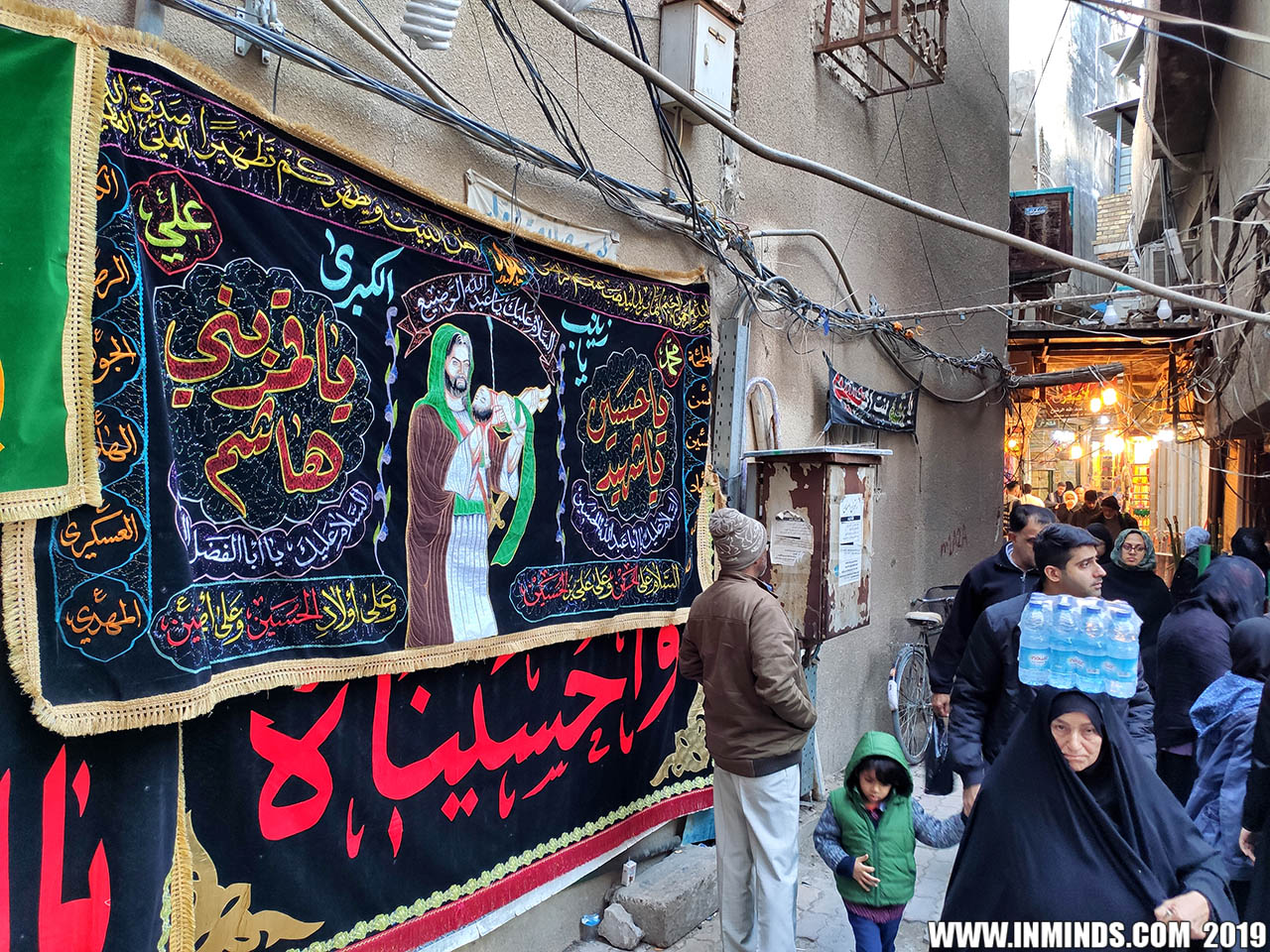 Makam in the markets of Karbala 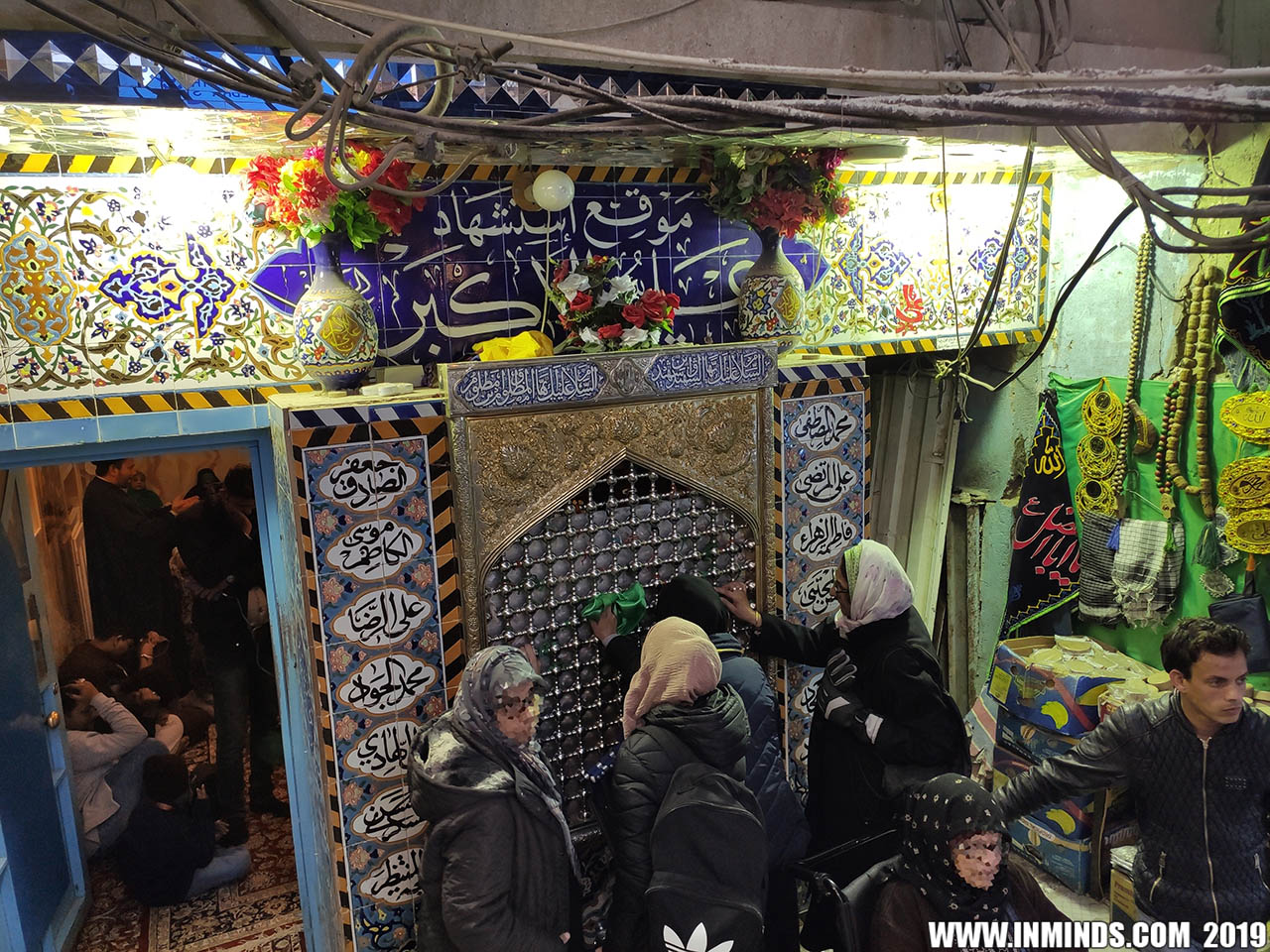 Makam in the markets of Karbala 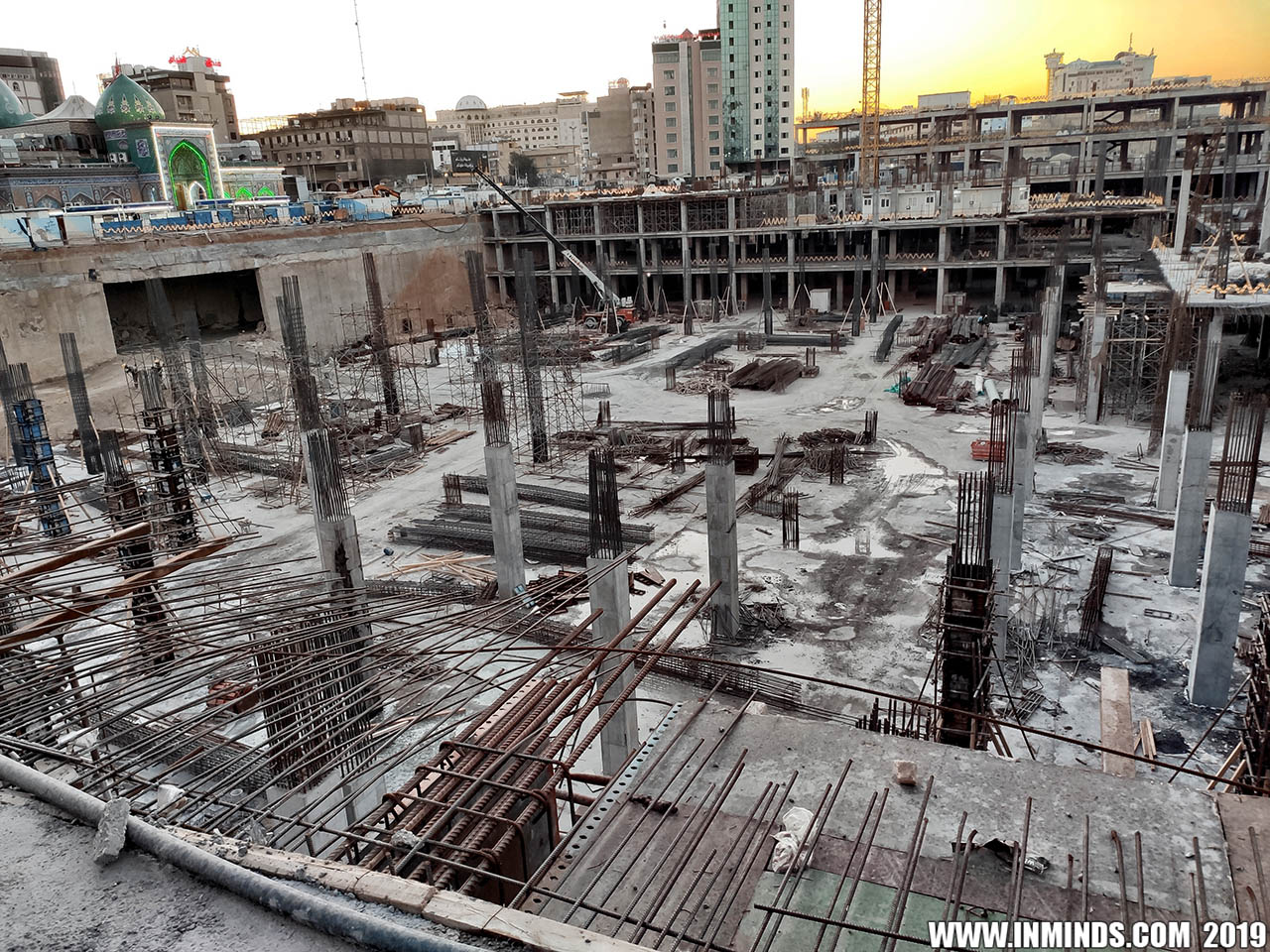 Future expansion near Mosque of Imam Hussain in Karbala 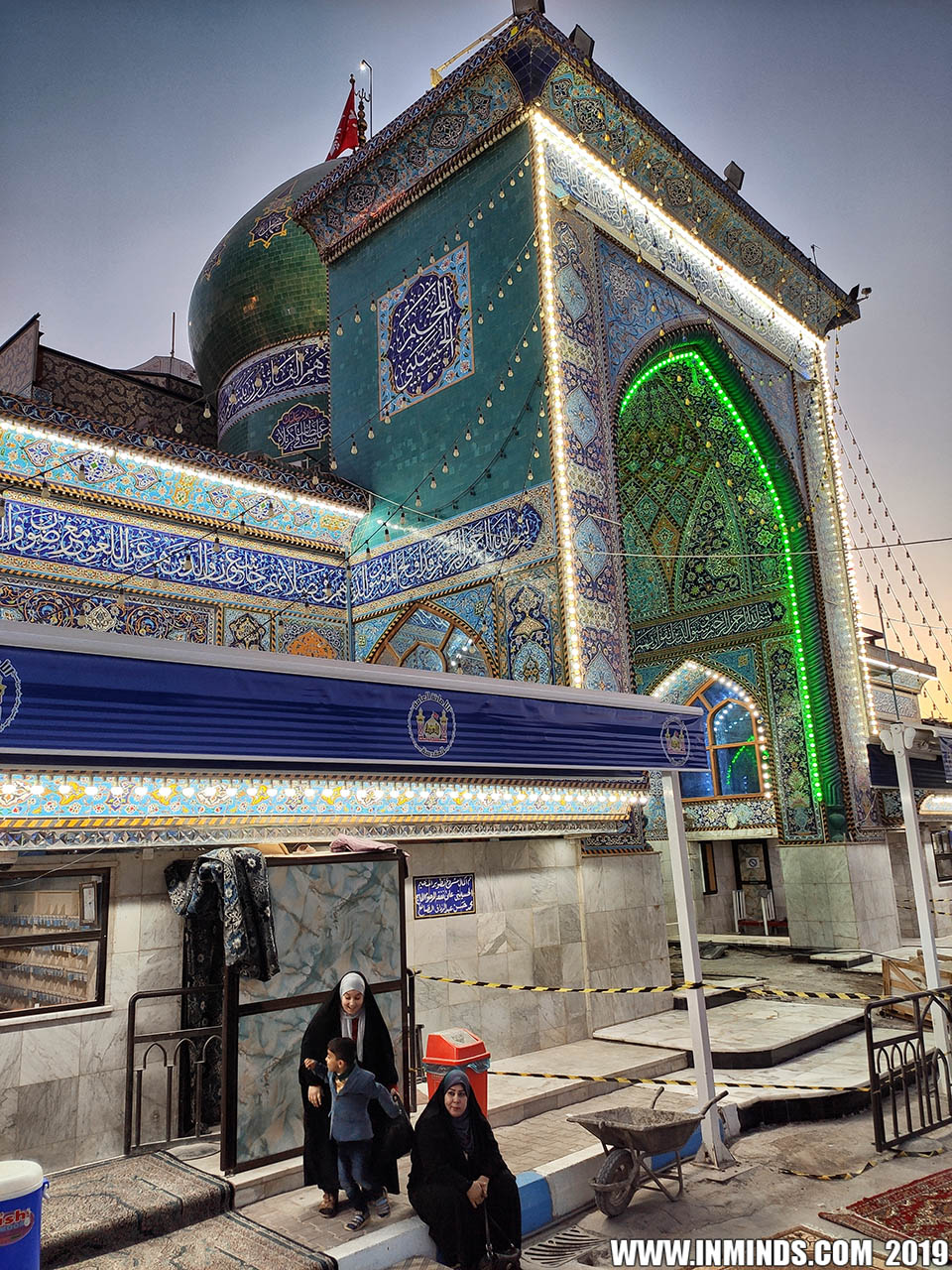 Mosque houses the locations of the tents of Karbala 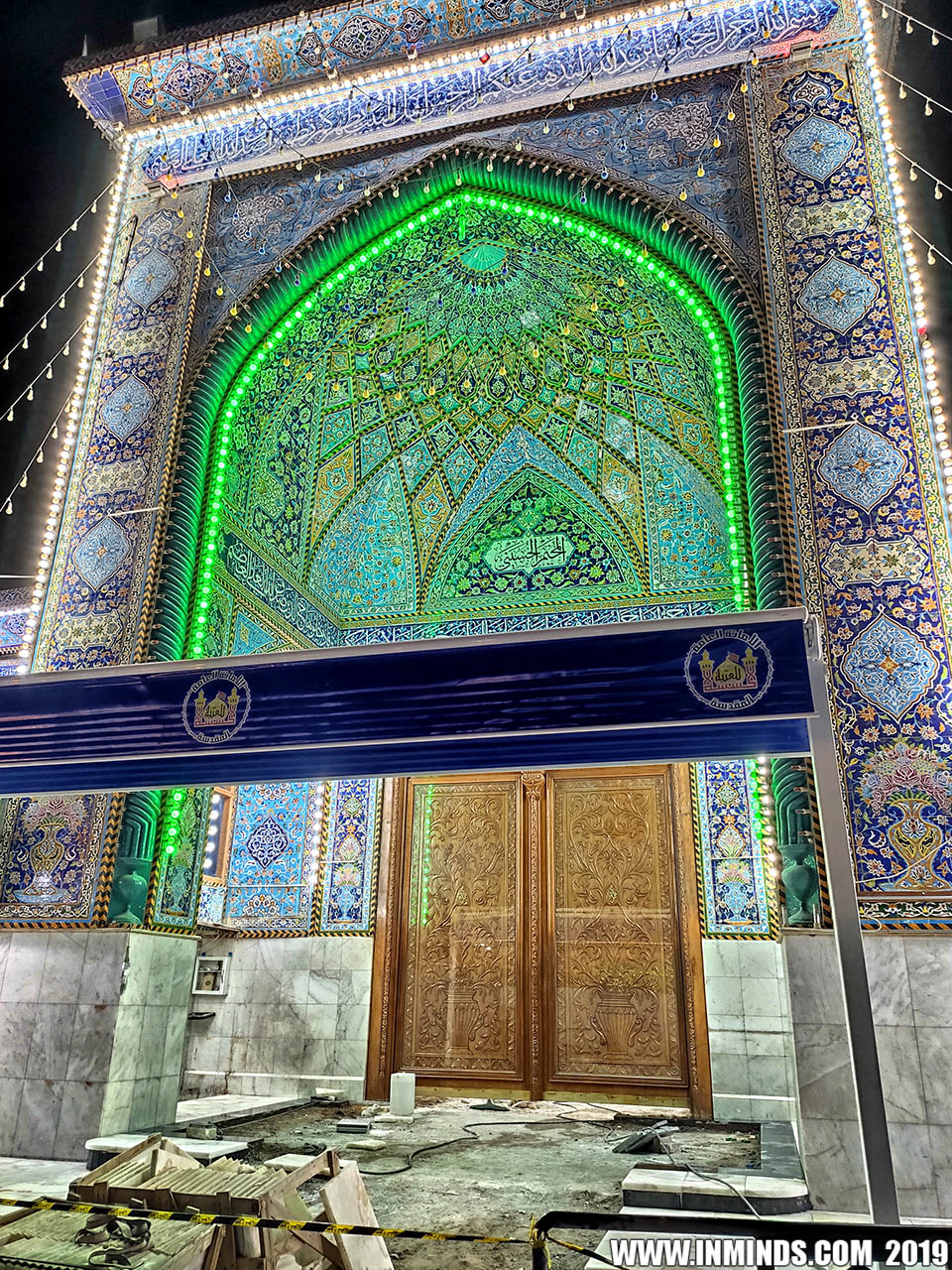 Mosque houses the locations of the tents of Karbala
Source: www.inminds.com Also Of InterestPage URL: http://inminds.com/article.php?id=10864
|
|
Support Us
If you agree with our work then please support us.Campaigns INMINDS Facebook Live Feed Latest Video's
INMINDS Twitter Feed Tweets by @InmindsComFeatured Video's
You need Flash player 8+ and JavaScript enabled to view this video.
[all videos (over 200)..] Featured MP3 Podcast  "[Deportation at the airport] We saw the injured [Turkish] men going through.. a lot had a leg cut out of their trousers or an arm cut out of their top. It had been cut out to treat their wounds.. they were covered in blood, blood that had been there for three days, and some of them had wounds that were still bleeding.. What upset me most was seeing the dozen men, one after another, hobbling across the terminal, with a bandaged foot. I couldn't ask them why so many of them had a bandaged foot, I couldn't ask them what had happened, because if they spoke or if any of us spoke to them the Israelis beat the injured person.. We later found out that they had these injuries on the tops of their feet from when the troops came down from the helicopter on the Mavi Marmara, and they came down firing - they had been shot from above. Some of the men that were killed were shot at close range - head and chest, but a dozen of the men who were shot, among 59 people who were shot, they were shot at the tops of their feet - the bullets were coming down.. They weren't given a wheelchair or a pair of crutches, and if any of the other passengers stood up and tried to offer [help].. that person was dragged away and smacked by these Israelis. The Israeli soldiers sat on the floor, laughed and sniggered and made every one of these Turkish men hobble and hop all the way across, some 200 metres, everyone of them, one by one, made to do that purely for the sick amusement of the Israeli soldiers." Survivor of the flotilla massacre speaks candidly of her experience Ratstar Centre London, 22 July 2010 [46min / 42Mb] [all podcasts..] Newsletter Feedback |
 |
 |




